Nomadic Matt's Travel Site
Travel Better, Cheaper, Longer

Montenegro Travel Guide
Last Updated: September 2, 2023
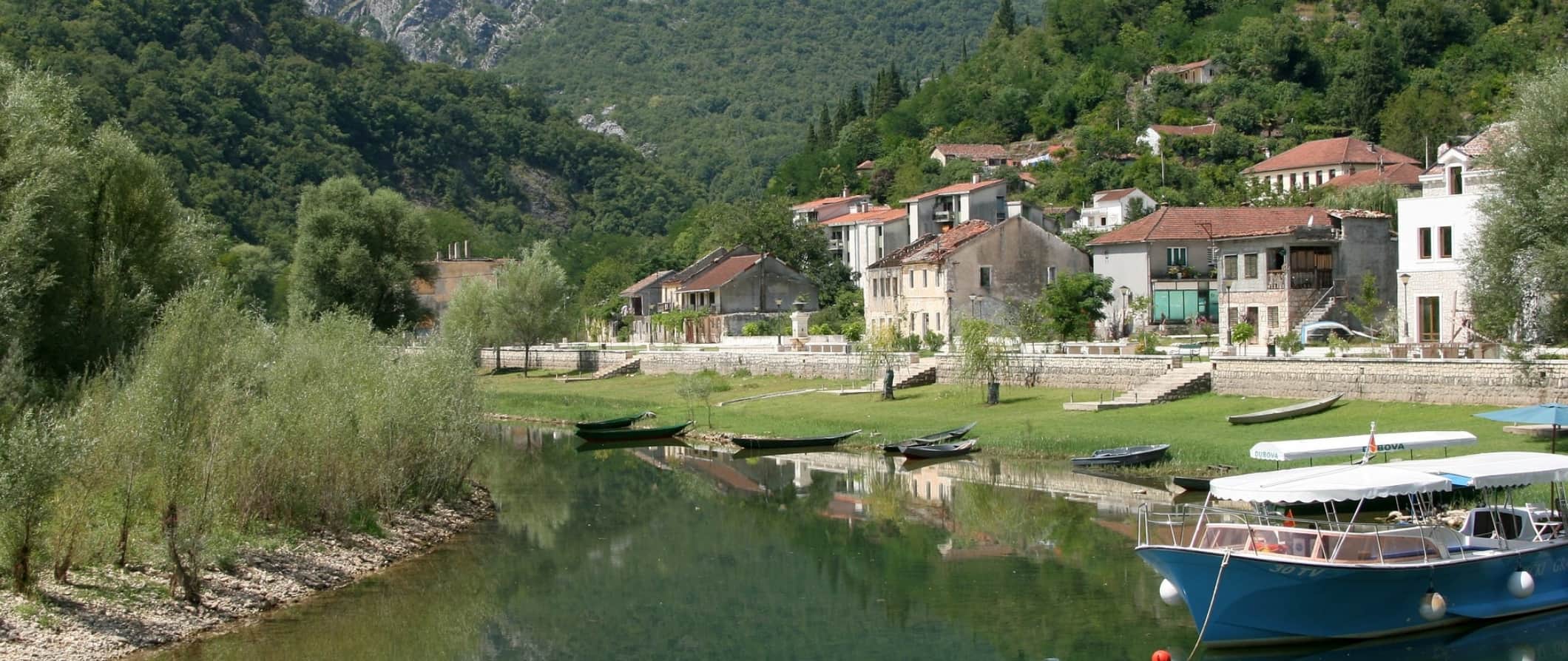
Montenegro is a tiny Balkan country home to rugged mountains, medieval towns, and miles of picturesque beaches. With just over half a million people, Montenegro has become a recent hotspot for backpackers, though it’s still overlooked by most budget travelers.
Offering idyllic gems like Kotor, with its stunning medieval architecture and fjord-like bay, as well as world-class pristine beaches stretching down the Adriatic coast, as the Balkans become one of the most up-and-coming tourist regions in Europe , Montenegro has soared in popularity, especially since it is relatively safe, small, and cheap.
I loved my visit to the country. It’s a beautiful and charming place.
This Montenegro travel guide has everything you need to know to plan your trip, save money, and make the most of your time in this overlooked and underappreciated destination!
Table of Contents
- Things to See and Do
- Typical Costs
- Suggested Budget
- Money-Saving Tips
- Where to Stay
- How to Get Around
- How to Stay Safe
- Best Places to Book Your Trip
- Related Blogs on Montenegro
Top 5 Things to See and Do in Montenegro
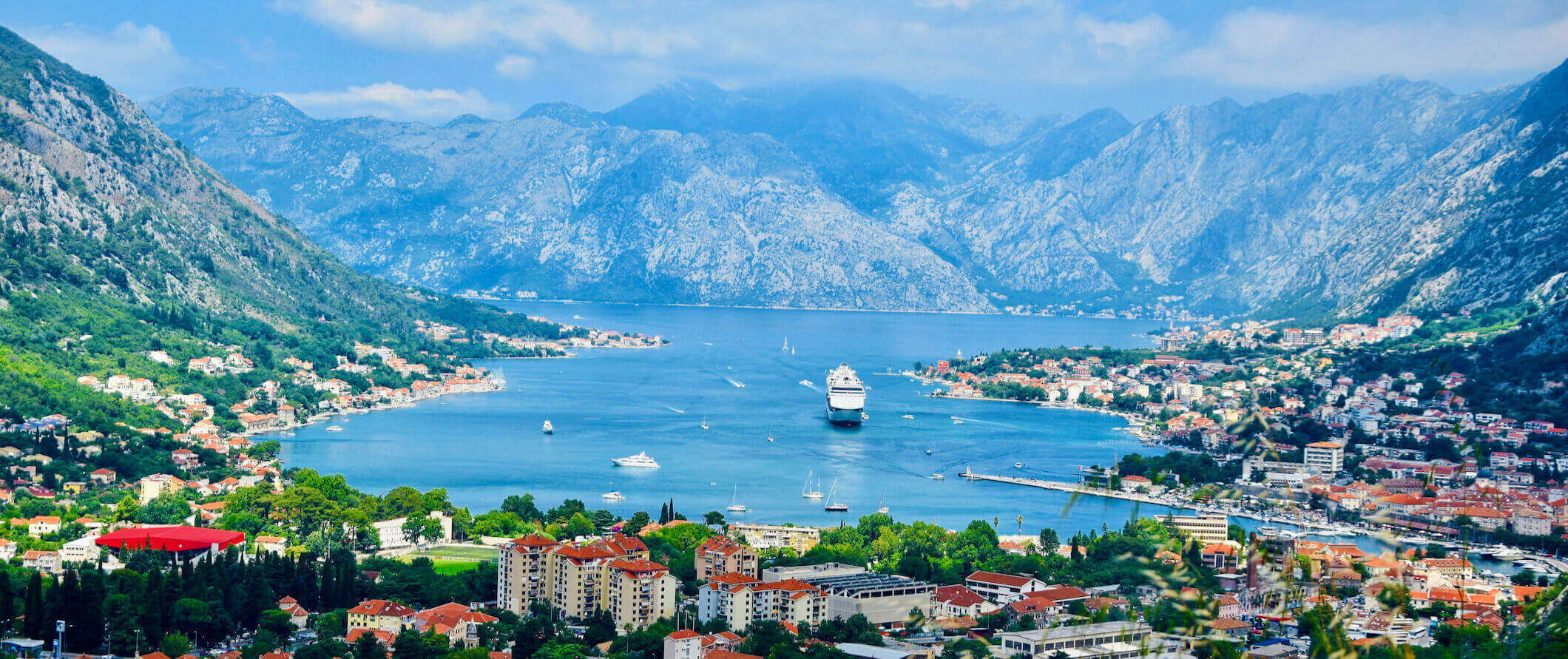
1. Explore Ulcinj
Ulcinj sits on the Adriatic coast and is best known for its long, sandy beaches. In fact, one of the longest beaches in Europe can be found here (Velika plaža). Ulcinj also has a picturesque Old Town (Stari Grad) with gorgeous narrow cobblestone streets, incredible sunset views, and tasty seafood near the city walls. A popular activity is to rent a bike and cycle to Long Beach and spend the day lounging. This beautiful coastal town is the perfect place to spend a few days relaxing and enjoying the water.
2. Hit the beach in Budva
Budva has several beaches as well as coves, cliffs, and islands you can explore. I don’t love the main town itself but the area is incredible. The city is 2,500 years old and a bit of a labyrinth of old narrow streets but it’s definitely a cool place to wander around. Don’t miss the Citadela Fortress, constructed to protect Budva from invaders. Today, the fortress is also a great place to grab a drink and enjoy the scenic views. The Budva Riviera highlights include Jaz Beach, Becici Beach, and Kamenovo Beach. If you want to get away from the main beach crowds, take a boat out to Sveti Nikola, a nearby island, to find incredible turquoise pebble beaches on the shores of a towering cliff. Bring your beach shoes!
3. Visit Kotor
Montenegro is full of beautiful coastal towns, but none are quite as dramatic as Kotor. Home to exquisite sea and mountain scenery as well as historic architecture, the entire town has been declared a UNESCO World Heritage Site. It’s one of the most popular places in the country. This 2000-year-old town has several main attractions including its Old City Wall, fortress San Giovanni, the beautiful Cathedral of St. Tryphon, and the Maritime Museum. Kotor has incredible cuisine due to centuries of influence from the Greeks, Ottomans, the Austro-Hungary empire, and many others. Try local dishes such as rice-stuffed calamari, lamb with peas, and grilled fish. Don’t forget to try the local wines like Krstac, Kratošija, Žižak, and Vranac, as Montenegro is well known for its 50 types of wine and this is a great place to try some.
4. Go hiking in Durmitor National Park
With its sweeping views of forests, lakes, and waterfalls, and the largest canyon in Europe, Durmitor is a nature lover’s dream. The national park makes the perfect outdoor adventure spot for hikers as there are glacial lakes, 50 different peaks, and plenty of beautiful trails to choose from. Some of the most famous hikes include the easy Black Lake and Zminje Lake hike, the moderate Prutaš peak (2,393 meters/7,851 feet), and the hardest, highest peak of Bobotov Kuk (2,523 meters/8,277 feet). Funky Tours offers day trips starting at around 70 EUR including transportation and lunch. Tara Canyon is absolutely stunning, with crystal blue waters surrounded by both rocky shores and tree-lined slopes. And if hiking isn’t your thing, Durmitor is also one of the world’s best locations for climbing and rafting. They also have an adrenaline park in case you want to check out the spectacular scenery from the comfort of a zip line, dirt bike, or ATV. Admission to the nature park is just 3 EUR.
5. Take a wine tour
Other things to see and do in montenegro, 1. go rafting.
Rafting on the Tara River is one of the most popular outdoor activities in Montenegro. Known as the “Tear of Europe,” the river is the fastest in Europe and forms the second deepest canyon in the world (the first being the Grand Canyon) and you can go rafting in easy and moderate conditions while taking in the incredible beauty of the canyon. Prices start at 40-50 EUR for one day of rafting, 70 EUR for two days, and 100 EUR for canyoning. There are multi-day rafting and canyoning combo trips available too.
2. Hike Lovcen Mountain
Lovcen is more than just a mountain to the people of Montenegro, it’s a sacred place and national treasure. Located in the southwest one hour from Kotor, the mountains contain the mausoleum of Petar II Petrovic-Njegoš, a beloved Montenegrin ruler. There is also a national park here with hiking trails, including a day-long hike to Kotor. Admission is 2 EUR. If you have time, head to the nearby village of Njeguši to enjoy some local cheese and smoked ham.
3. Relax at Lake Skadar
Lake Skadar, also known as Lake Shkodër in Albanian, is located in the south along the border with Albania and is the largest lake in southern Europe. There is plenty to see and do here, such as visiting the ancient island prisons and monasteries, exploring the National Park and bird reserves, relaxing on one of the private beaches, and taking a swim in the crystal-clear waters of the lake. Expect to pay around 25 EUR for a one-hour boat rental or 5 EUR per hour for a kayak. Lake cruises start at around 15 EUR.
4. Visit the National Museum of Montenegro
The National Museum of Montenegro is located in Cetinje, the country’s historic capital (the current capital is Podgorica). Established in 1896, it’s composed of several different museums and galleries in one complex. Two of the most popular museums are the Museum of History and the Art Museum. You can easily spend a full day here taking in the exhibitions and learning about the country’s history. Collective tickets cost 8-15 EUR while individual museum tickets are 3 EUR. Cetinje itself, a 15th-century town and also a great place to spend a morning or an afternoon. You can visit the Cetinje Monastery, with its collection of Early-Christian-era relics, and the 15th-century Vlah Church. Also, near Cetinje is Lipa Cave, one of the largest caves in Montenegro.
5. Enjoy the history of Stari Bar
Located in the southwest, this town was once ruled by the Byzantines. Its ruined fortress offers one of the most beautiful views in Montenegro thanks to the stunning backdrop of Mount Rumija. The town itself has been the site of many battles (chiefly against the Ottomans) so it’s been destroyed and rebuilt many times over. There are also the ruins of a 13th-century Franciscan monastery, an 18th-century Turkish bathhouse, and the oldest olive tree in the world (it’s over 2,000 years old). It is just an hour south of Kotor by car.
6. Watch the sunset in Sveti Stefan
Sveti Stefan is a 15th-century village just south of Kotor. Located on the coast, it has a postcard-perfect pink pebbled beach and beautiful clear blue water. While you can’t access the nearby island without staying at the five-star resort that occupies it, the beaches here are perfect for a late afternoon swim and for watching the sunset over the Adriatic Sea. Don’t miss the 600-year-old Praskvica Monastery that overlooks the village.
7. Hit the slopes
Thanks to an average of 120 days of snow each year, Montenegro is the perfect winter sports destination. The ski resorts in Montenegro sit at altitudes of up to 2,181 meters (7,155 feet) and there are over 20 kilometers (12 miles) of slopes to enjoy. The most popular resorts are Savin Kuk on Durmitor mountain or Kolasin 1450 on Bjelasica mountain. Lift passes are some of the cheapest in Europe, ranging from 10-25 EUR per day.
8. Visit the Cat Museum
For a more unconventional museum experience, visit Kotor’s Cat Museum (Museo del Gatto di Cattaro). Located in the Old Town, this small museum is dedicated to cats. It explores the history of Montenegro’s feline friends as Kotor has a noticeably high cat population thanks to its history as a trading port. Cats from all around the world traveled here on ships and were subsequently abandoned. They became an important part of the culture of the city. Admission is 1 EUR and helps support local stray cats.
9. See the Castle of San Giovanni
San Giovanni Fortress in Kotor is one of the city’s historic fortifications. Perched almost 300 meters (984 feet) above sea level, the castle has a taxing 1,355 steps you have to climb to get to it (which takes about an hour). The fortress, also known as St. John’s Fortress, is a UNESCO Heritage Site and dates to the 9th century. It’s one of the best historic remnants in the city. It’s mostly crumbled now, but there are several stone walls, fortifications, and foundations still in place. There are also over 4.5 kilometers (2.8 miles) of defensive walls, some of which are 20 meters (65 feet) tall. There are several viewpoints on the hike too. The admission price through the gate is about 9.50 EUR.
10. Explore the Blue Cave
Located on the Luštica Peninsula just 22 kilometers (13 miles) from Kotor, the famous Blue Cave of Montenegro is only accessible by boat on an organized tour from either Herceg Novi or Kotor. It’s named after the iridescent blue light that shines brightly within the cave. For a 1-2 hour tour of the blue cave (plus other nearby caves) expect to pay around 40-60 EUR per person.
11. Day trip to Perast
Just 20 minutes from Kotor, this stunning village is worth more than the half-day that most people give it (although if that’s all the time you have, it’s better than nothing!). There are 20 Baroque palazzi and 18 churches to see here, including the Church of St. Nicholas and its 55-meter (180-foot) Perast Bell Tower which you can climb to get an excellent view of the town. There’s also a Maritime History Museum here, and if you’re in the mood to relax, there’s a beautiful beach as well as boat tours around the Bay of Kotor.
Montenegro Travel Costs
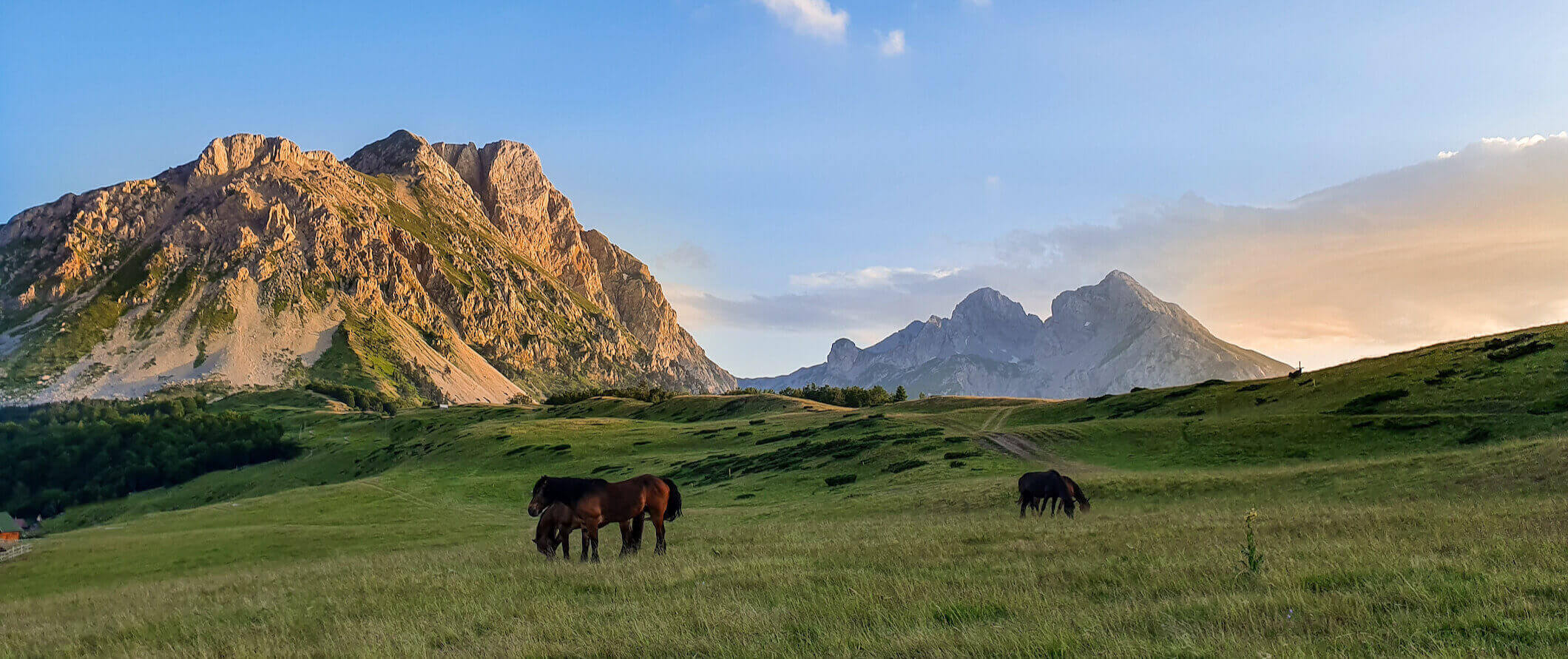
Accommodation – There aren’t tons of hostels in Montenegro since it’s an up-and-coming backpacker spot. Dorm beds start at 12 EUR per night regardless of size or season. Free Wi-Fi is standard as are self-catering facilities. Most hostels do not include free breakfast. For a private room, expect to pay 40 EUR per night.
Budget hotels start at 25 EUR per night in the off-season for a double or twin. In peak season they start at 30-60 EUR per night. Free Wi-Fi is standard and many budget hotels also include free breakfast.
Airbnb is available in the main cities and towns around the country with private rooms starting at 20-25 EUR per night. For an entire home or apartment, expect to pay at least 40-65 EUR per night.
For anyone traveling with a tent, there are a fair number of campsites around Montenegro. A basic plot without electricity costs around 14-20 EUR per night for two people. Wild camping is illegal.
Food – Food in Montenegro is different from its Balkan neighbors, owing to heavier Mediterranean and Italian influences. Expect to see a lot of pizza and pasta restaurants when you’re in the cities. Also, look out for popular favorites like cevapcici (grilled kebabs), sarma (cabbage leaves stuffed with meat), and goulash. On the coast, seafood is readily available.
For a quick on-the-go snack, try burek a Turkish pastry filled with meat or cheese (they typically cost a couple of euros). For inexpensive traditional cuisine, expect to pay 6 EUR for a main dish. For fast food, expect to pay around 5-6 EUR for something like a burger and fries.
If you want to splash out, a three-course dinner at a mid-range restaurant costs around 15 EUR. For something extremely filling, try karadorde vasnicla , a breaded veal cutlet roll stuffed with cheese.
Beer costs 2 EUR while a latte or cappuccino costs 1.50 EUR. Bottled water is less than 1 EUR.
If you are planning to cook your own food, a week’s worth of groceries costs 25-35 EUR for basic staples like pasta, rice, seasonal produce, and some meat or fish.
Backpacking Montenegro Suggested Budgets
On a backpacker’s budget of 40 EUR per day, you can stay in a hostel dorm, cook all of your meals, limit your drinking, take public transportation to get around, and stick to mostly free activities like relaxing at the beach or hiking. If you plan on drinking, add 5-10 EUR to your daily budget.
On a mid-range budget of 95 EUR, you can stay in an Airbnb, eat out for most of your meals, enjoy a few drinks, take the occasional taxi to get around, and do more paid activities like rafting or canyoning.
On a “luxury” budget of 185 EUR per day, you can stay in a hotel, eat out for all your meals, drink more, rent a car or take more taxis, and do whatever tours and activities you want. This is just the ground floor for luxury though. The sky is the limit!
You can use the chart below to get some idea of how much you need to budget daily, depending on your travel style. Keep in mind these are daily averages — some days you’ll spend more, some days you’ll spend less (you might spend less every day). We just want to give you a general idea of how to make your budget. Prices are in EUR.
Montenegro Travel Guide: Money-Saving Tips
Montenegro is affordable so you won’t break the bank here unless you want to splash out. That said, it never hurts to save more money! Here are a few ways to save while you’re traveling Montenegro:
- Take a free walking tour – Kotor and Budva both offer free walking tours. They’re my favorite way to get familiar with a new city and culture while connecting with a local guide who can answer all my questions. Just be sure to tip your guide at the end!
- Cook your own meals – Many hostels here have kitchen facilities so if you want to save money make sure you book accommodation with a kitchen. Buying groceries may not be glamorous but it definitely saves you money!
- Stay with a local – Staying with a local via Couchsurfing is a great way to save money and connect with a knowledgeable local who can share their insider tips and advice.
- Walk everywhere – Most of the major towns and cities in Montenegro are walkable. Skip the public transportation if you want to save a few euros. And definitely skip the taxis!
- Enjoy the free spaces – There are plenty of free parks as well as many free hiking trails around the country. Save your money and enjoy the outdoors for free.
- Bring a water bottle – The tap water here is generally safe to drink so bring a reusable water bottle to save money and reduce your plastic use. LifeStraw is my go-to brand as their bottles have built-in filters to ensure your water is always clean and safe.
Where to Stay in Montenegro
Even though Montenegro is small there are tons of hostels around the country. Here are some of my favorite places to stay in Montenegro:
- Pupa Hostel (Kotor)
- Hostel Centrum (Kotor)
- Old Town Hostel (Kotor)
- Freedom Hostel (Budva)
- Hostel Center (Ulcinj)
- Hostel Anton (Tivat)
How to Get Around Montenegro
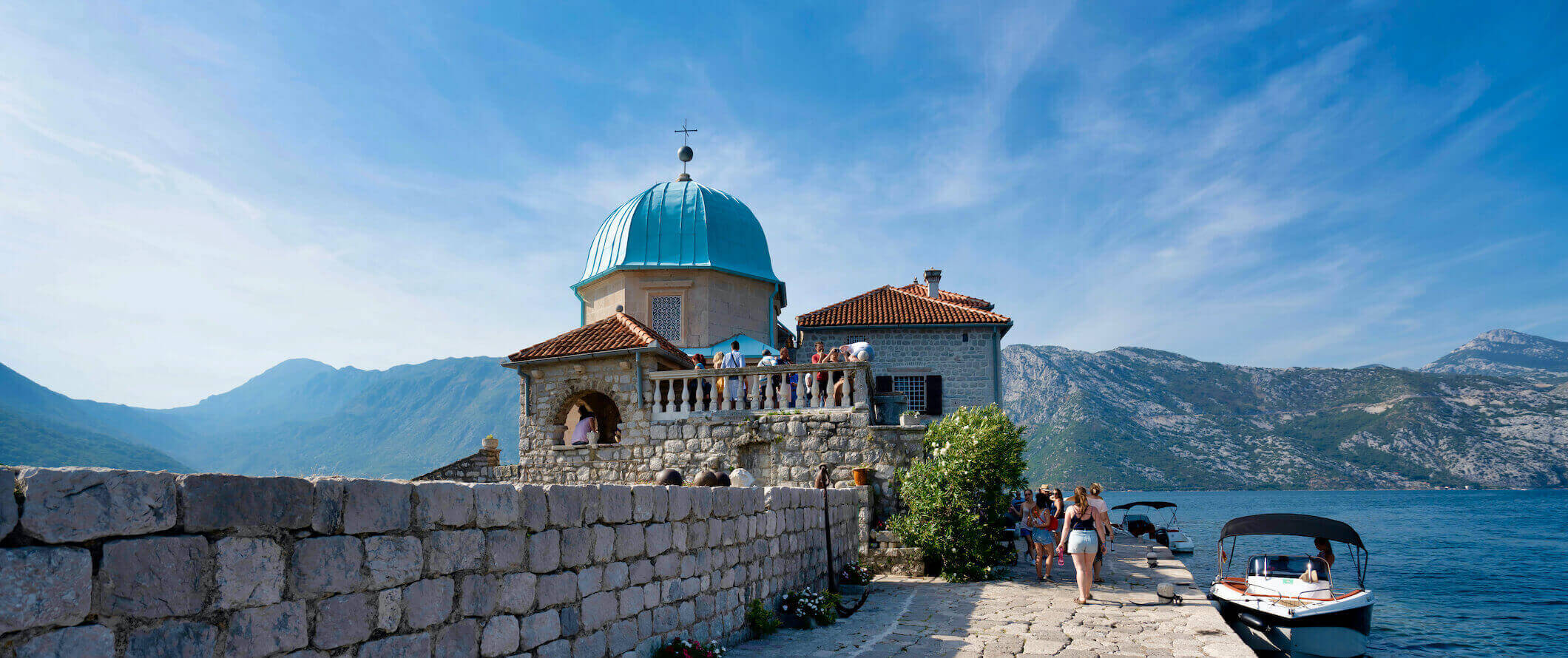
Public transportation – Public transportation prices vary by city, but expect to pay around 1 EUR for a standard adult bus ticket.
Bus – Montenegro has an extensive intercity bus network that is comfortable and reliable. You can often save money by buying your ticket directly from the driver as prices are sometimes cheaper when buying tickets right as you’re looking to leave. However, if you are traveling during the summer, it’s worth booking in advance to ensure you get a seat.
The bus from Kotor to Budva takes around an hour and costs as little as 5 EUR while the bus from Kotor to Ulcinj takes around 4.5 hours and costs around 10 EUR. Kotor to Dubrovnik, Croatia takes around 3-4 hours and costs 19-25 EUR.
Taxi – Taxis fares in Montenegro start at 1 EUR and go up by around 0.80 EUR per kilometer. Since they can add up fast, I’d skip the taxis if you can.
Train – The railway in Montenegro is old and not modernized at all. I would not advise train travel within Montenegro as the buses are nicer, faster, and far more reliable.
To enter and exit Montenegro, Montenegro Railways has a service that takes you north into Serbia all the way to Belgrade. It’s a 10-hour trip and costs around 29 EUR.
Flying – There are no domestic flights within Montenegro.
Car rental – Car rentals can be as low as 15-20 EUR per day for a multi-day rental. Just make sure you have an International Driving Permit (IDP) as you need one to rent a vehicle. Also, be aware that the roads here are in rough shape and that drivers can be on the aggressive side.
For the best car rental prices, use Discover Cars .
When to Go to Montenegro
The best time to visit Montenegro is between April and September. Peak season is July and August when the weather is warmest. Daily highs in the summer are usually around 31°C (89°F).
If you’re on a budget and want to beat the summer crowds, the best time to visit is either June or September. You still have the heat but there are fewer crowds and it’s not sweltering. For hiking and outdoor activities, consider September-October as the national parks look particularly pretty as the leaves change.
Winters are cold, especially if you go inland where there is more of a sub-alpine climate, offering heavy rainfall and snow. Unless you plan on skiing, I’d avoid visiting in the winter.
How to Stay Safe in Montenegro
Although Montenegro is a relatively safe country, scams and pickpocketing can occur, especially in Kotor, Budva, Sveti Stefan, and Herceg Novi. Be vigilant in tourist areas and while on crowded public transportation and always keep your valuables secure and out of sight.
If you have a purse or shoulder bag, wear it across your body and not just over one shoulder so it can’t be easily torn off and stolen.
Solo female travelers should generally feel safe here, however, the standard precautions apply (never leave your drink unattended at the bar, never walk home alone intoxicated, etc.).
If you’re renting a car, be aware that many of the roads are in rough condition. Drive slowly and cautiously — even if the locals aren’t. Additionally, don’t leave any valuables in your vehicle overnight. While break-ins are rare, it’s better to be safe than sorry.
If you’re checking a bag on a bus, don’t leave any valuables in it just in case it gets taken or misplaced.
If you’re doing any mountainous hikes, be sure to check the weather in advance and bring appropriate gear/clothing. It’s colder and windier at higher altitudes.
Unfortunately, organized crime has a strong foothold here. While the majority of their activities won’t impact you, some beggars have been known to take part in schemes wherein they provide information to thieves and pickpockets based on who gives them money. Don’t give money to beggars to avoid complications.
You can read about common travel scams to avoid here.
There are a lot of unexploded land mines near the border with Kosovo. If you are exploring that area, be sure to stick to the main roads and don’t head off into the brush.
If you experience an emergency, dial 122 for assistance.
The most important piece of advice I can offer is to purchase good travel insurance. Travel insurance protects you against illness, injury, theft, and cancellations. It’s comprehensive protection in case anything goes wrong. I never go on a trip without it as I’ve had to use it many times in the past. You can use the widget below to find the policy right for you:
Montenegro Travel Guide: The Best Booking Resources
These are my favorite companies to use when I travel. They consistently have the best deals, offer world-class customer service and great value, and overall, are better than their competitors. They are the companies I use the most and are always the starting point in my search for travel deals.
- Skyscanner – Skyscanner is my favorite flight search engine. They search small websites and budget airlines that larger search sites tend to miss. They are hands down the number one place to start.
- Hostelworld – This is the best hostel accommodation site out there with the largest inventory, best search interface, and widest availability.
- Booking.com – The best all around booking site that constantly provides the cheapest and lowest rates. They have the widest selection of budget accommodation. In all my tests, they’ve always had the cheapest rates out of all the booking websites.
- HostelPass – This new card gives you up to 20% off hostels throughout Europe. It’s a great way to save money. They’re constantly adding new hostels too. I’ve always wanted something like this and glad it finallt exists.
- Get Your Guide – Get Your Guide is a huge online marketplace for tours and excursions. They have tons of tour options available in cities all around the world, including everything from cooking classes, walking tours, street art lessons, and more!
- The Man in Seat 61 – This website is the ultimate guide to train travel anywhere in the world. They have the most comprehensive information on routes, times, prices, and train conditions. If you are planning a long train journey or some epic train trip, consult this site.
- Rome2Rio – This website allows you to see how to get from point A to point B the best and cheapest way possible. It will give you all the bus, train, plane, or boat routes that can get you there as well as how much they cost.
- FlixBus – Flixbus has routes between 20 European countries with prices starting as low 5 EUR! Their buses include WiFi, electrical outlets, a free checked bag.
- SafetyWing – Safety Wing offers convenient and affordable plans tailored to digital nomads and long-term travelers. They have cheap monthly plans, great customer service, and an easy-to-use claims process that makes it perfect for those on the road.
- LifeStraw – My go-to company for reusable water bottles with built-in filters so you can ensure your drinking water is always clean and safe.
- Unbound Merino – They make lightweight, durable, easy-to-clean travel clothing.
- Top Travel Credit Cards – Points are the best way to cut down travel expenses. Here’s my favorite point earning credit cards so you can get free travel!
Montenegro Travel Guide: Related Articles
Want more info? Check out all the articles I’ve written on backpacking/traveling Europe and continue planning your trip:

The 6 Best Hotels in Copenhagen

The 6 Best Hotels in Florence

The 7 Best Hotels in Madrid

The 6 Best Hotels in Vienna

The Best Walking Tours in Barcelona

How to Be a Digital Nomad in Europe
Get my best stuff sent straight to you, pin it on pinterest.
- Where To Stay
- Transportation
- Booking Resources
- Related Blogs

Shape your Montenegro Story
What excites you? Find inspiration by choosing images that charm you.
See what's on right now
It's time to log out of all of your devices and come here to relax, eat organic food, and swim in clear, healing sea water while breathing fresh mo...
Eat like a local
Montenegrins traditionally prepare dishes from mutton and lamb, as well as quality pork, beef, and fish. How do they like to "season" their meals?...
Kotor Cable Car
Discover unique montenegro.
So small you could drive across it in an afternoon . Which gives you opportunity not just skim through it but to truly absorb the essence and authenticity .
Seaside Jewels of the Adriatic
Explore the area of the Bay of Kotor and the Montenegrin coast with its enchanting beaches, mighty mountains, and ancient cities that bear the historical marks of Roman, Venetian and Byzantine conquerors!
Hidden gem Relaxation in the untouched nature of Montenegro
Your authentic experience will take you on a journey to wild beauty and striking landscapes throughout Montenegro.
Adventure Tara Canyon
Tara Canyon provides you with invigorating and close-up contact with nature. One of the most immersive ways to experience the canyon is to raft or kayak down the length of it. Prepare for a blast of adrenaline!
Hidden gem Meet the makers
Visit Montenegrin workshops to not only learn how traditional goods are made, but also get involved in the crafting process itself. The stories of Montenegrin craftsmen will captivate you.
A place to visit a year-round
Although small country it is incredibly diverse. See how much it can offer you
Meetings Special offers
Want us to give you some ideas for a dream vacation? See offers for lively activities in nature, as well as delectable food and cultural tours.
Adventure Cool & quirky events
Check out the event calendar and stay up to date with all events happening throughout Montenegro - from live music concerts to theaters and carnivals.
Winter Winter
Despite the fact that Montenegro is most often associated with summer vacations, you can enjoy a fantastic mix of winter adventures.
Spring Spring
Montenegro's natural beauty awaits you!
Summer Summer
Are you looking forward to a rush of adrenaline while on vacation? Montenegro is your top choice for the coast, and for good reason!
Autumn Autumn
The unique beauty of the incredible Balkan country is waiting for you to discover!
Looking for ideas for your trip?
See how others experienced their time in Montenegro. We would love hearing from you - share your Montenegro moments with following hashtag: #MontenegroWildBeauty #GoMontenegro
So small you could drive across it in an afternoon. Don’t just skim through it but try to truly absorb it’s essence.
Explore destination year-round
Although small country it is incredibly diverse. See how much it can offer you:
Travel responsibly
Did you know? In 1991, the Montenegrin authorities adopted a declaration by which the country became the first ecological state in the world .
Keys for Understanding Montenegro
Meet cultural heritage (unesco), try organic adventure, privacy settings.
Here you will find an overview of the types of cookies used on the website. You can set your consent for each category individually.
Website accessibility CTRL + U
Keyboard shortcuts.
Show only images
Montenegro Travel Guide
Adventurous Kate contains affiliate links. If you make a purchase through these links, I will earn a commission at no extra cost to you. Thanks!
If you’re curious about Montenegro travel, you’ve come to the right place. I love teaching people about traveling in the Balkans, one of my favorite regions in the world, and especially telling people what it’s like to travel to Montenegro!
I loved Montenegro from the moment I first visited in 2012. How could this tiny country be so incredibly stunning? So many rugged mountains and clear teal lakes, so many fun adventure activities and picture-perfect old towns.
And from that first trip, I’ve kept coming back to Montenegro — for music festivals and mountain climbing, birthday celebrations and rafting trips, monastery-hopping and swimming in the Bay of Kotor.
This may be a small country — but it has so much to offer.
Here are things you need to know about Montenegro travel. (And don’t forget to check out my guide to the best things to do in Montenegro , too!)
Table of Contents
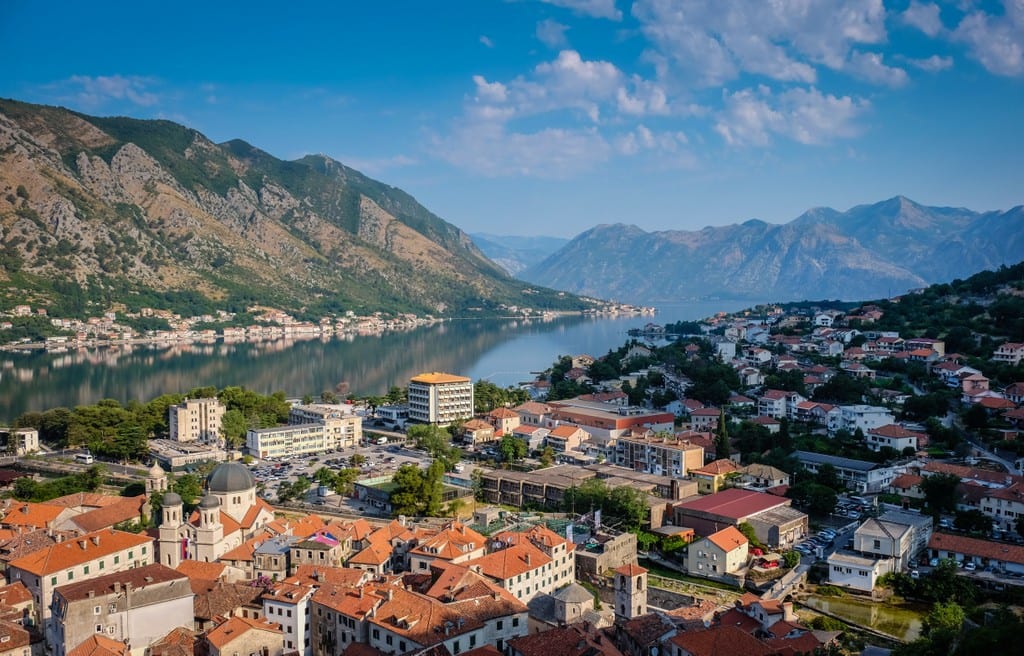
Montenegro is one of the most beautiful countries in the world.
I have frequently called Montenegro the most beautiful country in the world — or the most beautiful country in Europe. That’s high praise — and I don’t give it out lightly. (And yes, I’ve been to Iceland, Norway, Switzerland, you name it.)
While Croatia’s Adriatic coastline might get all the hype, Montenegro’s coastline has quite a bit of beauty as well. The Bay of Kotor is nothing short of spellbinding, with lush green mountains crashing down into clear teal water.
But that’s just the bay (which also happens to be the southernmost fjord in Europe). There are also the mountains. Once you head further inland, Montenegro is filled with stunning gray mountains interspersed with little tufts of greenery.
In fact, Montenegro’s name (Crna Gora) means Black Mountain, and was named for the dense evergreen forests on Mount Lovcen.
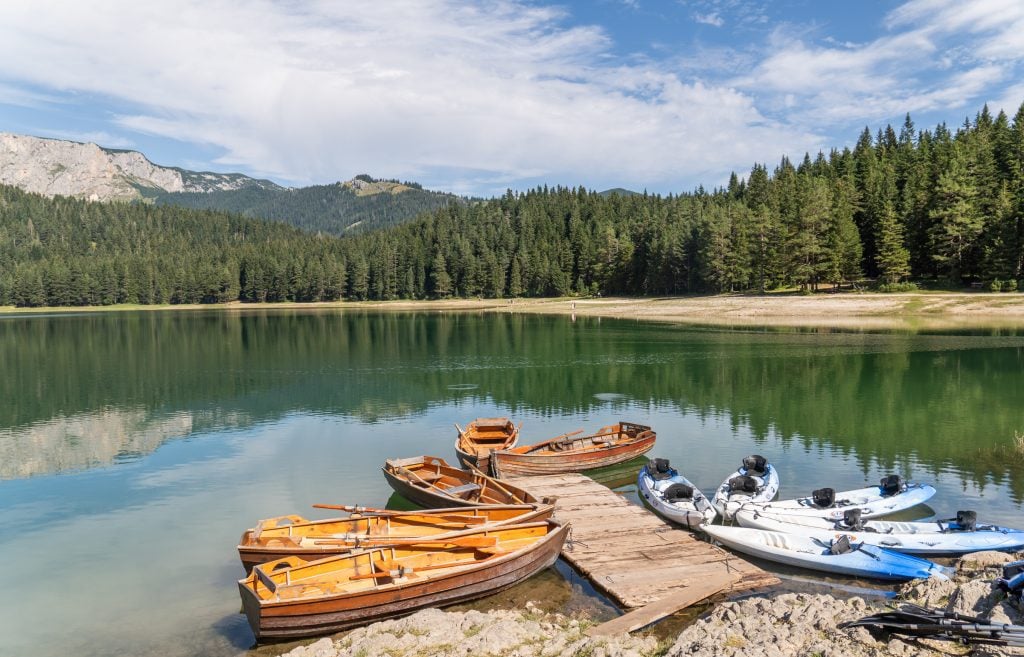
Where to go in Montenegro
Not super familiar with Montenegro? Check out my list of 30 best things to do in Montenegro . Here are some of the best places to visit in the country:
Bay of Kotor: This spectacularly gorgeous bay is the most touristed part of the country. Many, many day-trippers come over from Dubrovnik, and plenty more travelers just pop into Kotor and pop out a few days later. Cruise ship travelers base in Kotor as well.
Kotor is the most famous town to visit in the region and makes a good base for exploring both Kotor Bay and Montenegro as a whole. A tiny town close to Kotor is Perast , and gets a lot of day-trippers but also makes a good base for a few days. Herceg Novi is a big resort town close to the Croatian border; Tivat is home to the region’s international airport and gets a lot of moneyed yacht visitors.
A bit more inland but close to the bay, you have Lovćen National Park and the old royal capital of Cetinje , both worth a visit.
Budva Riviera: Budva is a major beach town in Montenegrin coast that has been drawing huge crowds of tourists for decades (and attracts lots of Russians in particular). This part of the country is home to high quality beaches . Some towns to visit beyond Budva itself include Sveti Stefan and Petrovac .
Northern Montenegro: This part of Montenegro is mountainous and rural, and is home to national parks including UNESCO World Heritage-listed Durmitor National Park , home to Black Lake and Tara River Canyon rafting, and, further east, beautiful and underrated Biogradska Gora National Park .
Central Montenegro: Central Montenegro is one of the lesser-visited parts of the country, but there are some cool places to visit here, like Ostrog Monastery , set into a rocky cliff.
Southern Montenegro: If Montenegro is shaped like a diamond, the bottom quadrant is home to quite a few various sites.
Here you have the scruffy yet popular beach towns of Bar and Ulcinj , which are a bit scruffier than the Budva Riviera and draw a more local Montenegrin and Albanian crowd. The current Montenegrin capital of Podgorica doesn’t have much to see, but nearby Stari Bar is a bit of a ghost town with ruins that were wrecked in the 1979 earthquake.
Skadar Lake National Park is home to the largest lake in the Balkans and is a very interesting place to spend an afternoon.
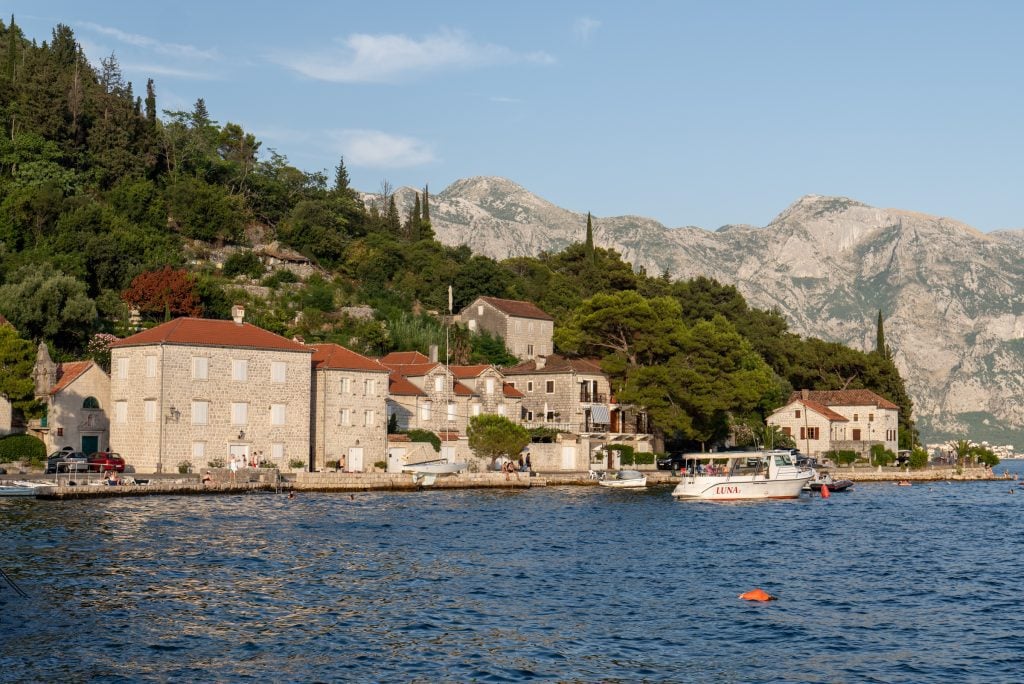
Is Montenegro the new Croatia? Not really.
Everyone loves to declare places the “new” something. Riga is the new Prague! Medellín is the new Chiang Mai! Mahahual is the new Playa del Carmen! And plenty of people have been calling Montenegro the new Croatia for years. (And, in turn, Albania the new Montenegro.)
Is that true? I don’t really think so. While Montenegro might have similar dramatic coastline, along with rocky but not sandy beaches, Montenegro is light years away from Croatia in terms of infrastructure for travelers.
What does that mean? There are no ride-sharing apps that work in the country, buses won’t honor internet-purchased tickets unless you print them out, the highways have a single lane in each direction and get backed up, and while there are some nice hotels here, most accommodation tends to be at a more basic level. Many tourism businesses don’t have much of an online presence, either, beyond a WhatsApp number to call.
I’m not saying this to insult Montenegro — far from that! I love it here. Just know before you come that travel here is a lot more basic — especially if you’re used to traveling in Western Europe.
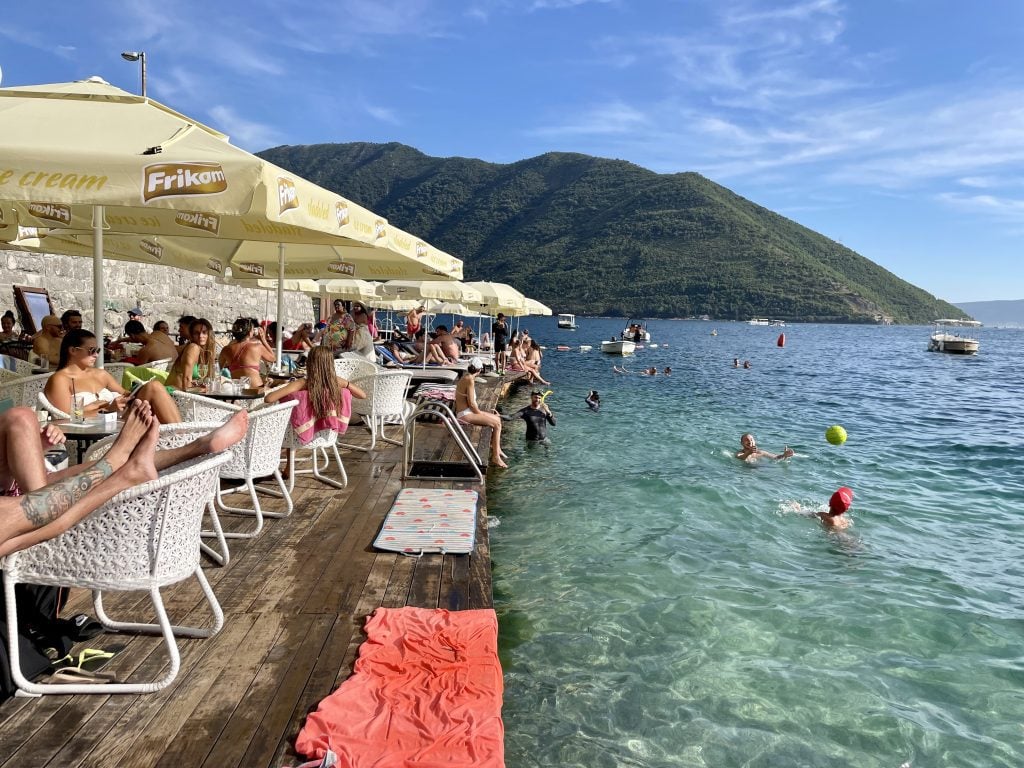
When’s the best time to visit Montenegro?
To me, Montenegro is a quintessential summer destination. Between swimming in the Adriatic Sea, hiking through the mountains, and hopping through the gorgeous towns, Montenegro is like drinking in sunshine. That’s why I wanted to return for my recent birthday in August.
Montenegro has a Mediterranean climate, though much of the weather depends on the elevation. The coastal regions tend to be much warmer and rainier than the inland mountain regions, which are cooler and get a good amount of snow in the winter months.
July and August are peak season in Montenegro; June through September is high season. However, I don’t recommend visiting during July or August if you don’t have to. I most recently visited in August and the traffic along the coastline was NUTS. Cruise ships were NONSTOP. The towns were PACKED. Taxis were charging INSANE prices (more on that below).
If you enjoy summer weather, I recommend visiting Montenegro from early to mid-June or mid-September to early October. It will still be summery and gorgeous — just a lot more peaceful of an experience!
What about shoulder season? Absolutely! If you don’t care about swimming in the sea or sunning yourself, spring and fall can be great times of year to travel in Montenegro. Shoulder season is especially good for hiking and outdoor adventure.
Winter will be very quiet, with many businesses on the coastline closed — but it’s a great time for skiing in the mountains. Skiing in Montenegro is absolutely a thing (look to the Dinaric Alps), and it will cost you a fraction of what you’d pay in the Swiss or Italian Alps.
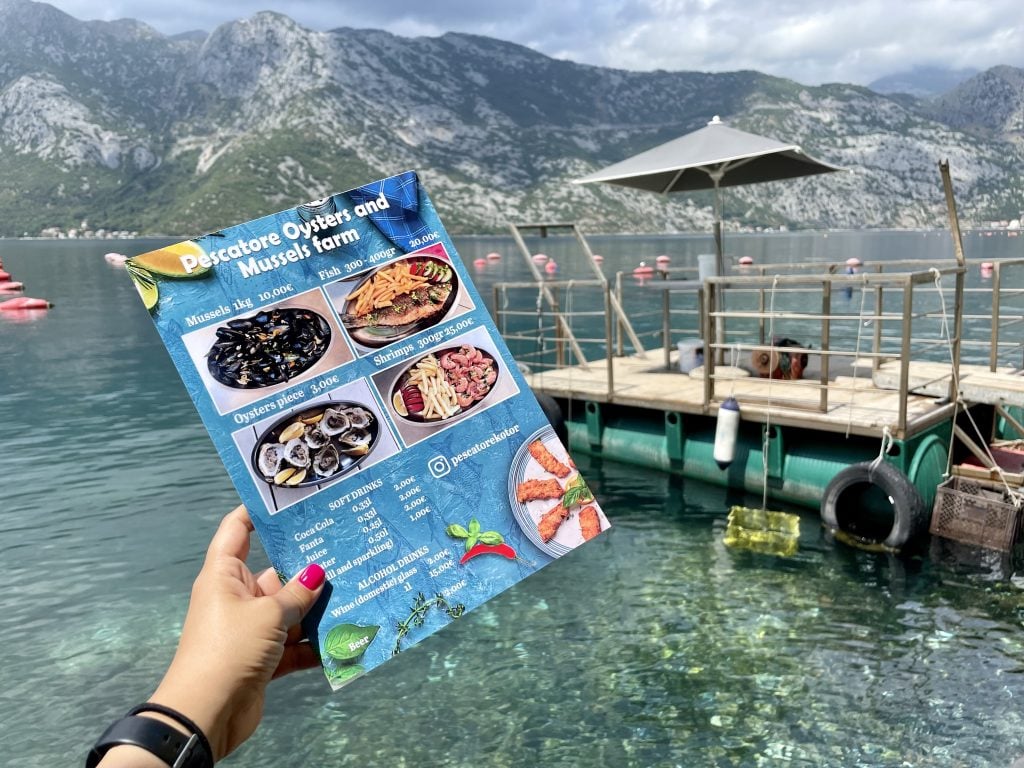
Is Montenegro expensive or cheap? Yes.
For decades, guidebook authors have been encouraging Europe travelers on a budget to head east. You’ll get far more for your money in Budapest than Paris!
The reality of that today? KIND of true, but not always. (After all I live in Prague, once a famously cheap European getaway, but now I often spend less in Italy than I do in Prague. Italy!!)
The Western Balkans — consisting of the former Yugoslavia and Albania — often get you quite a bit for your money. North Macedonia, Serbia, Bosnia, Kosovo, and Albania are very budget-friendly destinations, while Slovenia has grown more expensive and much of Croatia has become significantly more expensive, especially Dubrovnik.
So how expensive is Montenegro? It depends on where you go.
Kotor and Perast? Very expensive. These popular hotspots on the Bay of Kotor get a lot of tourism, and thus prices are driven far up. Budva and its southern beaches are only a bit cheaper than Kotor and Perast, though there are some deals to be had.
Southern beach destinations in Montenegro like Ulcinj and Bar that draw local visitors are a bit shabbier and a good amount cheaper than the beaches further north.
But once you head deep into inland Montenegro — think Durmitor National Park and Biogradska Gorda — prices drop significantly and are more on par with Serbian prices. Even heading slightly inland from the coast can make a big difference in prices.
It’s the same as anywhere else in the world: cities, coastal destinations, and tourist hotspots tend to be most expensive. Rural, inland, less popular destinations tend to be cheaper.
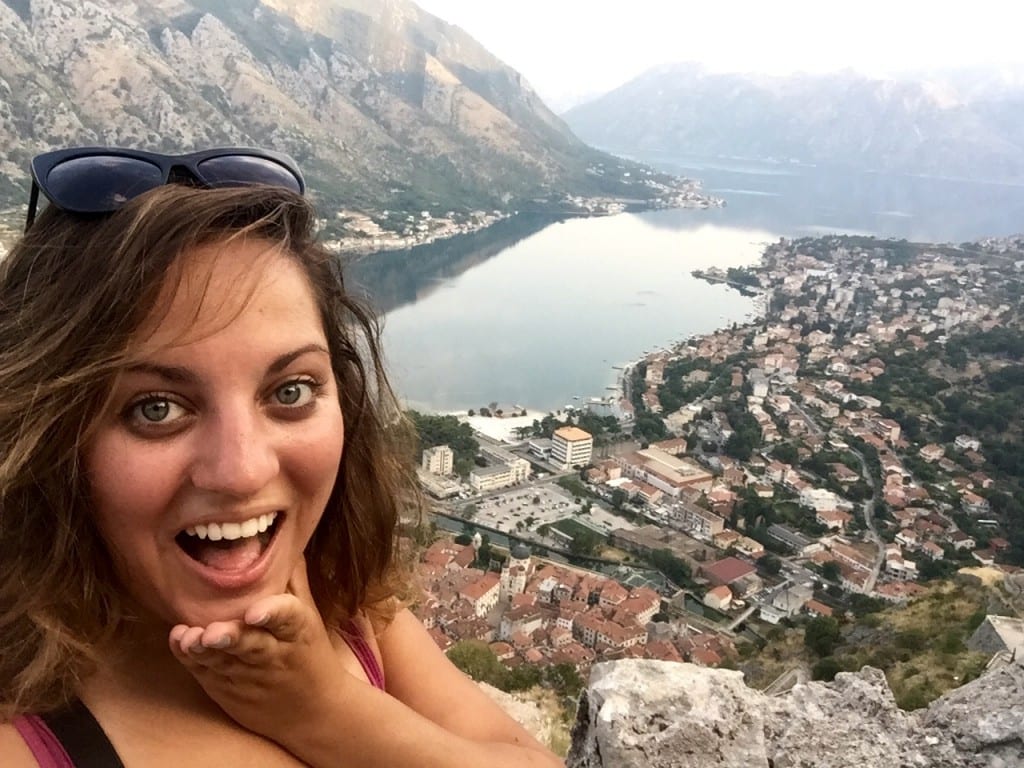
Is Montenegro safe?
Montenegro is as safe as most destinations in Europe — which means it may be safer than your hometown. Do what you would do in any other destination — keep your valuables on you in transit, don’t drink too much, stay aware of your surroundings, keep in touch with someone at home.
I’ve traveled in Montenegro as a solo female traveler and I felt very safe the whole time. I’d travel solo in Montenegro anytime. (Have you seen my top 10 travel safety tips for women ? Definitely check them out if you haven’t yet.)
Are there any Montenegro-specific safety precautions to take? A few.
Be cautious of petty theft. Pickpocketing can happen in busy towns like Kotor and Budva, especially in their dark, twisty old towns. Keep your belongings in a zip-up crossbody purse, don’t take more money and cards than you need for the day, and lock up the rest in your room in a portable safe.
Be careful on the roads. Roads in Montenegro tend to be narrow and winding, especially once you get deeper inland. Many of these switchback-filled roads that are safe, but you need to go much more slowly than usual. Be careful where you stop to take pictures, too. There are rarely guardrails at scenic overlooks. Allot extra time for your drive so you don’t have to speed.
Practice safety when hiking. Talk with a local before you head out on a hike, check the weather, make sure it’s currently safe and passable, and let your hotel know where you’re going and when you should be back. Be cautious of snowstorms in the mountains from fall through spring.
Don’t go drink for drink with Montenegrins, especially if rakija is involved. Like Serbians, Montenegrins LOVE to share rakija with visitors and will offer it often, especially if you’re a man (my husband even got offered rakija at BREAKFAST once!). You do not have anywhere close to their rakija tolerance — I recommend trying one shot, max, only if you’re not driving, or politely turning them down.
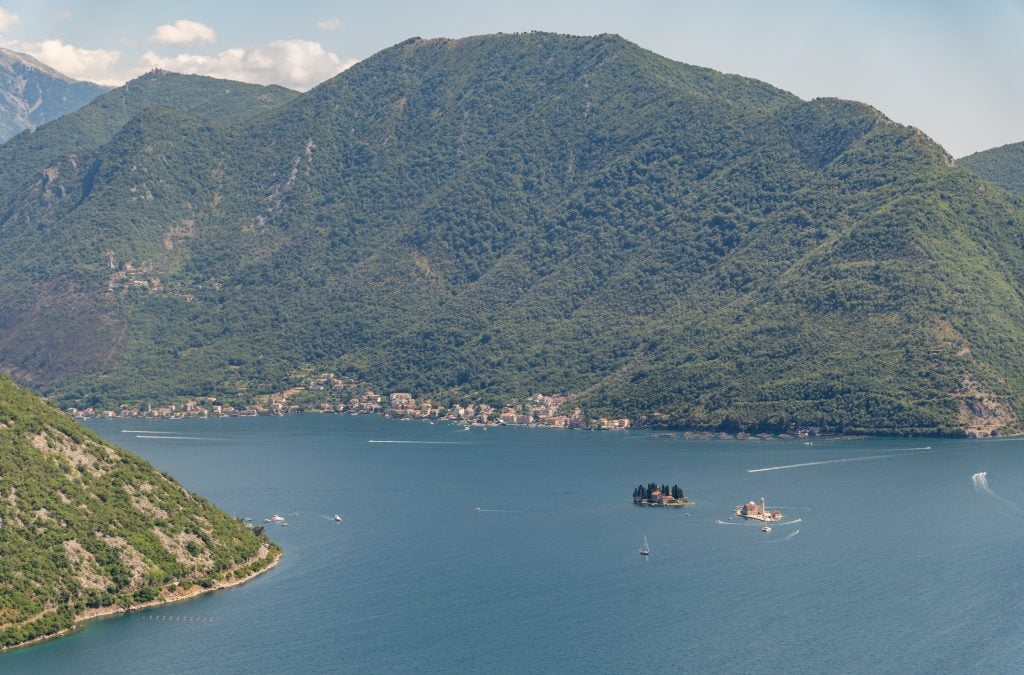
How to get to Montenegro
There are two international airports in Montenegro: Tivat, which is on the Bay of Kotor; and Podgorica, the capital. If you’re flying directly in, you’ll want to aim for one of those two airports. Neither airport is super well-connected, especially outside the summer months, but you can find your way via some larger cities.
Some people like to fly to Dubrovnik and head to Montenegro from there. I’ve done that before myself. The border is a bit of a pain, but it might fit into your trip better, especially if you’re adding on time in Croatia.
Alternatively, you can get to the city of Bar, Montenegro, two different ways: there is a Montenegro Lines ferry from Bari, Italy , as well as a train from Belgrade, Serbia.
Otherwise, you’ll be arriving overland by car or bus. For this reason, travelers often pair Montenegro with another country or two (I always have!). You can easily add Montenegro to a southern Croatia itinerary , or add Montenegro to a longer trip through Serbia, Bosnia, or Albania.
(Just let your rental car company know if you plan on crossing borders.)
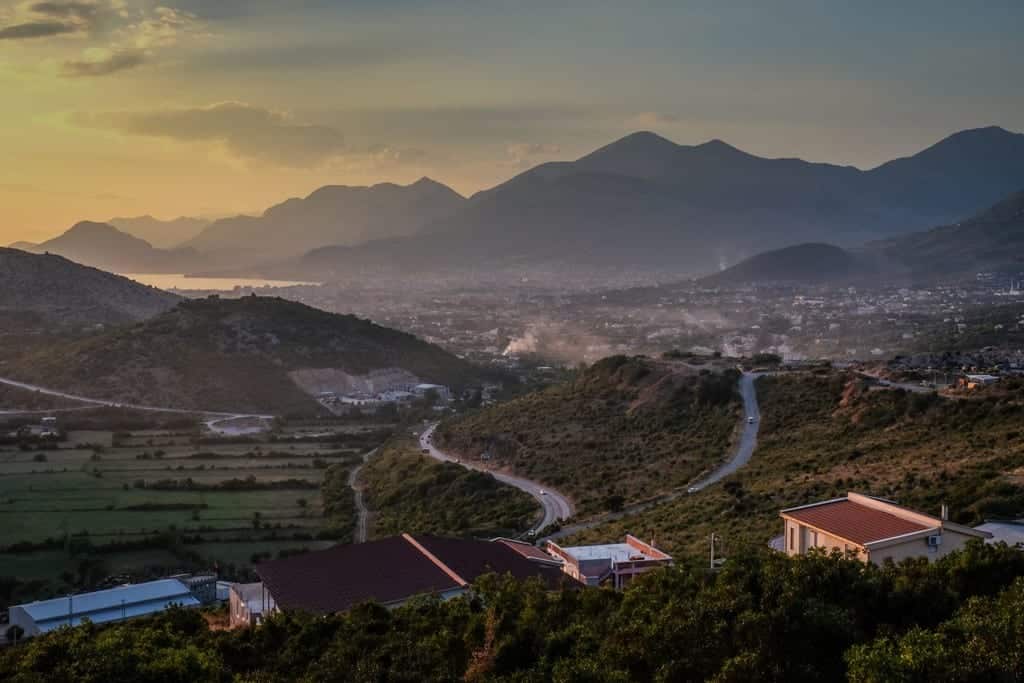
Montenegro is not in the Schengen Zone.
Like many of the Balkan countries, Montenegro is not part of the Schengen Zone. The Schengen Area is a group of 27 nations in Europe that have open borders.
Long-term travelers and digital nomads in Europe can only be in the Schengen Zone 90 days within a 180-day period. As a result, lots of these people are looking for nice non-Schengen areas to spend their time until they can return to the Schengen Zone.
So yes! Montenegro is not Schengen, so it makes a nice place to visit if you need to leave the area for awhile.
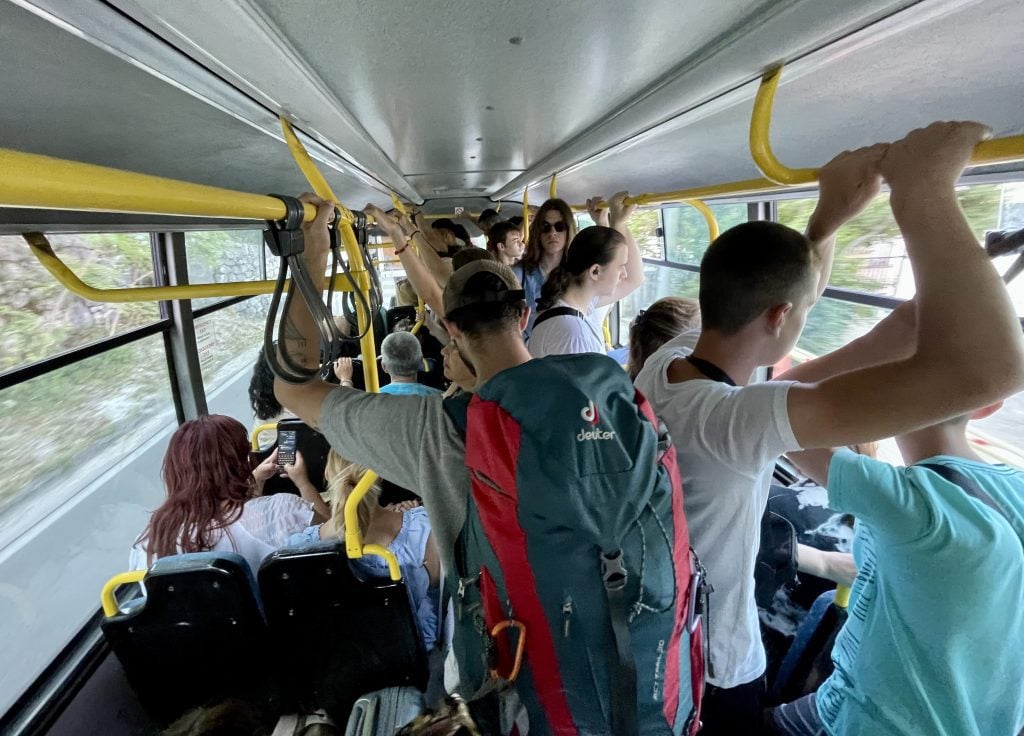
Can you do public transportation in Montenegro? Yes, but it’s a pain.
Montenegro travel can be done either with or without a car. I’ve done two Montenegro trips without a car and one with a car and honestly, having a car makes travel in Montenegro so much easier.
If you just want to do a quick Bay of Kotor trip, or maybe Kotor and a day trip to Durmitor, you can get away without a car. If you want to travel Montenegro comprehensively, you will absolutely need a car.
So what kind of public transport is there in Montenegro?
Bus: Buses are the main way to get around Montenegro, including points beyond the country’s borders. You can buy tickets at bus stations in cities that have them.
The Blue Line bus travels along the Bay of Kotor, from Herceg Novi to Kotor, stopping at most towns along the way, though know that buses can be late and packed to the gills.
Important note: you MUST have tickets printed out if you buy them in advance. Having them on your phone screen won’t work. I bought tickets through BusTicket4Me , a Montenegrin company, and they wouldn’t let me on because it wasn’t printed out!! If you don’t have a printer, you can have the bus station print them out for you, but it might be a long wraparound line, as it was the day I did it.
Train: Surprise, there’s a train in Montenegro — and it’s actually a gorgeous journey! There is a train that runs between Bar and Belgrade, Serbia, stopping at Podgorica and Bijelo Pole en route. This can be an all-day or overnight journey (13 hours by day, 9 hours overnight).
Ferry: If you want to skip the long drive around Boka Bay (on the Bay of Kotor), there is a short ferry between Kamenari and Lepetane. Ferries run constantly as they fill, take 10 minutes, and cost 4.50 EUR ($5 USD).
Internationally, there is a ferry that runs between Bar and Bari, Italy, on Montenegro Lines. The journey takes nine hours.
Tourist shuttles: Montenegro Hostel offers tourist shuttles (good-quality buses and vans that take you direct from hotspot to hotspot so you don’t have to change buses several times). I took their shuttle from Tirana to Budva once and it was a lovely, comfortable, air-conditioned experience. You can take them from destinations in Montenegro to Dubrovnik, Croatia; Mostar, Bosnia; and Tirana, Albania.
Hop-On, Hop-Off Bus: There is now a hop-on-hop-off bus in Montenegro running along the Bay of Kotor between Risan and Kotor. At 25 EUR ($27 USD) for 24 hours, I think it’s a deal if you are traveling solo and would be taking taxis otherwise. Honestly, I would LOVE it if it continued to Budva or even Sveti Stefan or Petrovac. Hope they expand it in the future.
Taxis: Frustratingly, Montenegro doesn’t have Uber or any ride-sharing or ride-hailing apps. Taxis can and will charge high fees, especially on the Bay of Kotor. In 2023 I was quoted 50 EUR ($53 USD) for a 30-minute one-way trip from Kotor to Budva!
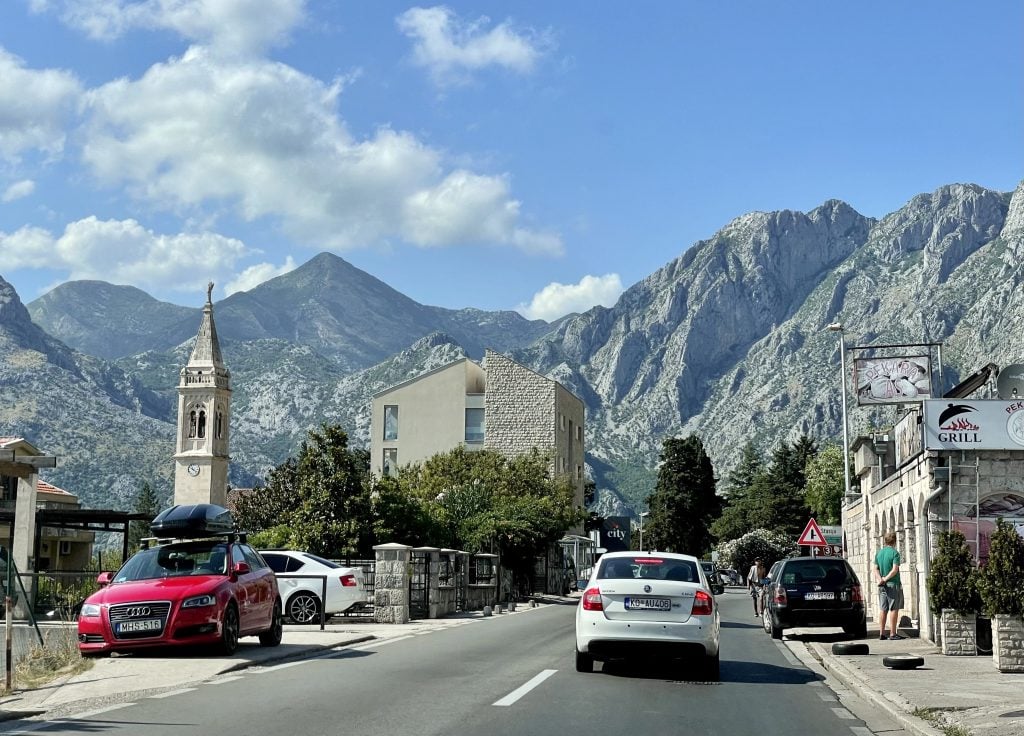
Driving in Montenegro has its challenges.
If you’re going to rent your own car in Montenegro, great! You’re going to get to see so much more this way.
However, you should plan for all of your drives to take much longer than you expect. Montenegro might be the size of Connecticut, but you shouldn’t expect to get from Herceg Novi to Ulcinj as quickly as you can get from Greenwich to New London. (Or maybe you can. I went to college in Connecticut and traffic there is pretty gnarly.)
There aren’t any wide highways in Montenegro. Major roads in the mountains may look like highways on Google Maps, but they are often very narrow and curvy with one lane of traffic in each direction. You often have to slow down to drive these roads safely, and once we even had to drive through a landslide!
That said, these roads tend to be in good condition and driving is smooth. Your main concern is switchbacks in mountainous areas, and there are tons of tunnels.
During the summer months, traffic is terrible along the coast. Once again, the only road along the coastline has a single lane in each direction. Know this ahead of time, and plan a flexible schedule in case you get stuck. (Otherwise, visit during another time of year. Even June and September can be better than July and August.)
As for Montenegrin drivers? They can occasionally get a bit aggressive, but it’s nothing on the level of what I saw in Albania or, shockingly, Slovenia.
Parking in Montenegro can be a huge pain during the summer months, especially along the coast (we literally had to sit and wait for someone to leave Perast in order to park there). Again, consider visiting outside of July or August, and consider just paying for parking to have less of a headache.
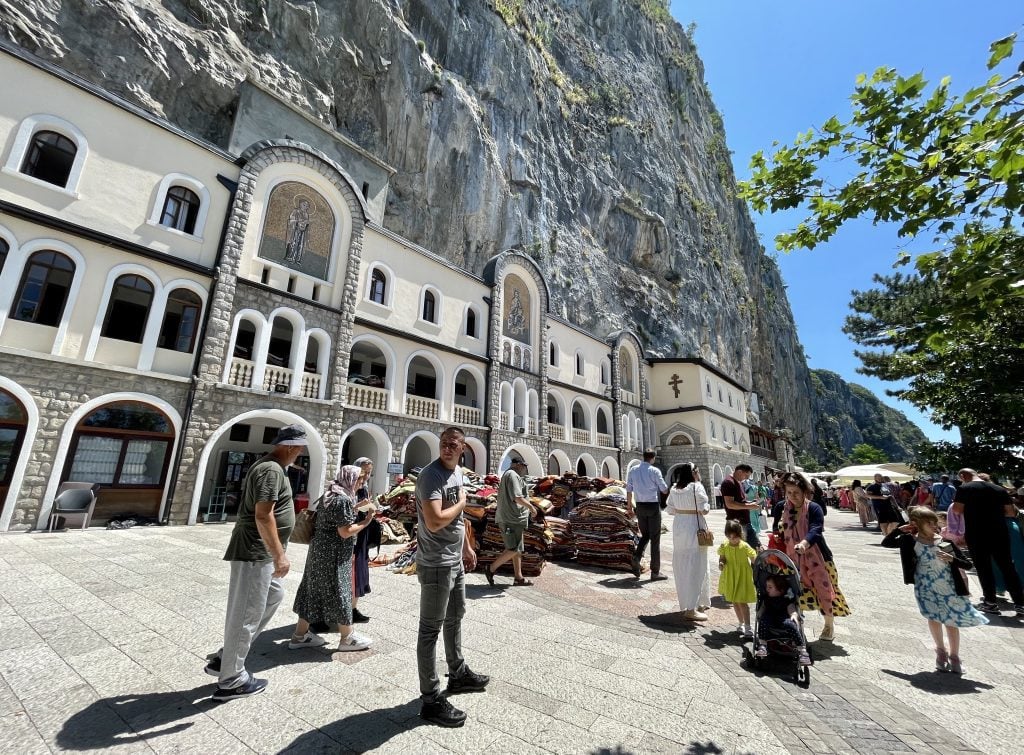
Do people speak English in Montenegro?
The local language in Montenegro is Montenegrin, one of the Serbo-Croatian languages. That said, isn’t much of a language barrier in Montenegro — in areas catering to foreign tourists, that is — so if you only speak English, you’ll be okay.
Like in many parts of Central Europe and the Balkans, everyone who works in tourism speaks English. In more rural, less touristy areas, you’ll find that younger people (under 40) tend to speak English while older people do not.
While Montenegrin uses two alphabets — the Latin alphabet and the Cyrillic alphabet — most signage in Montenegro uses the Latin alphabet. This is a big difference from Serbia, which leans more on Cyrillic.
You’ll find that menus in Montenegro tend to be in the local Montenegrin language, English, Russian (Russians especially love the Budva Riviera), German (Germans go everywhere), and Italian ( perché no? ).
Finally — speak any Slavic languages? You might be able to get by occasionally in Montenegro! My husband Charlie speaks Czech, and a few times he was able to speak Czech with Montenegrins and they got the gist of what the other person saying.
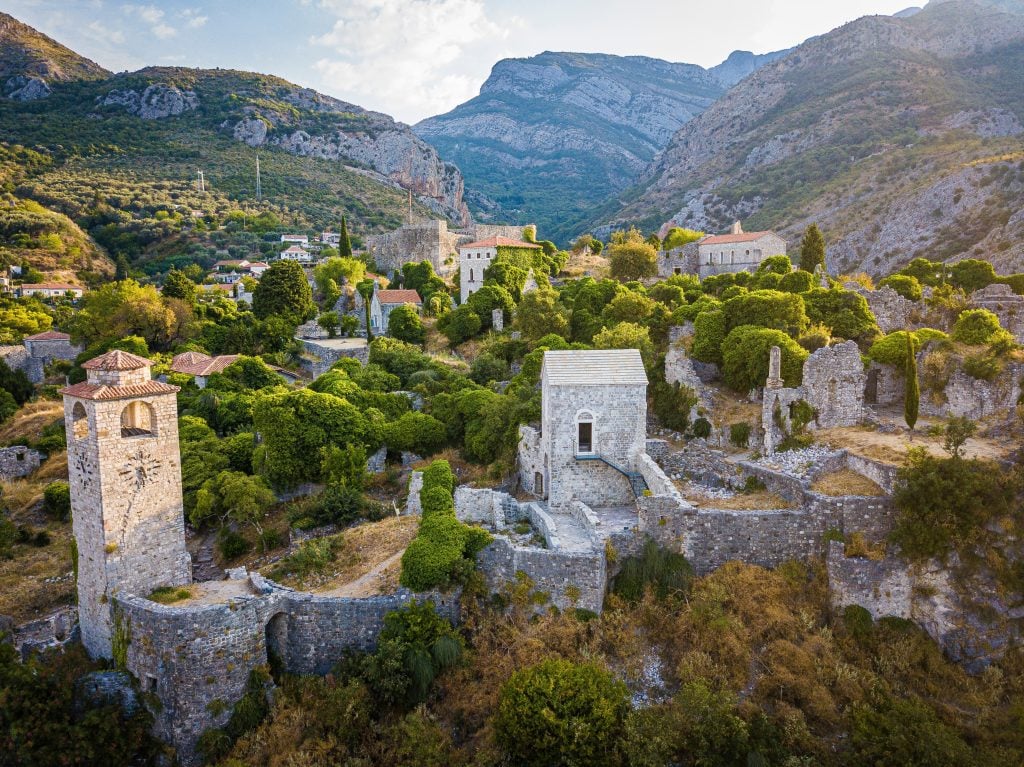
How does money work in Montenegro?
Montenegro is not part of the European Union, but they use the euro as currency. I keep the Currency app on the home page of my phone and use it constantly to double-check what prices are (not as much in Montenegro, as euros are pretty close to US dollars, but you bet I use it a ton in the Czech Republic where the rate is a hard-to-calculate 22:1!).
Here are some money tips for Montenegro:
Avoid Euronet ATMs. These ATMs are found throughout Europe and will RIP YOU OFF. Instead, use an ATM attached to a physical bank. (Added bonus: in the unlikely event your card gets eaten, it can be saved from a bank ATM.)
If it asks whether to charge you in euros or your home currency, ALWAYS choose euros or whatever the local currency is. This might appear on an ATM screen as “Will you accept the conversion?” Always say no — it will still work. Or when paying by card, it may ask you which currency to charge. Always the local currency.
I know, this doesn’t feel intuitive. But they end up charging you a lot more when they convert the rate.
You can use your credit card for most transactions in Montenegro. I use cards whenever possible — both for points and to keep better track of my spending in YNAB, my budgeting software (which I ADORE). However, it’s always a good idea to carry a small amount of euros for small purchases or when businesses don’t accept cards.
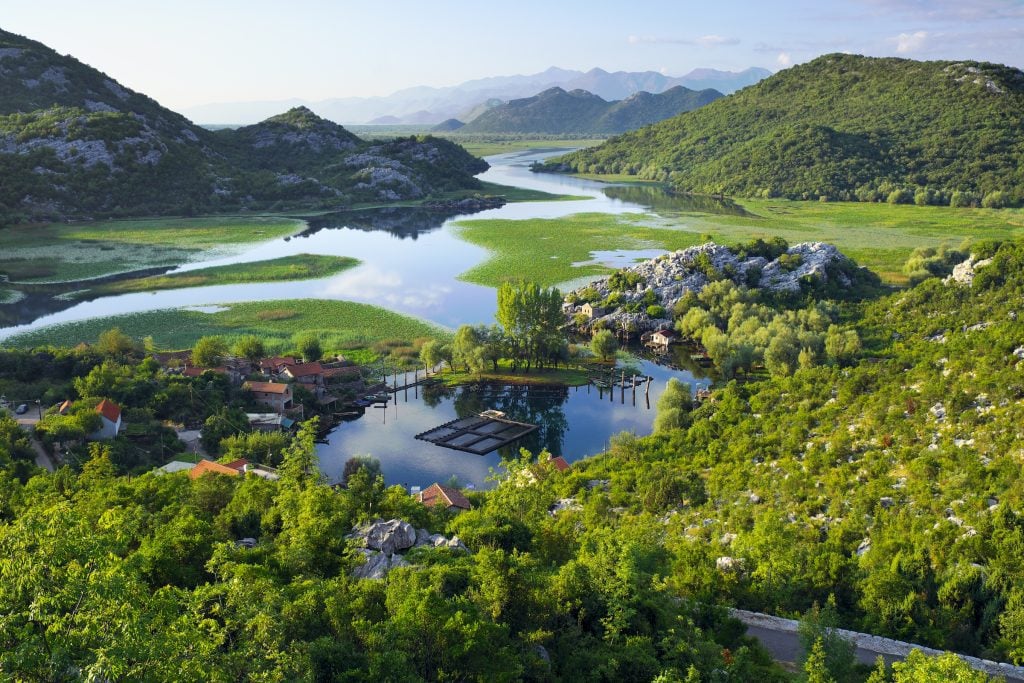
Will your phone work in Montenegro?
Do not use your home phone plan abroad — they will likely charge you ABSURD fees. Additionally, if you have an EU SIM card, know that it will not work in Montenegro.
But should you just rely on wifi in Montenegro? I don’t recommend it. Having working internet on your phone is a safety issue.
Instead, get an eSIM. I used to always get a real SIM card in Montenegro, but eSIMs exist now and they’re fantastic, as you can buy them at home without going to a store.
Nowadays I buy my eSIMs from Airalo. You can see their Montenegro eSIMs here. At the time of publication, you can get 3 GB of data for $15.
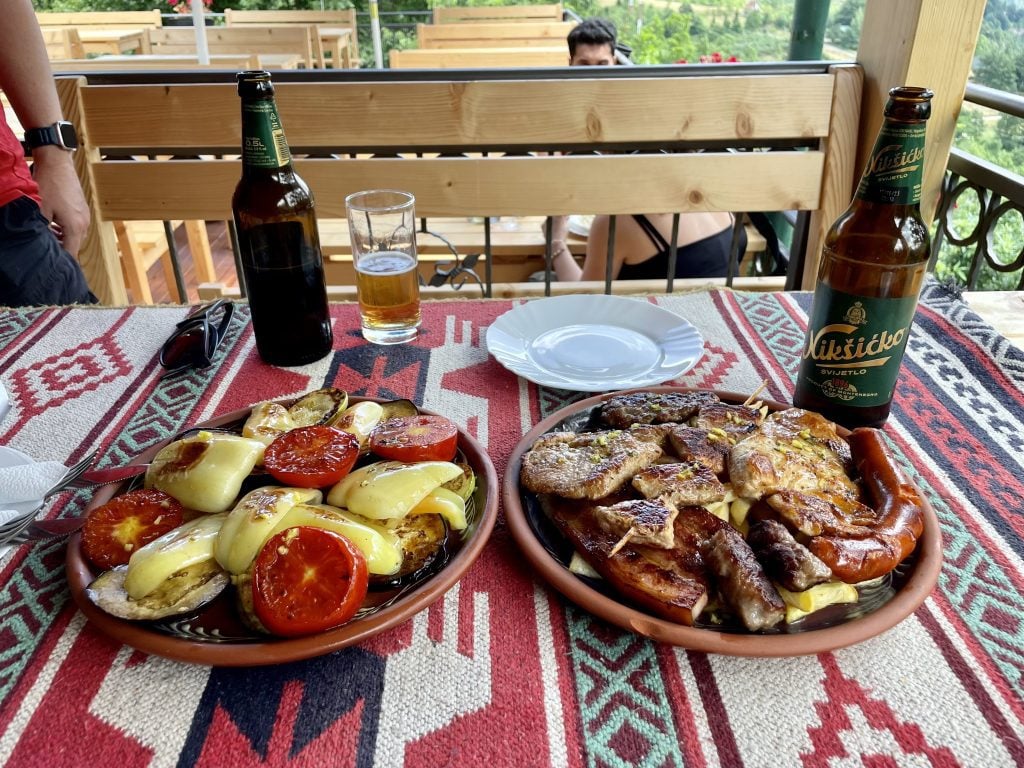
What is Montenegrin food and what will you be eating?
Diving into Montenegrin cuisine? Get ready to eat a lot of meat. (Unless you don’t eat meat, that is — you can avoid it if you want to.) Montenegro, like many Balkan countries, is really big on the meat consumption, especially up in the mountains.
It’s common to get a mixed grill featuring pork, lamb, veal, and chicken, as well as a big platter of tomatoes, peppers, and zucchini. Another meat dish is ćevapi (cheh-VA-pee), rolled minced grilled meat, often served in a pita. My husband is obsessed with pljeskavica , a Balkan burger made from pork, beef, and lamb.
Two sauces to try with your meat are kajmak (KY-mack), which is like clotted cream, and ajvar (I-var), made from roasted red peppers.
Along the coastline, you’ll find plenty of local seafood, with fish stews featuring prominently on many menus. A lot of mussel and oyster farms in the Bay of Kotor have simple restaurants operating out of shacks. You’ll never find fresher seafood than this!
In more touristy destinations, you’ll find slightly more international food options — along with a lot of pizza and pasta. (The quality varies, to be honest. Don’t be surprised if they bring you ketchup for your pizza.)
If you’re looking for a cheap snack or breakfast option, I recommend heading to a local bakery and grabbing a burek — a flaky pastry common throughout the Balkans. It can be filled with spinach, cheese, roasted red peppers, or anything else!
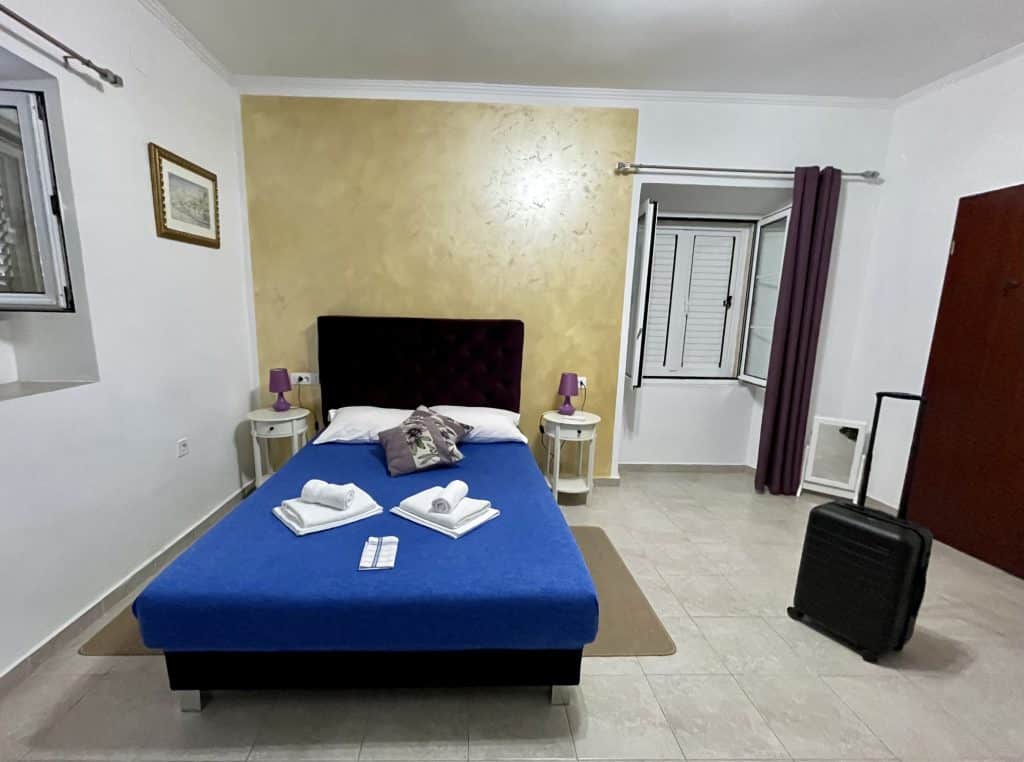
Apartments rule for accommodation in Montenegro.
In Montenegro, like most of the Balkans, apartment accommodation tends to be more popular than hotels. And no, it’s not an Airbnb thing — this is the way things have always been here.
In the pre-smartphone era, it was common for local women in Central and Eastern Europe to stand in train and bus stations with signs reading “apartment.” Even as recently as 2020 in Makarska, Croatia, I saw women on the side of the road holding up signs reading “Apartmenti”!
Sometimes these apartments are considered guesthouses, with several private, lockable rooms available for travelers. To book these places, you can find a lot of them on Booking.com these days . And yes, they are safe. I stay in guesthouses frequently and wouldn’t if they weren’t safe.
And keep in mind that when you stay in an apartment or guest house in Montenegro, you’re (usually) giving money to a local — not buying a hotel chain CEO a third yacht.
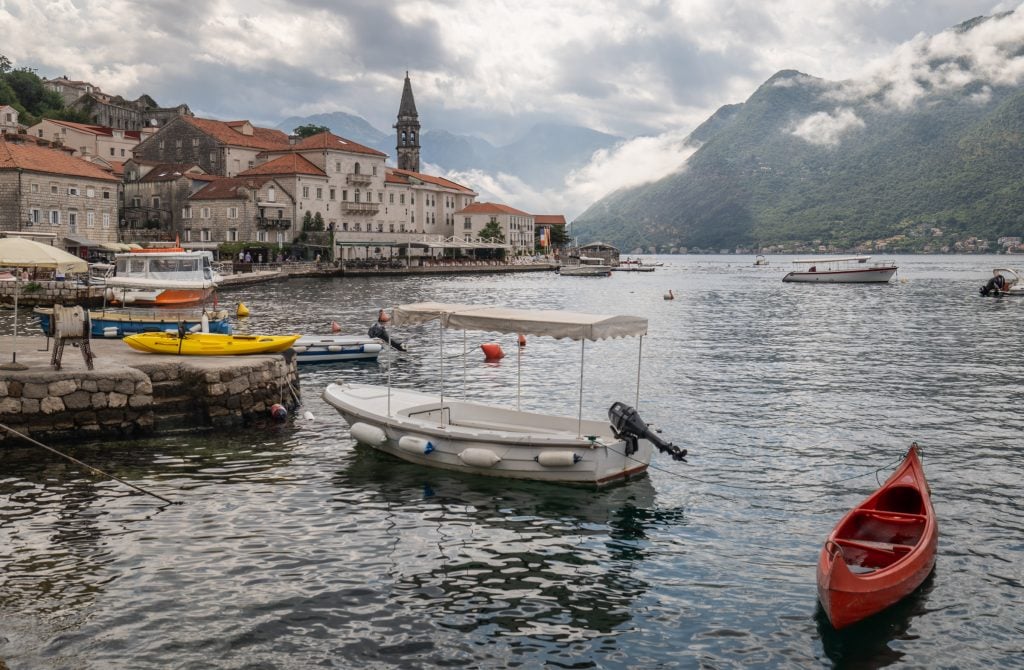
Montenegro is home to four UNESCO World Heritage Sites.
If you love visiting UNESCO World Heritage Sites around the world, Montenegro has four of them: two that are entirely Montenegrin and two that are split between different countries.
First off is the Natural and Culturo-Historical Region of Kotor, and includes the towns of Kotor, Perast, and Risan in addition to the various fortifications and palaces and how they were integrated into the mountainous landscape.
Durmitor National Park is also a UNESCO World Heritage Site, singled out for its biodiversity, glacial lakes, and the second-deepest canyon in the world.
The Stećci Medieval Tombstones Graveyards include a collection of sites in Bosnia and Herzegovina, Croatia, Montenegro, and Serbia. In Montenegro, there are two sites in Žabljak and one in Plužine.
The Venetian Works of Defence between the 16th and 17th centuries are found in Italy include a collection of sites in Italy, Croatia, and Montenegro. The fortifications of Kotor are the lone Montenegrin site.
And keep your eye on the tentative UNESCO list for the future — some Montenegrin sites that have been nominated include the Cetinje historic core, Biogradska Gora National Park, and Ulcinj old town, among others.
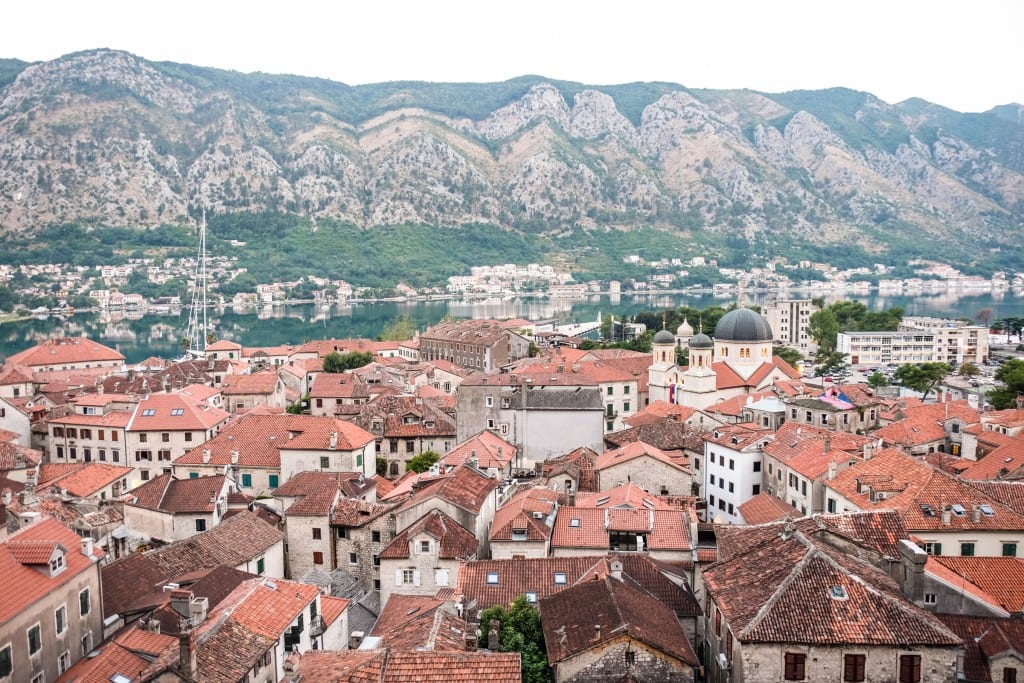
You can see a lot while using Kotor as a base.
Want to have an easier trip to Montenegro without worrying about a car? I recommend using Kotor as a base for your Montenegro trip and exploring from there.
Why Kotor? It has the most tourism infrastructure in the country. Buses head off in several directions from here (if going from Perast to Kotor, for example, you must change buses in Kotor). And many tours depart directly from here.
Spend a few days exploring what Kotor has to offer (and it has a LOT to offer). Hike up to St. John’s Fortress first thing in the morning, visit the Kotor Cats Museum, photograph everything in sight.
Spend one day on a Durmitor National Park day trip. This trip takes in Black Lake, Tara Canyon (no rafting) and Ostrog Monastery ; alternatively, you can do a Tara Canyon rafting day trip .
Spend one day on a Great Montenegro Tour , which includes the Kotor Serpentine, Ngejusi, Lovcen National Park, Njegoš Mausoleum, Cetinje, Lake Skadar, and a brief photo stop at Sveti Stefan.
One afternoon, take a boat trip to the Blue Cave, submarine tunnel, and Our Lady of the Rocks .
One day, take the hop-on-hop-off Montenegro bus to Risan, Perast, and Bajova Kula. (Or just take the Blue Line bus for cheaper, perhaps as far as Herceg Novi if you’d like.)
One day, take a bus to Budva and Sveti Stefan.
You can see QUITE a lot of Montenegro — and you’ll be able to lay your head in the same place every night. Not bad at all!
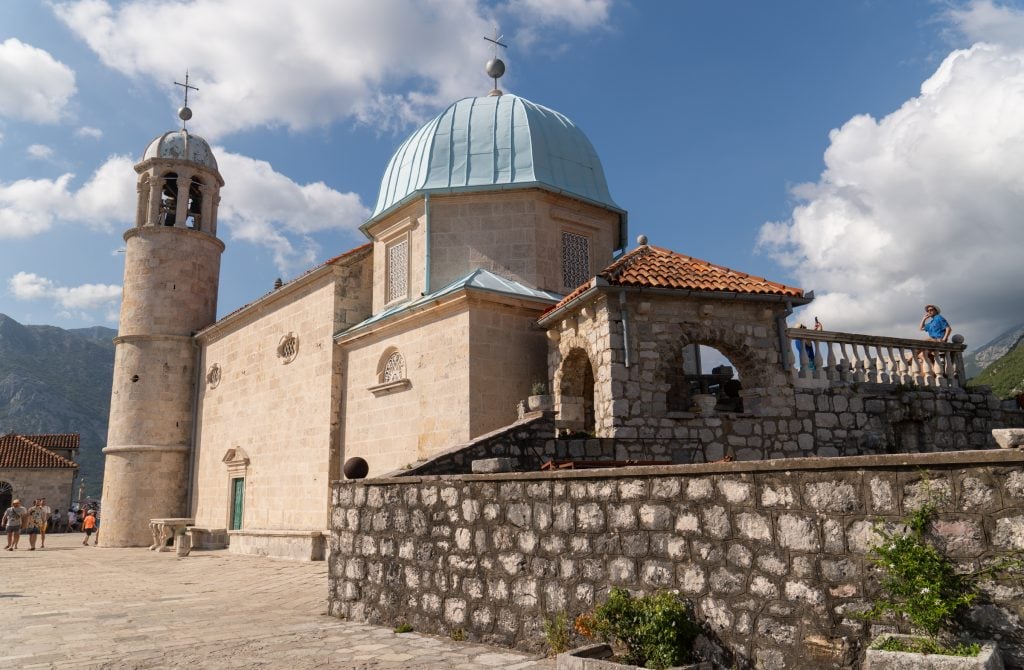
Should you take a day trip to Montenegro from Croatia?
There are so many Montenegro day trips that leave from Dubrovnik. Most of these trips take in Kotor and Perast. If you don’t have much time and you really, really want to experience Montenegro, then yes, you can absolutely do this.
This day trip from Dubrovnik to Montenegro is a good one , including Our Lady of the Rocks (or, alternatively, time in Perast), Kotor, and Budva.
However, you should know that summer traffic between Dubrovnik and Kotor can be rough. I’ve seen it get worse and worse over the years.
Additionally, you’ll need to go through passport control on both sides. And ever since Croatia became part of the Schengen Area in 2023, they’ve been extra strict and thorough with people at crossings.
A day trip to Montenegro means you’ll be sitting in traffic for a LOT of the day, especially if you visit during the summer.
Consider staying overnight, at the very least, if you’re visiting Montenegro from Croatia. You’ll get to see so much more. But if this is your only chance, take the day trip. You’ll still love it.
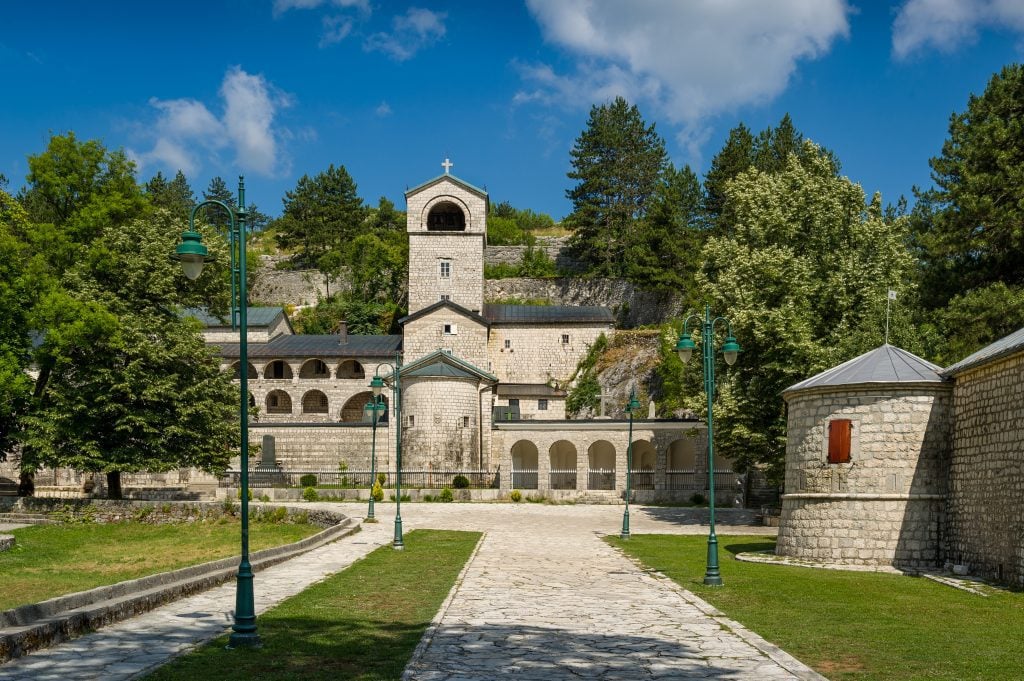
How much time do you need in Montenegro?
How much time should you actually spend in Montenegro? More than a day trip, of course, but how much do you really need?
I recommend spending around one week in Montenegro. I’d recommend spending 3-4 days on the Bay of Kotor — staying in Kotor is easiest, though I loved staying in Perast as a repeat visitor — and your remaining days in one or two other places.
Durmitor National Park makes a great choice; you can also head down into Southern Montenegro with easy access to explore the surroundings, especially if you have a car. Somewhere like Bar, for example, gives you a lot of options.
Is it too far to fly to Montenegro for just one week of travel? You can absolutely extend your trip if you’d like — or add on a short stint in another country. Croatia, Serbia, Bosnia, or Albania would be my top recommendations to add on to a trip to Montenegro.
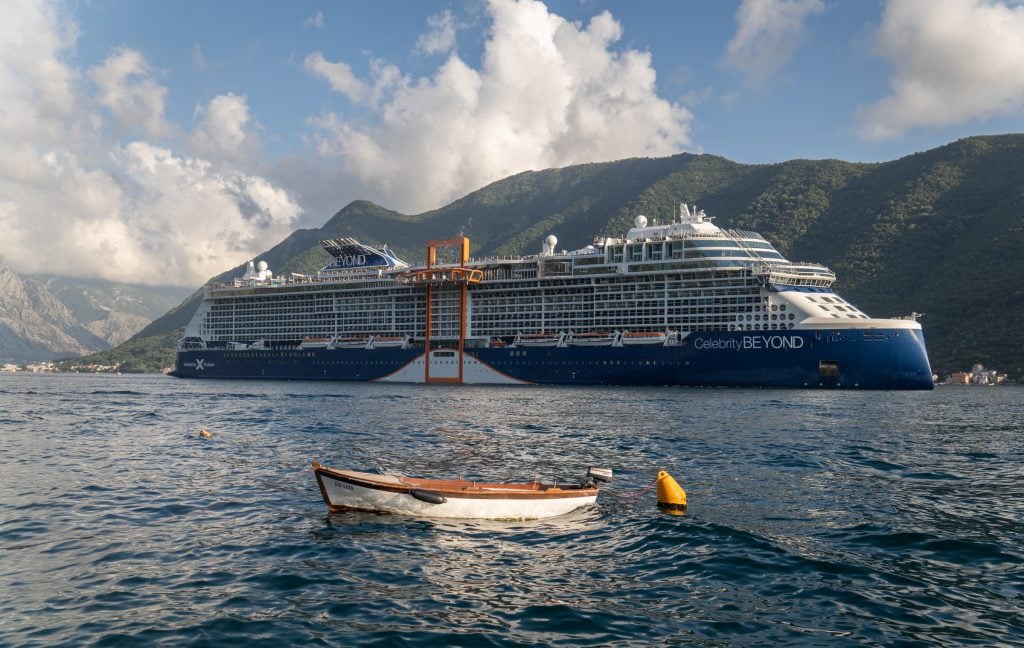
Please don’t take a cruise ship to Montenegro.
Yes, this is something that you hear me say frequently, and it deserves to be repeated. Cruise ships are terrible for most destinations around the world — and that includes river cruises. Cruise ships dump hundreds or thousands of travelers on a destination. They crowd the streets and spend little to no money. Who are they helping, really?
And it is especially egregious to see monstrously large ships sailing through the delicate Bay of Kotor and dropping people in the small city of Kotor. It is TOO SMALL to handle numbers those large.
Recently, Dubrovnik reduced the number of cruises they host. That was a smart move, and should be applauded.
But Kotor picked up the slack. All those cruises are now going to Kotor instead of Dubrovnik.
Do you want to see Montenegro by boat? Can I suggest a Montenegro sailing trip instead, or maybe a Croatia and Montenegro sailing trip ? This way you can still travel by boat and have a much gentler impact on local communities. And these trips are insanely fun.
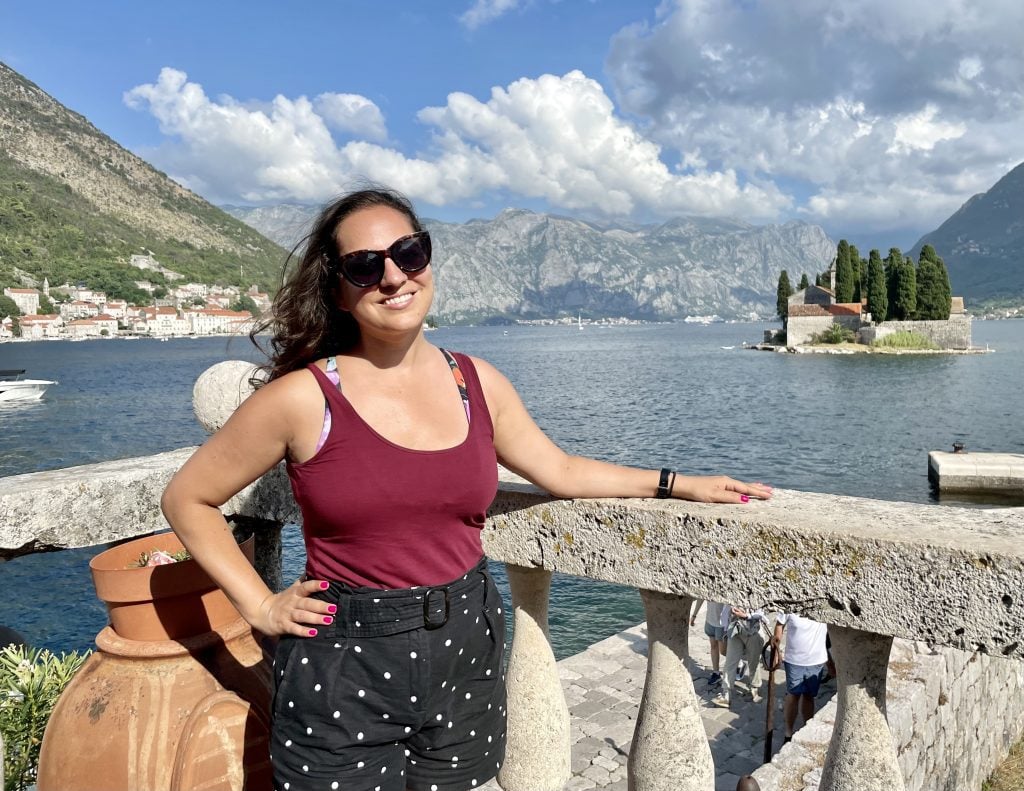
Travel to Montenegro and you’ll be back soon.
Montenegro travel is so worth it — and once you’ve had a taste of it, you’ll be hooked. Even years after my first Montenegro visit, I know I wanted to return to celebrate my birthday here. It’s that kind of place. It just makes everything feel special.
I hope you have the best time in Montenegro! Definitely come back and tell me all about it.
More on Montenegro:
- 30 Fun and Interesting Things to Do in Montenegro
- I was Haunted by a Ghost in Montenegro for 3 days
- 17 Beautiful Things to Do in Kotor, Montenegro
- 30 Stunning Beaches in Montenegro
- 15 Best Things to Do in Budva, Montenegro
More on the Balkans:
- Solo Female Travel in the Balkans: Is it Safe?
- What’s it like to travel in Albania?
- What’s it like to travel in North Macedonia?
- Ultimate 2-Week Croatia Itinerary
Do you travel to Montenegro? What are your tips? Share away!
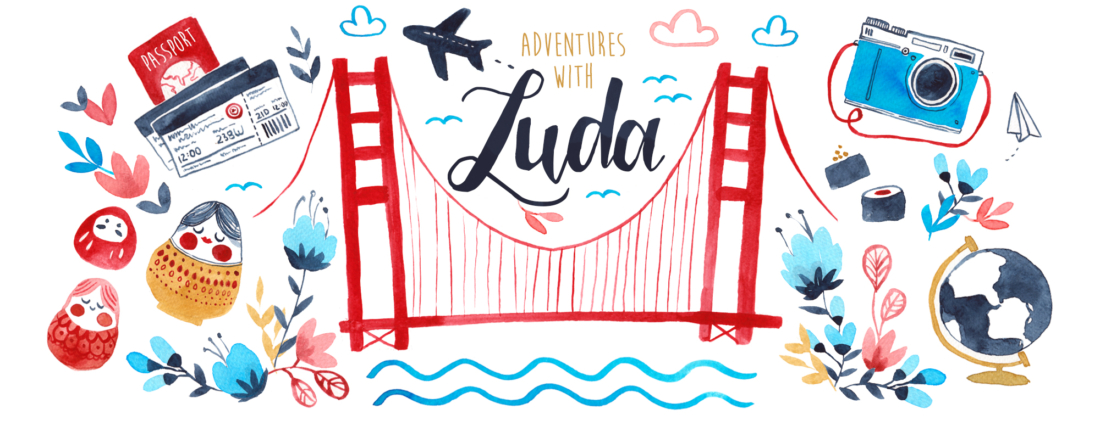
The Ultimate Montenegro Travel Guide: What to Do, Eat, Stay, and more!

With more than 300km of coastline, five national parks, and dozens of idyllic cities and towns, it’s no wonder why Montenegro is quickly becoming a popular destination .
In fact, thanks to its juxtaposition of monte and mari — the mountains and the sea — Montenegro is perfect for everyone!
Craving the sunny seaside ? You’ll find your perfect beach in Budva, Herceg-Novi, Ulcinj, or even Sveti Stefan.
Perhaps a trip to the mountains? Montenegro is famous for that too (it’s even in the name!) – just take a look at the Montenegrin National Parks mentioned here and I’m sure you’ll be packing your hiking shoes the moment you see the gorgeous emerald hills or snow-capped peaks.
It doesn’t matter if you just started to plan your trip to Montenegro or already have a solid itinerary — this Montenegro travel guide is jam-packed with travel tips that will take your vacation to the next level . Let’s take a quick look at what’s included…
Looking for the best places to visit in Montenegro ? There’s an entire section where I list out the top places to visit via region and interests (city, beaches, nightlife, etc).
Perhaps you’re wondering how to get here (or get around)? No worries, I’ve also listed out transport , including via air, bus, train, and even car.
… Or maybe you have all of that ready and just want to know what to eat ? Grab your appetite and order a Crni Rižot while you devour the what to eat in Montenegro section.
There’s also the best time to travel, safety tips, money, activities and day trips, and so much more!
Ready to travel to Montenegro? Let’s go!
TRAVEL TO MONTENEGRO: THE BASICS
Do you need a visa for montenegro montenegro is generous when it comes to visa-free travel. in fact, it allows almost 100 countries visa-free entry for up to 90 days here’s a quick cheat sheet:.
🇺🇸 USA : 90 days 🇨🇦 Canada : 90 days 🇦🇺 Australia : 90 days 🇪🇺 European Union : 90 days
You can check out the Montenegro visa requirements page for more information and apply (if needed).
Montenegro Tourist tax Did you know that travelers have to pay a tourist tax for each day that they stay in the country?
The tourist tax in Montenegro is about 1 EUR per person per day, although it varies depending which city you’re staying in. Some cities charge .80 EUR, some charge a little more.
If you’re staying in a hotel, there’s usually a separate charge for the tourist tax; if you’re staying in an Airbnb or private accommodation, typically the host will offer to register you (so that you have more time to be a tourist instead of waiting at the registry!)
Electricity & Plugs Don’t forget your electronics! Montenegro uses the type F plug and has a standard voltage of 230 V. I have used these adapters in more than 30 countries and highly recommend them!

BEST TIME TO GO TO MONTENEGRO
Usually, the best time to visit Montenegro is between April to the beginning of October , when temperatures are at their best.
However, don’t discount Montenegro as just a warm destination. During winter, the northern part of the country turns into a snowy wonderland and you can find top-notch ski resorts, cozy cabins, and fresh nature!
There are different versions of when is the ‘best’ time to visit Montenegro depending on your interests and plans. Here’s a quick overview:
Best time to visit the beaches: June to mid-September for the warmest water Best time to ski in the mountains: December to March (and sometimes up to April!)
Peak tourist season in Montenegro: July and August
Hottest months: July and August Coldest months: December through February
Best months if you want to avoid crowds: May/June and September/October
Seasons in Montenegro
Although Montenegro has four seasons, its Mediterranean climate allows the country to enjoy favorable temperatures without extreme weather. Case in point: you’ll usually see hot summers and mild winters, especially along the coast. Snow is rare, except for the mountainous regions.
However, snow lovers fear not — inland Montenegro can boast temperatures as low as -20 C (-4 F) during the winter, which makes it a perfect off-the-grid destination to ski and snowboard.
Here’s a quick rundown of each season in Montenegro:
Spring : March, April, May — May is optimal, as the water starts heating up towards end of May but there are virtually no crowds
Summer : June, July, August — July and August are the hottest and most crowded months
Fall : September, October, November — September is also fantastic, as the weather cools down and it’s a great month for hiking
Winter : December, January, February — Cold temps, coast has rain and northern part is snowy
Is everything closed in Montenegro in winter? Nope! Although most people might think of Montenegro as a summer destination, it actually works all year ‘round. Winter in Kotor is fairly mild (the average daytime temperature is 10C / 50F) and the streets are free of the typical cruise ship crowds. Hotels, transportation, and tours work, albeit some busses might have as many departures.
No idea what to pack for Montenegro? No worries! Check out my Montenegro packing guide that’s applicable for all four seasons.
How much time do I need in Montenegro?
If it’s your first time traveling to montenegro, i would recommend staying at least a week to really get a sense of the country and do a few day tours..
For example, you can fly into Tivat airport and use Kotor as your ‘home base’ while doing a couple of day tours, such as to Perast or the extremely popular All Montenegro Tou r.
If you’re flying to Montenegro during the fall or winter, you can split your week between the coast (i.e. Kotor or Herceg-Novi) and the northern part of the country, which has fantastic ski resorts and mountain cabins.
If you have 2 weeks , you can add the southern coast (Bar and Ulcinj), Budva, and Cetinje to your itinerary. In fact, if you’re near Cetinje, you can enjoy Montenegro’s lush nature and spend a day or two at Lovcen National Park, which is sure to give you an unforgettable memory of the country!

SAFETY IN MONTENEGRO
In a nutshell: Montenegro is extremely safe.
The only crime to look out for is petty tourist crime, such as money scams and pickpockets.
Pickpocketing is generally clustered around touristy cities like Kotor and Budva , especially when there are crowds of people. To avoid getting robbed, I recommend wearing a cross-body purse with a zipper and holding your hand over the top (so as to detract pickpockets from opening the purse). Don’t keep your valuables or phone in your pockets, which are another ‘hot spot’ for thieves.
Pay special attention in stores and kiosks, as there are amateur scammers who ‘accidentally’ give you back incorrect change or charge you the wrong price.
We’ve had this happen twice. One time a kiosk seller charged us 14 EUR for two bottles of water and some chips (which honestly should have costed, at most, 5 EUR) because it was Sunday and all of the regular grocery stores were closed .
Solo female travel in Montenegro — I’ve had a few friends who traveled Montenegro as a solo female traveler, and all of them had no issues whatsoever.
LANGUAGE IN MONTENEGRO
The official language in Montenegro is *drumroll* Montenegrin !
Interestingly enough, after a language reform in the mid-2000s, the Montenegrin language can be written either in Latin or Cyrillic (i.e. the same alphabet in Bulgaria, Russia, Ukraine, etc).
However, we noticed that Cyrillic was very rare and only used around 10% of the time we were in Montenegro — almost everything was in Latin.
However, no worries if you don’t — since Montenegro is quickly becoming a popular destination, English is widely spoken in touristic areas like Kotor, Budva, and hotels across the country.
SIM cards in Montenegro
Montenegro’s three biggest telecom companies are Telenor, Telekom (better known as T-Mobile in the USA), and MTel . If you’re wondering which Montenegro SIM card to buy, there’s really not much difference between the three of them — all have great coverage, cost about the same, and offer similar packages.
To put it in perspective, you could probably stream Youtube videos 24 hours a day and still have a decent amount of GB left after your SIM card expires. I freely used my SIM card, never connected to the WiFi in our accommodations, and spent about 70 GB by the time my month in Montenegro was over.

MONEY IN MONTENEGRO
If you saw my 17 Montenegro Travel Tips blog post , you might remember that Montenegro uses the Euro as its official currency . Interestingly enough, Montenegro is not in the European Union or the Schengen Zone (although it’s rumored that they might join in the next few years!).
Credit cards are widely accepted in most large cities such as Kotor, Budva, Podgorica, Herceg Novi, etc. However, if you plan to visit smaller towns or villages, it’s a good idea to keep paper bills on hand.
Likewise, always double check how you plan to pay for accommodations, especially if you book through Booking.com — some guest houses and family-owned accommodations will only accept cash upon check-in.
How expensive is Montenegro?
Compared to its bigger Balkan neighbors like Serbia and Croatia, I would say that Montenegro is less expensive.
The great thing about Montenegro is that it is only as expensive as you let it be.
If you want a budget-friendly trip , you can do Montenegro on as little as 15 to 20 EUR a day . If you want to go all out and enjoy a luxury vacation at a resort, dropping 200 EUR a day, then that’s definitely possible. And if you’re somewhere in the middle, then you can do Montenegro on a mid-sized budget. :)
Here’s how much you can expect to spend per day (per person) depending on your travel style:
💵 Budget travel —Staying in hostels, using the bus to travel, eating street food or buying groceries — 15 to 20 EUR / day
💰 Mid-range travel — Staying at a nice apartment or hotel, eating at restaurants and cafes, using the bus and/or renting a car — 30 to 60 EUR / day
💸 Luxury travel — Staying in high-end hotels or resorts (i.e. all inclusive), eating in fancy restaurants, renting a car or using a transfer service — 100+ EUR / day
Of course, these are just estimates. If you’re traveling as a couple (or as friends), for example, you’d obviously save some money by splitting the cost of a hotel room, car rental, and more.
It’s also important to note that cities along the coast (i.e. Kotor, Budva, Ulcinj) will be more expensive because they cater to tourists. The further inland you go, the more money you will ultimately save.
WANT TO LEARN HOW MUCH IT REALLY COSTS TO TRAVEL TO MONTENEGRO? Check out my in-depth post here , where I break down the prices in Montenegro, including everything from accommodations, food and drinks, transportation, activities/sightseeing, and more.
TRANSPORTATION IN MONTENEGRO
Getting into Montenegro is very easy, no matter where you’re coming from.
If you’re already in the Balkans, you can take the bus from Dubrovnik (Croatia), Shkodër (Albania), or Sarajevo (Bosnia and Herzegovina). Those in Serbia can take the famous Belgrade to Bar train route, which passes through Podgorica (Montenegro’s capital) and finishes at a seaside town called Bar.
If you’re traveling from Europe, the easiest way to reach Montenegro would be to take a flight to either Podgorica (the capital) or to Tivat (seasonal routes).
Here’s a quick rundown of each method:

MONTENEGRO BY AIR
Montenegro has a total of two airports in the country: one in the capital, Podgorica (TGD), and one near the coast, Tivat (TIV). Both airports serve international traffic, although Tivat gets considerably more passengers because it’s closer to tourist cities like Tivat, Kotor, and Budva.
If you’re flying from Europe, you can easily find flights on most major carriers such as LOT, Norwegian, Ryanair, SAS, and so on. Montenegro has its own national carrier called (you guessed it) Montenegro Airlines that services major hubs in Europe.
Alternatively, you can also fly into Croatia’s Dubrovnik airport (DBV) and drive or take a bus to Montenegro’s coast — the drive is around 70km and 1.5 hours by car or 2.5 hours by bus.
Check flights to Montenegro here

MONTENEGRO BY BUS
Despite its rugged geography and small size, Montenegro has an excellent bus system !
In fact, it’s usually the preferred way for locals and tourists to travel across the country because of convenient connections and bus stations in literally every city, town, and even village.
The majority of bus stations have a small cafe, lobby, and ticket desk, and are usually not too far from the center. If you’re buying a bus ticket online, don’t forget to print it out at the bus station. This usually costs between € 0.50 to €1 (depending on the station) as part of the ‘bus station fee.’
Likewise, you may be charged €1 by the bus driver for any luggage that’s bigger than a regular-sized backpack (this depends on the driver).
Although they’re not the newest models, Montenegrin busses are very comfortable and generally in excellent condition.
To check bus times and routes, try either BusBud (international routes) or BusTicket4.Me (domestic routes).
Fun fact: The first intercity bus line in Europe was introduced between the Montenegrin cities of Podgorica and Cetinje, during the time of King Nikola. Ironically, Cetinje was the first capital of Montenegro (the ‘Old Royal Capital’) before it was moved to Podgorica after World War II.
MONTENEGRO BY TRAIN
Montenegro has a small railway network that connects its most important cities with the capital.
Most travelers taking the train will either begin or end their journey on the Belgrade to Bar railway. This route starts in Montenegro’s seaside town Bar, connects through the capital, Podgorica, and continues to Serbia’s capital, Belgrade. It’s known as one of the most scenic railways in Europe, as you’re bound to see beautiful lakes, mountains, and canyons outside of your window.
Best of all, you can take the entire 10-hour journey , from Bar to Belgrade, for only 20 or 30 EUR ! (Depending if you choose first or second class)
Unlike busses, you need to buy train tickets at the train station. However, you can check timetables and routes on the official railway site .

MONTENEGRO BY CAR
Although the busses can take you virtually anywhere in the country, sometimes it’s nice to rent a car to visit truly “off the beaten path places” where public transportation can’t go.
Renting a car in Montenegro is one of the most popular ways to get around the country, especially to smaller villages and natural attractions (national parks, canyons, rivers, etc).
Typically a car rental starts around €15 to €20 per day , but you can get a great deal if you rent for a longer period of time (i.e. many agencies give weekly discounts). One thing to note is that cars with automatic transmission usually cost a bit extra.
I recommend RentalCars.com if you plan to rent a car , since they have the largest selection and offer great deals. This is the company I normally use whenever I need to rent a car. :)
TRAVEL TIP: Although Google Maps and Maps.me both work in Montenegro, Google Maps displayed the wrong address for our apartment rentals a few times. I would recommend using Maps.me over Google, especially in smaller towns (like Perast) and villages.
MONTENEGRO BY TAXI
There are plenty of taxis in Montenegro to get you wherever you need to go, whether that’s from the bus station to the center of town, or all the way off the beaten path.
A typical trip will cost you a few Euro, but be sure to check prices in advance so as to not be ripped off.
MONTENEGRO BY TOURS
Last but certainly not least, you can cover a great deal of Montenegro by taking day tours !
There are hundreds of different tours available for literally every type of traveler, from nature hikes to adventure activities (SUP, kayaking, rafting), guided tours around historical monuments, and even food and wine tours.
I typically like to use Get Your Guide when traveling — here are some of their most popular tours in Montenegro:
ACCOMMODATIONS IN MONTENEGRO

Although Montenegro is still fairly off the beaten tourist trail, that doesn’t mean you can’t find a great apartment or hotel! In fact, there are plenty of accommodations across the country for every budget.
The most popular hotel booking sites in Montenegro are Booking.com and Hotels.com , which offer fantastic options for every traveler, from hostels to hotels, apartments to penthouses, and everything in between.
We booked the majority of our accommodations through Booking, including a luxury apartment with jaw-dropping views of Kotor Bay , a cute little studio overlooking Perast, and a family-run guest house in Herceg-Novi.
If you want to check out what cool places are waiting for you, just add your city and expected travel dates here:
GUEST HOUSES
Guest houses are very popular all around the country and are a common way for local families to make a little extra money while hosting travelers. They’re very easy to find, as they’ll usually be called “Guesthouse [NAME]” or Apartments with the family’s surname (such as Apartments Đukić in Kotor).
Staying at a guesthouse is great for a number of reasons: you’re supporting the local economy , the majority of guesthouses are in pristine condition, and oftentimes it’s cheaper than a hotel room! Best of all, most guest houses have separate entrances and rooms, so you can choose to be as social as you prefer.
On a similar note, apartments in Montenegro are a great choice if you’re traveling with a larger group — or just prefer to have the same conveniences of home (kitchen, washing machine, etc).
In a similar note to guest houses, you can also opt for a family stay in a sobe . These are basic, cozy rooms in somebody’s house and are similar to the feeling you’d get in a guesthouse or bed and breakfast.
Sobe are usually booked in-person: in the high season, there are usually people waiting near bus stations holding up ‘sobe’ signs . You can also spot signs near people’s houses indicating they have a free room to rent.
ALL-INCLUSIVE
Last but certainly not least, all-inclusive resorts are quickly popping up in Montenegro! These are usually found along the Montenegrin Riviera in places like Budva, Sveti Stefan, Petrovac, and Čanj. The most popular all-inclusive chain is Iberostar , which can be found in the latter cities and have rave reviews.
WHERE TO GO IN MONTENEGRO
From the sea to the mountains and everything in between — here’s a quick overview of each region in Montenegro.
THE ADRIATIC COAST
The Montenegrin coast features some of the most beautiful seaside towns and cities on this side of Europe. Dive in by starting in Kotor and making your way westward.

KOTOR — The most well-known city in Montenegro , it’s no wonder why Kotor is so popular. A city where cobblestone streets meet historic stone buildings to breathtaking views from the Kotor fortress, inviting streetside cafes, and surprises at every turn, Kotor has everything you need for a picture-perfect vacation.
Kotor makes an excellent home base if you want to explore the rest of Montenegro with ease — you have Perast and Herceg Novi to the west; Budva, Ulcinj, and the entire southern coast to the south; Podgorica and Skadar Lake to the east; and Niksic and Zabljak to the north.
And speaking of day trips, you’ll also have the best variety because the majority of tour companies depart from Kotor. Check out my travel guide to Kotor here.

PERAST — What if I told you about a gorgeous seaside town — with idyllic boats bobbing near the shore, the sun shining on majestic Baroque palaces, and a place still very much under the radar — just a 15-minute drive from Kotor ?
Surprised? Then you definitely need to check out Perast! Small and sweet, perfect as a romantic weekend getaway or a quick day trip from Kotor, Perast is the ultimate charming small town in Montenegro. In fact, the photo above was the main reason why we chose Montenegro as our destination! Check out my travel guide to Perast here .
TIVAT — Tivat is often the first point of contact with Montenegro’s coast, especially for those flying into Tivat airport.
Although it’s usually skipped in favor of more popular destinations like Kotor or Budva, Tivat is perfect for those who want to avoid the crowds and enjoy a peaceful atmosphere while still being based near the coast.

HERCEG NOVI — Montenegro’s westernmost city, Herceg Novi is primarily known for two things: castles (its name literally means ‘New Castle’) and sunshine (it gets 200 days of sunshine every year). Herceg Novi is a great introduction if you’re entering Montenegro from Croatia, or as a weekend getaway from Kotor. Check out my travel guide to Herceg Novi here .
SVETI STEFAN — If you’ve ever seen a photo of an island with quaint stone houses, huddled together with their red-tiled roofs, then you’re already acquainted with one of Montenegro’s most famous attractions !
Sveti Stefan is a luxury resort and hotel that features serenity, privacy, and one of the most beautiful beaches in the country. You can book a room here , or visit on a day trip from Budva to get a postcard-perfect photo from above.

ULCINJ — The southernmost city on Montenegro’s coast , Ulcinj has a distinctly middle eastern atmosphere thanks to its proximity to Albania. Here you’ll find plenty of beautiful beaches, olive groves, and charming villages.
It’s also a great gateway to Lake Skadar, or if you want to continue your Balkan trip, to Albania as well. Check out my travel guide to Ulcinj here.
MONTENEGRO BEACHES

⛱ Dobrec Beach — Accessible only by boat, the U-shaped Dobrec Beach offers peace and tranquility from crowded cities. There’s an on-site restaurant serving fresh seafood and hammocks for rent.
⛱ Jaz Beach — Just 6 km west of Budva is this lovely beach, which has 1.2 km of coastline and plenty of activities. It’s great for families or day trippers because there are cafes and restaurants nearby, plenty of parking, and kiosks where you can rent a paddleboat, kayak, or even a jet ski.
⛱ Mala Plaža – Located right in the center of Ulcinj, ‘Little Beach’ is such a cute and picturesque place to chill out and enjoy Ulcinj! My absolute favorite beach in Montenegro, Mala Plaža has these sweet thatched umbrellas (a la Maldives or Bora Bora style) and calm waters.
⛱ Lucice Beach — Some 800 meters from the village of Petrovac, Lucice offers turquoise waters surrounded by pine forests and warm sand.
Did you know almost 80% of Montenegro is covered in mountains? With 5 national parks, turquoise-blue lakes, lush valleys, and mysterious caves, it’s no wonder why Montenegro constantly tops the list of the best countries for nature.

ŽABLJAK — Žabljak is unofficially called the ‘ gateway to Durmitor ’ and, thanks to its location along the mountain range, is the highest town in the country! Naturally, you can find great views, plenty of things to do, and charming nooks and crannies here.
During the summer you can hike around the nearby mountain ranges, while in the winter the entire region turns into one big ski resort!
DURMITOR NATIONAL PARK — Remember how I mentioned the highest point in Montenegro ? You can find it at Bobotov Kuk, the tallest peak in the Durmitor mountain range.
Surprisingly enough, one of the best hikes in Montenegro — to Bobotov Kuk — can be done in one day! There are two popular routes to the top that should take between 8 to 10 hours round-trip, depending on your level of fitness.

LOVCEN — Did you know this is the place that inspired Stefan Milutin to name the country Montenegro? That’s right! After Milutin saw Mount Lovćen covered in dark, dense trees back in 1276, he stated that the country should be named Crna Gora — ‘ black mountain .’
See if you can spot the similarities for yourself on a trip to Lovcen National Park, which houses one of the country’s biggest attractions, the mausoleum of Montenegrin ruler Petar II Petrovic Njegos, at the very top.
Want to spend an entire day at Lovcen? There are plenty of things to do, such as hiking, ziplining, and cycling.
SKADAR LAKE — Shared between Montenegro and Albania, Lake Skadar is one of the most popular natural attractions in Montenegro. In fact, it’s the largest lake in Southern Europe!
Lake Skadar is extremely popular during the spring and summer, when the weather warms up and locals enjoy a boat ride out on the water.
Although day trips are popular in the area, don’t forget to go off the beaten path and check out the small islands (particularly the one with Monastery Kom!), keep an eye out for birds, and explore the fortresses.
CULTURE & CITIES

Podgorica is great for those on the hunt for Soviet-style architecture and monuments; those who love off-the-beaten-path destinations, and those into the cafe scene. Otherwise, it’s perfectly fine to skip the capital if you’re short on time.
CETINJE — On the other hand, Cetinje is the (former) capital worth visiting! This was the first capital of Montenegro and, thanks to its history, has retained plenty of historic charm.
Cetinje is famous for being the cultural heart of Montenegro because of the many museums, colorful buildings, and former embassies that grace its streets. Check out my travel guide to Cetinje here.

BAR — Although often overlooked in favor of its bigger neighbors (Budva and Ulcinj), the town of Bar — or rather, Stari Bar — is worth a day trip to see the ancient ruins.
Take a walk through the impressive Stari Bar Fortress, see the oldest olive groves in the country, or wander around the picturesque old town.
NIKSIC — Known for being the second biggest city in Montenegro, Niksic has an industrial feel to it. It’s a popular day trip to see Yugoslavian-era spomeniks (monuments), like the Home of Revolution.

BUDVA — Budva has been called the “Miami of Montenegro,” and it’s no secret why. The first night we were there, it felt like everybody around us was dressed to the nines: girls in fancy dresses and heels walking with men in designer shirts, on their way to a nightclub or upscale bars.
Budva is, without a doubt, where everybody comes to party. Whether it’s a music festival during the daytime or the club during the night, Budva is unrivaled in its status as a party capital.
Of course, that’s not to say it doesn’t have its tourist charms. Budva also has a famous Old Town, lovely beaches, and even an island that you can visit via boat! Check out my travel guide to Budva here.
TIVAT – Nightlife in Tivat is more refined compared to its neighbors. This is thanks to Porto Montenegro, an upscale area with fancy lounges and bars where socialites come to hang out and be seen.
KOTOR — Hey look, it’s Kotor again. :)
While it may not have fist-pumping nightclubs or beach bars, Kotor still offers plenty for a night out. Check out the live music coming from restaurants and lounges, or enjoy a casual nightcap at a pub or bar.
CAN’T DECIDE BETWEEN KOTOR, TIVAT, OR BUDVA? Check out my post here , where I go in depth about each city, their pros/cons, and more!
BEST THINGS TO DO IN MONTENEGRO

This section was originally going to be a sort of ‘bucket list’ of things to do in Montenegro , but it got out of hand and turned into its own post !
You can see the top things to do in Montenegro in the aptly-titled The Ultimate Montenegro bucket list: 30+ things to do and places to see in Montenegro — just click that link. :)
WHAT TO EAT IN MONTENEGRO

With plenty of green fields, local farms, and a coastline that stretches almost 300km, there’s no shortage of fresh and organic food!
From hearty meat dishes to seasonal salads, seafood , and more, Montenegro has it all. Use this mini guide to Montenegrin food as you hop from cafe to restaurant during your trip:
APPETIZERS & SIDES
🥓 Montenegrin cheese & prosciutto plate – Montenegro is famous for its cheese and meat, especially from the Njegusi region (located between Kotor and Cetinje). In many restaurants, you’ll see this type of charcuterie board, along with vegetables, olives, kajmak, and slices of bread. Definitely don’t leave Montenegro without trying some Njeguši pršut!
🥗 Shopska salad – A traditional salad found in almost every cafe and restaurant. It contains slices of tomato, cucumber, pepper, grated cheese, and with a hint of olive oil.
🧈 Kačamak – One of Montenegro’s traditional dishes, this is a must-try when you’re here! It’s a mix of potatoes, cheese, and cornflour, drizzled with sauce, and looks similar to polenta.
🍚 Kajmak – Not to be confused with kačamak (above), kajmak is a type of clotted cream made from cow, sheep, or goat’s milk. This can be eaten by itself as an appetizer, or sprinkled onto a dish for added flavor.
🥯 Bruschetta, tortillas, toast – Not quite Montenegrin, but you’ll often see bruschetta, toast, and tortillas as part of the menu in various restaurants.
🥩 Steak : There are probably dozens of different ways to cook steak in Montenegro, but perhaps the most famous is Njeguski steak. In a nutshell, a pork or veal schnitzel is stuffed with prosciutto and kajmak cheese, then rolled, breaded, and fried. Mmm!
🌭 Ćevapi : The quintessential Balkan food, you’ll find ćevapčići all around the region — including Montenegro! These are small, long patties made of meat and spices, grilled, and smothered with onions.
🍔 Pljeskavica : Another staple that is often called the ‘Balkan burger,’ the pljeskavica is a piece of meat that looks like a burger patty and is often stuffed or drizzled with kajmak cheese.
🦐 Seafood : There’s so many options for seafood that it has its own category! If you’re traveling along the coast of Montenegro, I can guarantee that you’ll be able to walk up to any restaurant and see seafood on the menu. From sea bass to trout, octopus, shrimp, calamari, mussels, and more, you really can’t go wrong.

🥞 Palačinke – A thin and sweet pancake that’s similar to the French-style crepe. Palačinke is usually found with jam, Nutella, or fruit inside, although it can also come in savory flavors such as chicken, ham, cheese, etc. Best of all, a palačinke shouldn’t set you back more than 2 or 3 EUR!
🍚 Sutlijaš – Essentially rice pudding, this dish can be sprinkled with cinnamon or topped with raisins. If you love the taste, you can even buy ready-made packets to cook at home. :)
🍋 Lemonade – Found on every menu during the summer, this is similar to the lemonade from back home. However, be careful, as this drink tends to be on the sour side!
🍺 Niksicko beer – Nikšićko Pivo is the drink of Montenegrins and comes from the second-largest city, Nikšić. Speaking of beer… you’ll mostly see light beers on the menu, as dark beer isn’t so popular.
🥃 Rakija – Although beer may be popular, rakija is king! This mythical drink can be made from virtually any fruit and has an alcohol content between 40% to 80% — oof! Rakija varies from different regions, as each has their own special techniques and flavors.
🍷 Wine – Montenegro technically has two wine-growing regions: along the coast and in the Lake Skadar basin, not too far from the capital. With bold flavors and varieties, you’ll want to take a bottle home!

WHERE TO GO AFTER MONTENEGRO
Find out your next destination here:
🇭🇷 Croatia — Dubrovnik is only an hours’ drive away from Herceg-Novi and continues the theme of epic old towns, cobblestone streets, and charming seaside towns. Split, Zagreb, Plitvice Lakes National Park, Pula, and Hvar are worth a visit.
🇧🇦 Bosnia and Herzegovina — Kotor to Mostar is about a 3-hour drive, and another 2 hours if you want to visit BiH’s capital, Sarajevo. If you love nature, be sure to check out Bileća Lake on the way there; other popular spots to check out in BiH include Banja Luka, Blagaj, and Lukomir. Click here for my Bosnia & Herzegovina blog posts .
🇷🇸 Serbia — Remember the famous Bar-Belgrade train I was talking about? It’s time to check it out with a trip to Serbia! You can travel between both capitals via a train that leaves twice a day and offers plenty of fantastic views along the way. While in Serbia, don’t miss Novi Sad, Subotica, and western Serbia (especially Mokra Gora!). Click here for my Serbia blog posts .
🇽🇰 Kosovo — Although Kosovo’s status is still disputed to this day, it’s a fantastic place to visit during your Balkan trip. Be sure to pay attention to how you enter and exit Kosovo, as there are special rules (i.e. you can’t travel from Montenegro to Kosovo and onto Serbia). Check out the capital, Pristina, as well as Prizren, Rugova, and Bjeshkët e Nemuna national park.
🇦🇱 Albania — Just a quick drive from Montenegro’s southernmost city, Ulcinj, is the ancient town of Shkodër in Albania. Similar to Montenegro, the country also has its own Albanian Riviera (popularly known as Bregu) along the western coast. Popular destinations include Sarandë, Ksamil, Tirana, and the Albanian part of Skadar Lake. Click here for my Albania blog posts .
Inspired to visit one of these Balkan beauties? Check out flights here or bus tickets here !
USEFUL REFERENCES FOR TRAVELING TO MONTENEGRO
Looking for more information before your trip to Montenegro? I recommend the following websites, books, and items that I personally used:
🚌 Busticket4.me — This website saved our trip multiple times! It has an easy-to-use design where you can search for busses, check timetables, and even buy tickets online (for some routes). For international journeys, BusBud is also an excellent alternative.
📖 The Mountains of Montenegro — Planning to hike Montenegro’s mountains? This guidebook is for you! It features 17 routes (including day trips and multi-day routes) as well as travel tips and points of interest. Check it out here .
📖 Montenegro Marco Polo Pocket Guide — We had the chance to read this book during our trip (thanks to our host in Perast who had a mini-Montenegro library!) and it has plenty of great information about the main sights as well as smaller, off-the-beaten-path cities and towns. My favorite sections were ‘Only in Montenegro’ and the insider tips. Check it out here .
📖 Montenegro: A Modern History — If you’re looking to turn your trip into an in-depth history lesson, this book is highly recommended. As one reviewer noted, this book is “the greatest work on Montenegrin history,” and I completely agree. Check it out here .
📖 Lonely Planet Montenegro — Last but certainly not least, everybody’s favorite travel guidebook provides essential information, maps, where to stay, what to eat, and more. There’s even a section about Dubrovnik if you plan to cross over to Croatia. Best of all, it’s available in both paperback and Kindle for on-the-go access. Check it out here .
Looking for even more resources for your Montenegro trip? Here is my ultimate Montenegro list:
🛂 Need a visa to Montenegro ? Check out iVisa for more information .
✈️ Once you have your visa all set, it’s time to book airline tickets ! I use both CheapOAir and SkyScanner to book flights.
🛏 Book accommodations on Booking or Hotels . These two offer fantastic options for every traveler, from hostels to hotels, apartments to penthouses, local guesthouses, and everything in between!
✨ Speaking of amazing accommodations… I have an entire blog post dedicated to the best guesthouses, apartments, and Airbnbs in Montenegro !
📷 Find tours, day trips, or sightseeing activities at Get Your Guide or Viator .
❗️One of the most popular day trips is the All Montenegro Tour . This 12-hour tour gives you a taste of Montenegro as you enjoy breakfast at a local village, tour the Old Royal Capital, visit the birthplace of the Petrović dynasty, enjoy a boat ride through River Crnojevica, and finish the day with a panoramic view of the famous Sveti Stefan.
🚗 Prefer to carve out your own itinerary? Rent a car through RentalCars.com, which has the biggest selection of car rentals and the company that I use whenever I rent a car.
🧳 Not sure what to pack ? I have an entire blog post that details what to pack for a trip to Montenegro for all four seasons!
🇲🇪 Looking for even more information before traveling to Montenegro ? Check out my 17 Montenegro Travel Tips for some bite-sized tips…
🇲🇪 … Or check out all of my blog posts on Montenegro here ! Happy travels :)
PSA: Some of the links in this post are affiliate links, which means I may earn a small commission if you book something through them. This is at no cost to you and helps keep this site running. Thank you!
Photo credits : Car in Montenegro – Dejan Zakic | Croatia – Spencer Davis | Euros – Markus Spiske | Palačinke – Todd Cravens | Airplane Window – Adrien Olichon |
Related Posts
2 thoughts on “ the ultimate montenegro travel guide: what to do, eat, stay, and more ”.
I am very impressed 👏with all the work you put into this site.
Thank you Captain Ronald! :)
Leave a Reply Cancel reply
Your email address will not be published. Required fields are marked *
Notify me of follow-up comments by email.
Notify me of new posts by email.
- Top 10 Classic Road Trip Games for the Whole Family
- How Gaming Can Promote Development and Education in Your Child’s Life
- 5 Kids Travel Apps that’ll Trick Them into Extra Homework!
- Week 16: Southern Chilean Patagonia’s Fjords & Torres del Paine
- Week 15: Osorno, Lake Llanquihue & Puerto Varas in Chile
- Week 14: San Carlos de Bariloche and the Seven Lakes Route in Argentina
- Week 13: Pucon, San Martin de Los Andes & Magical Meetings
- Week 12: Conguillio National Park: Waterfalls, Lakes, Volcanoes & Hikes
- Google Plus
The Ultimate Montenegro Travel Guide: Everything You Need To Know
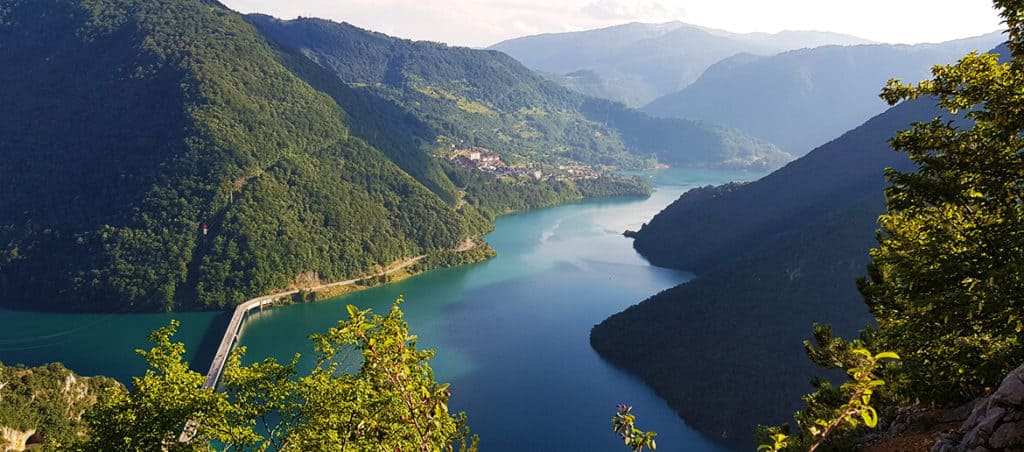
THIS POST MAY CONTAIN COMPENSATED LINKS. FIND MORE INFO IN MY DISCLAIMER .
Montenegro is truly the gem of the Balkans and a magical place to travel in. This stunning country lies nestled between Croatia, Bosnia & Herzegovina, Serbia, Kosovo and Albania, with a long stretch of its coastline on the beautiful Adriatic Sea. Montenegro will delight you with its endless array of places to visit with its fjord-like Bay of Kotor, beautiful beaches, the incredible turquoise Piva River and the jaw-dropping scenery of the Durmitor National Park.
Party the night away in Budva, relax on the beaches, immerse yourself in nature on incredibly scenic hikes, visit monasteries or get your adrenaline pumping while white water rafting or zip lining. Whatever your desire, Montenegro will be able to provide you with your ultimate travel experiences.
Most tourists gravitate to Kotor and the coast, but the Northern part of Montenegro was definitely my favourite. The incredible Tara River Canyon, the Durmitor National Park and the incredible turquoise waters of the Tara and Piva Rivers, will have you spellbound with their beauty.
Unlike its very popular neighbour, Croatia, Montenegro has yet to become a major travel destination, so you can still enjoy all the beauty of this wondrous country without all the crowds. In 2016 Kotor was named as the Top City To Visit In 2016 by Lonely Planet, so it won’t be long before this changes, so get here quickly!
In this Montenegro travel guide , we have put together all the things you need to know about traveling, sightseeing, staying and touring during your trip to Montenegro.
Montenegro Travel Guide: What You Need To Know
Money | Montenegro uses the Euro even though it is not yet part of the EU. The cost of food, drinks and accommodation vary depending on where you are. The coastal area near Budva and Kotor are infinitely more expensive than the Northern Part of the country. ATM’S are widely available.
Is It Safe | The Balkans seems to received a really bad rap with a lot of people being concerned about my safety while traveling here. My experience was completely the opposite and I actually found Montenegro to be one of the safest places I have ever traveled in.
Language | The local language is Montenegran which is very similar to Serbian. During our month in Montenegro, virtually everyone we encountered could speak English, but the locals definitely appreciate it if you can say some basics, like Hello and Thank You.
Schengen Status | Montenegro is not a Schengen country, but they will grant you entry if you have a Schengen visa, a UK Visa or a USA visa. UK, EU, USA and Australian Passport holders do not require a visa either. Entry will allow you to travel for up to 90 days only.
Visas | You do not need a visa to enter Montenegro
Connectivity | We found wifi to be widely available in Montenegro even in the remote Northern parts of the country. Mobile data is cheap and much cheaper than in the EU. I would highly recommend purchasing a local prepaid SIM card for the duration of your stay.
Getting There | Montenegro is easily accessible from Croatia, Bosnia & Herzegovina, Serbia, Kosovo and Albania by car. There is also a good bus network with the bus trip from Dubrovnik being the most popular. If you are coming from Belgrade in Serbia, you can catch the train to the capital city of Podgorica. From here you can catch a 2hr bus to Kotor. For those wanting to fly in, there are two airports. Flying into Podgorica will require you to either catch a bus further or to hire a car, while if you fly into Tivat you can easily catch a taxi for the 20minute ride to Kotor or Budva. However, the flights to Tivat will be more expensive as it is a much smaller airport.
Getting around | Montenegro has a fair network of public buses and taxis are reasonable, but if you really want to see some of the most spectacular spots, you really do need to have a car. The coastal roads are very good, as are most of the interior roads, but there are some stretches with roughly hewn tunnels with no lights, some crazy serpentine roads and a few very narrow places where passing oncoming cars was rather tight. That being said, there are hardly any cars on the road in the North, so you can take things slow and enjoy the ride. The scenery in Montenegro is truly spectacular and will want to stop often, so self-driving is definitely the most recommended method of travel. Hire a car in Kotor or Podgorica and enjoy the open road! Find the best car rental deals here .
Where to Stay | Montenegro has a myriad of accommodation options so something to suit every budget. It goes without saying that the popular places will be more expensive, but as you go inland from the coast, you will notice a vast difference in the prices. Find the best deals for accommodation in Montenegro here.
When to Visit | High season is from June to August. These are the hottest months and also the busiest months when parties are in full throttle in places like Budva and Kotor can get very crowded. The shoulder seasons of May/June and September/October are the most ideal. The weather is still glorious, there are far fewer tourists and prices come down. Montenegro also has a winter season with a number of ski destinations in the Durmitor National Park
Travel Insurance | Don’t forget a good travel insurance!
Montenegro Travel Guide: Where to Go & What to See
The Bay of Kotor | Nestled below majestic mountains lies the fjord-like Bay of Kotor with its quaint seaside villages
- Things to Do in Kotor in Montenegro
- Hiking the Kotor City Walls and the Ladder of Kotor
- Hiking the Vrmac Ridge above the Bay of Kotor
- The Picturesque Town of Perast on the Bay of Kotor
Budva Riviera | Dazzling you with a rich nightlife and lazy beach days
- Journey to the famous Horseshoe Bend & Montenegro Beaches
South Coast | Beautiful beaches, ancient old towns and family friendly places
The old town of Stari Bar in Montenegro
A trip down montenegro’s coast: crows, crowds & kites.
Central Region | Mountain passes, lakes, monasteries and the capital city.
- Lake Skadar National Park: Boat Trips and Bird Watching
- Road trip from Bosnian Border to Ostrog Monastery
Northern Region | Mountains, canyons, turquoise rivers, hiking, adventure sports and the most stunning scenery
- White Water Rafting on the Tara River
- Pluzine: Piva Lake, Piva River and Too Many Tunnels!
- Durmitor National Park: The Best Road Trip I’ve Ever Done!
- Hiking the Black Lake in Zabljak, Montenegro
- Exploring the Tara River Canyon & Zip Lining at the Durdevica Tara River Bridge
- Nothing’s a problem in Mojkovac!
The Whole Country | Cities, beaches, mountains, lakes and more
- The Best Places to Visit in Montenegro
Recommended Tours in Montenegro
Kotor Boat Tour: Our Lady of the Rocks, Mamula and Blue Cave | See Montenegro’s most popular attractions, including Our Lady of the Rocks, on a boat tour. Swim in the Blue Cave, known for its iridescent color. Check prices and more info.
Kotor 90-Minute Guided Walking Tour | Explore Kotor, the city of merchants and sailors, on a 90-minute guided tour that takes you through more than 2,500 years of turbulent history. Discover the spectacular architecture surrounding the squares of this UNESCO-listed fortified city. Check prices and more info.
From Kotor: Montenegro Tara Rafting | Feel the most exciting experience in Montenegro – white-water rafting on Tara River, part of Durmitor National Park. Tara canyon is the deepest canyon in Europe, and one of the most beautiful places in Montenegro. Check prices and more info.
From Kotor: The Great Montenegro Full-Day Tour | Join a 12-hour tour where you’ll see some spectacular viewing points, incredibly beautiful places and historic monuments. Visit Njegusi village, Lovcen National Park with its mausoleum, Cetinje, Crnojevic River and Sveti Stefan. Check prices and more info.
Kotor: Ostrog & Rijeka Crnojevic Private Tour | Visit Ostrog Monastery, one of the most visited sites in Montenegro, and one of three most visited Christian destinations on the planet with its cave-like chapel. After the monastery visit, go to Rijeka Crnojevic. Check prices and more info.
Kotor: Day Trip to Lovcen & Skadar Lake | This tour includes the most impressive sights available for a day trip out of Kotor. Have amazing views of the Bay of Kotor, local food in Njegusi village and visit two national parks (Lovcen Mountain and Skadar Lake) and the old royal capital of Cetinje. Check prices and more info.
Did you find this page useful? Don’t forget to bookmark it for later reference and share it with your friends who are thinking of visiting Montenegro.
Like It? Pin It?
Jeanne and her son Tai have been full time travellers since 2017. They are lovers of all things travel with an insatiable desire to explore every last corner of the globe. Homeschooling and working as they move from one incredible location to the next. Their goal is to use their travel guides and stories to inspire others to explore the world.
Related Posts
13 stunning places to visit in montenegro: the most beautiful country.
I’ve never been to Montenegro, but it looks like a beautiful place to visit! Yay for wifi and no visas needed, and that water looks gorgeous!
I still can’t get over the colour of the rivers in Montenegro and the beauty of this tiny country. I hope you manage to get there one day!
I wish to visit Montenegro and thanks to your post it makes me more sure it is a good idea (after the travel ban is over).
I will save your post for later and as soon as I make the plan about visiting this country, I will definitely grab some ideas from your blog post and will follow your great advice for sure!
Thank you for sharing this article with us and I wish you all the best!
When you are ready to travel, I hope that my posts will give you all the information you need to create a fabulous itinerary!
Write A Comment Cancel Reply
Save my name, email, and website in this browser for the next time I comment.
This site uses Akismet to reduce spam. Learn how your comment data is processed .
Type above and press Enter to search. Press Esc to cancel.
Wander-Lush
Visit Montenegro: The Ultimate Montenegro Travel Guide
- Europe / The Balkans
Am I in Paradise or on the Moon? George Bernard Shaw on Montenegro
In Search of the Black Mountain
I don’t think I’m being controversial when I say that Montenegro is one of the most beautiful countries in Europe. When I road tripped around Montenegro for 10 days , it rained incessantly – and yet I still fantasise about the Martian landscapes.
From hiking in Lovcen and Durmitor National Park , summiting Bobotov Kuk and casting eyes on the glacial Black Lake , to rafting on the Tara River or kayaking on the glassy Bay of Kotor , travelling in Montenegro is a requiem for outdoors enthusiasts.
Then there are other kinds of adventures, such as driving the Kotor Serpentine and catching sunset from the top (truly one for the ages). Trace the romantic Boka Kotorska, visiting the UNESCO World Heritage old towns in Kotor and Budva , and draw out your time in Perast , my favourite place in Montenegro, for as long as humanly possible.
Dip your toes in the capital, Podgorica , a city everyone loves to hate on, before heading for the incredible Lake Skadar . Shared between Montenegro and Albania , the largest lake on the Balkan Peninsula is as picturesque as it is bio-diverse. It’s worth making a detour to ride the rails from Podgorica to Bar – the final leg of the legendary Belgrade to Bar train – which delivers incredible views as it ambles across the lake bridge.
From Herceg Novi all the way to Ulcinj , every day in Montenegro is filled with ‘wow’ moments. Best of all, it’s so compact and easy to get around, you can see it all in a few short weeks.
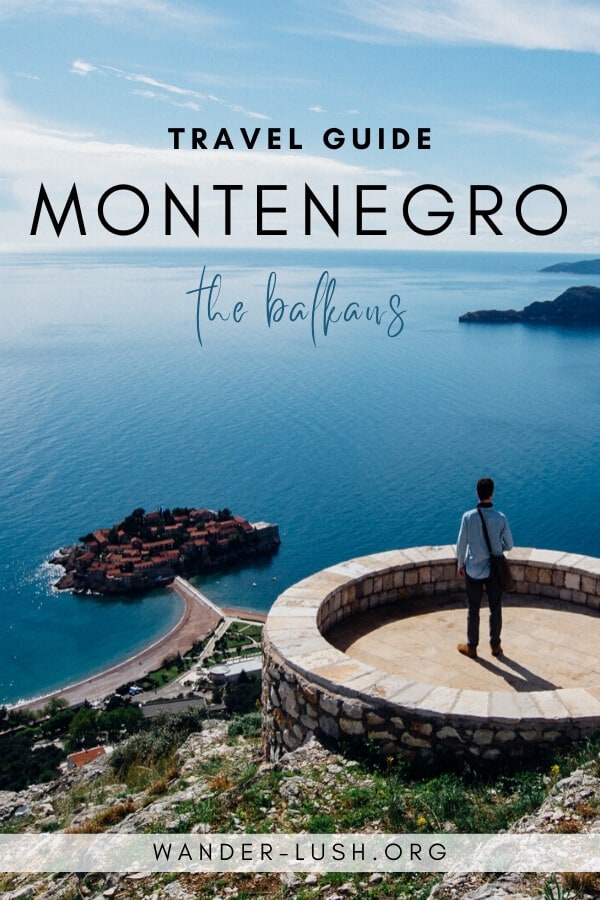
Montenegro travel essentials
Please note: Some of these links are affiliate links, meaning I may earn a commission if you make a purchase by clicking a link (at no extra cost to you). Learn more .
May/June or September/October (shoulder seasons); June-August for hiking.
How long in Montenegro?
If driving, allow 10 days for the highlights; 2 weeks to see (almost) everything.
Daily budget
60 USD per person per day (mid-range hotel; restaurant meals; car hire; museum tickets).
Getting there
Fly into Podgorica, Tivat or Dubrovnik, (Croatia); train from Belgrade; drive/bus from any neighbouring country.
Montenegro visa
Visa-free for most passports (stay up to 90 days).
Getting around
Hire a car; use intercity buses; take the train to Bar.
Where to stay
Hostels, family-run guesthouses or hotels.
Tours & experiences
Old town walking tours, boat trips and monasteries.
Explore Montenegro
Discover all the best things to do in Montenegro with my latest travel guides.
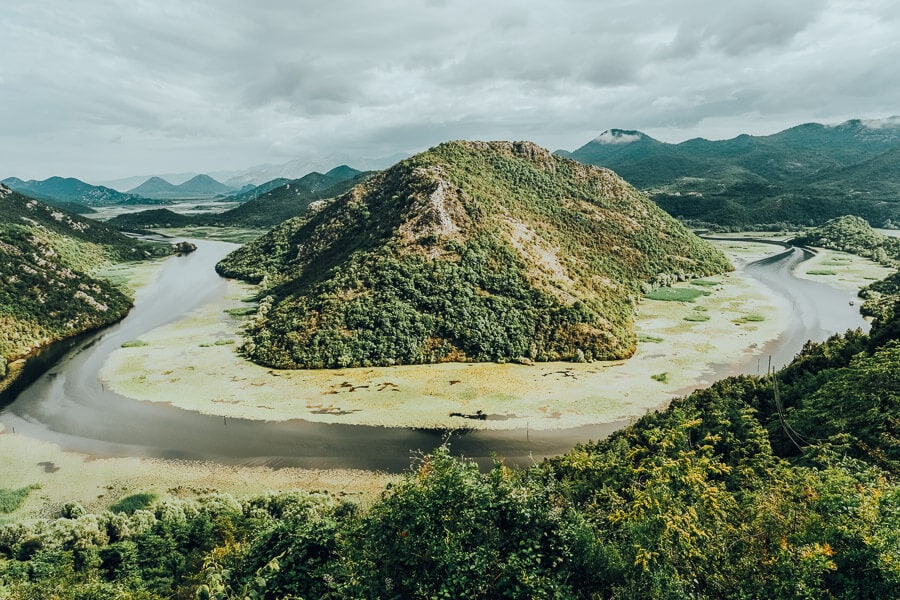
21 Useful Things to Know Before You Go Travelling in Montenegro

35 Useful Things to Know Before You Rent a Car & Go Driving in Montenegro
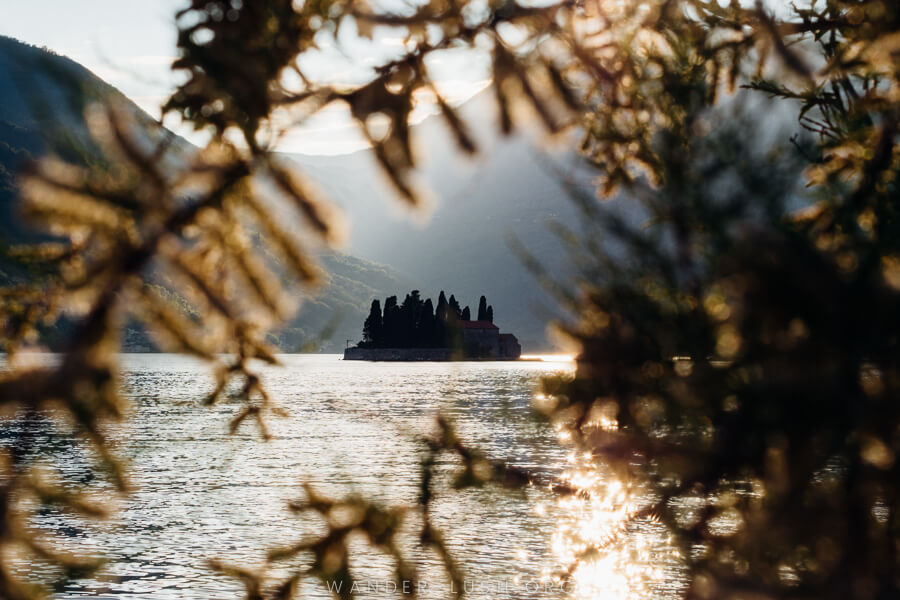
Montenegro Road Trip: The Perfect One Week Itinerary
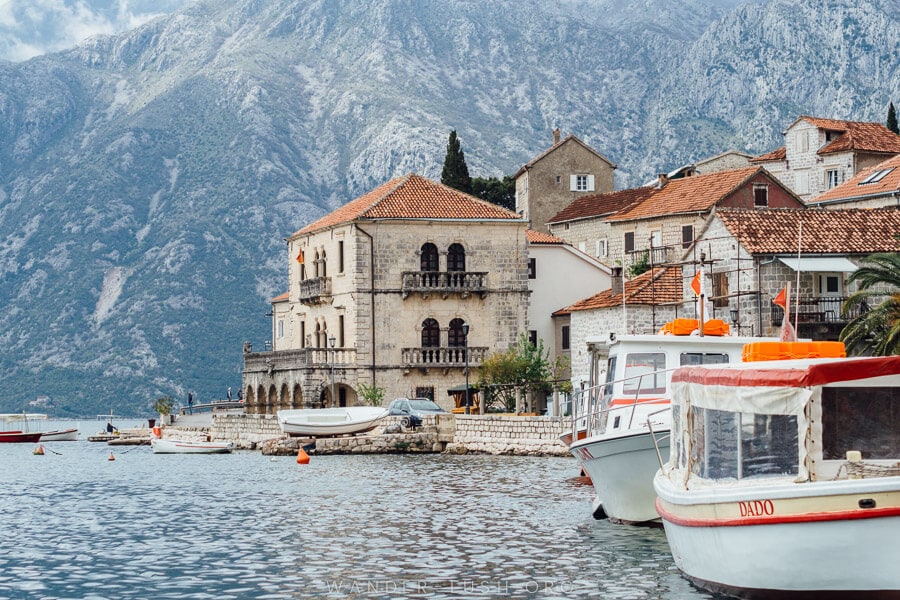
13 Things to Do in Perast, the Loveliest Town on the Bay of Kotor
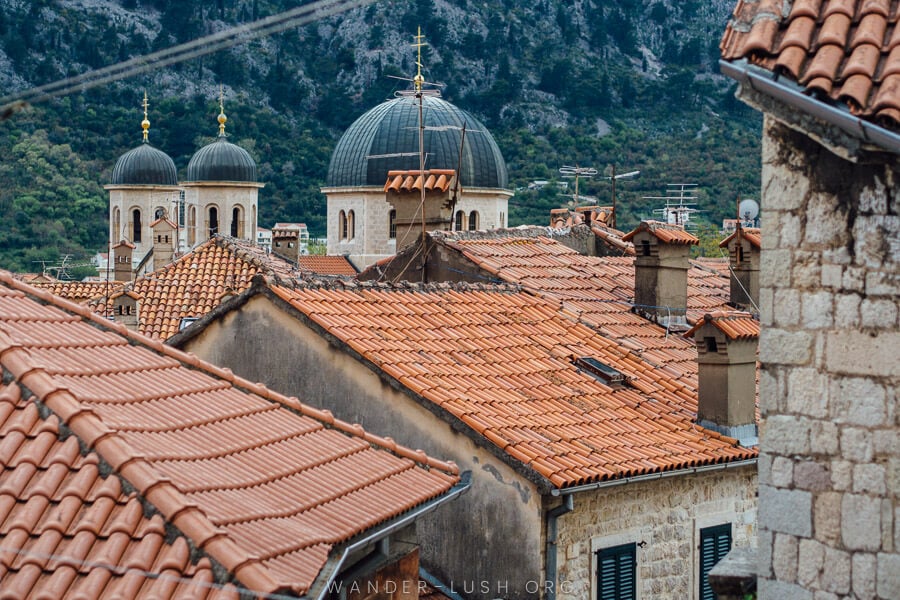
12 Wonderful Things to Do in Kotor, Montenegro
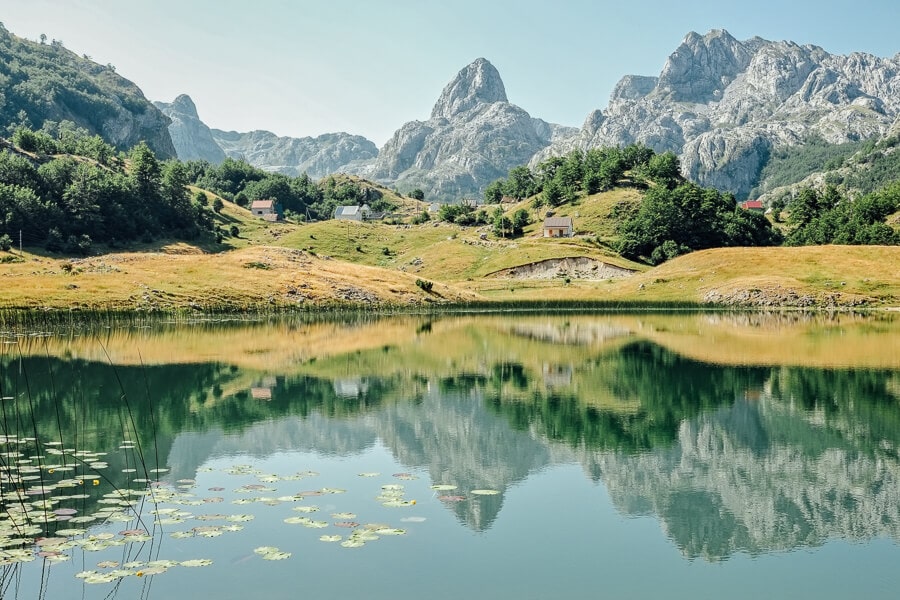
25 Most Beautiful Places in Montenegro to Add to Your Itinerary
My montenegro favourites.
Bobotov Kuk in Durmitor National Park.
Must-eat meal
Home-made Sarma (cabbage and mince rolls).
local experience
Sunset drinks in Perast on the Bay of Kotor.
best souvenir
A bottle (or two!) of local Vranac wine.
A first timer's guide to Montenegro
Book your individual trip , stress-free with local travel experts
- roughguides.com
- a-first-timers-guide-to-montenegro
Plan your tailor-made trip with a local expert
Book securely with money-back guarantee
Travel stress-free with local assistance and 24/7 support

written by Heidi Fuller-Love
updated 19.06.2019
Fringed by the Adriatic on one side and rugged mountains on the other, Montenegro (the name means "Black Mountain") makes an ideal introduction to Eastern Europe. It's peaceful and safe and is a great destination for solo travellers. Our first timer's guide to Montenegro will help you get your bearings for a trip to this small yet beautiful place.
What to expect in Montenegro
Top things to do in montenegro, tailor-made travel itineraries for montenegro, created by local experts.

17 days / from 3369 USD
Balkan Puzzle
A visit to the Balkans is an incredible experience, get ready for memorable flavours of the traditional cuisine and hospitable locals while you explore the sights: stunning panoramic views, tiny to the Adriatic coastline, idyllic and fertile valleys, pristine rivers and lakes.

7 days / from 1739 USD
A Montenegro Adventure
This is exactly what it sounds like - a trip that will take you across the small, yet magical country of Montenegro and allow you to explore its beauty from the stunning coast on the South, to the mountains and lakes on the North.

9 days / from 1946 USD
Epic Montenegro
Do you want to experience the joy, both of simple mountain life as well as the modern, luxurious spirit of the coast, then Montenegro is just the right place for you! Enjoy rafting, canyons, national parks and old towns and make your trip unforgettable.
From stunning scenery and beautiful beaches to thrilling activities and sumptuous food, this bite-sized Balkan country which sits between Europe and Asia offers something for every taste. The beach-studded coastline of this country, which was once a member the Federal Republic of Yugoslavia, is dotted with small fishing villages, ancient churches, and fortified towns, but the uncontested star of Montenegro’s striking seascape is its UNESCO-recognised Bay of Kotor.
Head inland along winding mountain roads and you’ll find remoter destinations such as the dense bear- and wolf- thronged forests of the Durmitor National Park, Biogradska Gora’s primeval forest or the Tara Canyon, Europe's Grand Canyon and a popular base for white-water rafting.
Despite adopting the Euro in 2002, Montenegro is still budget-friendly with plenty of great value accommodation options ranging from sobe, the clean simple rooms rented by private house owners, to luxury resorts where rooms, especially outside of the summer season, are surprisingly affordable.
Thinking of visiting Montenegro? We can help! Our new tailor-made trip service will connect you with a local expert to plan and book a trip designed especially for you.

The Djurdjevica bridge over the river Tara in Montenegro © Miroslava Durcatova/Shutterstock
Food is great value, too and there's a host of traditional dishes to taste. Must tries include meltingly tender smoked prosciutto from the mountain village of Njegusi, the shellfish and prawn dish buzara and the local Vranac wines. If you’re on a tight budget look out for cevabdzinicas : grilled meat shops where you can fill up on beef and pork cevapi sausages for cheap.
Hire cars are relatively inexpensive, too and it’s best to have your own transport if you want to really explore. Although slower and less frequent, there are also buses that travel to most of the main sights, but for panoramic views you can’t beat the slow train which runs between Bar and Belgrade via Podgorica and Skadar lake.
Boat in the bay
The beautiful Bay of Kotor, known locally as Boka (which just means ‘the bay’) is a water wonderland dotted with ancient churches and medieval and Venetian-era settlements. The best way to explore is to take a boat trip with an outfit like Kotor Bay Tours . Stop offs en route include The Blue Cave, a grotto surrounded by brilliant turquoise waters and Our Lady of the Rocks, an artificial island which, according to legend, was created some five centuries ago after two brothers discovered an ancient Madonna icon on a rock here. Longer boat trips will also stop over at Perast, a tiny atoll described as ‘the Montenegrin Venice’ because of its streets lined with ancient churches and Baroque palaces that were once home to Russian Czars and Venetian Princes.

The beautiful Bay of Kotor © canadastock/Shutterstock
Where to eat, hike and stay
Back in Kotor town lace up your trainers and hike the 1,355 steps alongside the great wall that once protected the city from invaders, to reach the top of mount Sveti Ivan. Pause to take in the views over the glittering bay far beneath, then head back to explore Kotor town’s tangled web of cobbled streets, lined with honey stone buildings that are home to tiny restaurants, and stores selling everything from sun cream to local fruit brandy rakija and traditional black and red kapa hats.
Back in the bay have lunch at Verige65 – a restaurant with panoramic views of the Verige strait – whose modern take on local dishes includes a delectable prosciutto dish, served with homemade sausage and local cheese. Spend the night at Portonovi resort, an elegant waterfront resort close to the laidback town of Herceg Novi (and some of the bay’s best beaches), which was built to look like a traditional village. Alternatively, head for Hervceg Novi town and bag a budget bed at Guesthouse Tomanovic.

Explore buzzing beaches, great lakes and grand canyons
Further along the coast, Budva, known as ‘the Montenegrin Miami’ because of its beautiful (but crowded) beaches and lively (but expensive) nightlife scene, is a good starting point for boat trips to visit pretty St. Nicholas Island and some of the region’s best beaches. An hour or so inland from Budva, Skadar, which is Southern Europe’s largest lake, sits on the border with neighbouring Albania. Also known as Shkodra, Shkodër or Scutari, this vast stretch of water is a haven for migrating birds and rare species, including big beaked Dalmatian pelicans and a host of rare and exotic lizards. The best way to explore is to hop on one of the small fishing boats that shuttle back and forth over the lake’s lily-strewn waters.

Budva from the air © Tjasa Razinger/Shutterstock
From here it’s a few hours drive, or bus ride to Durmitor National Park, home of the spectacular, 1.3km deep Tara Canyon which is the world’s second deepest, right after Arizona's Grand Canyon. High flung capital Zabljak, with its restaurants serving traditional food and its great value sobes makes an ideal base for exploring this wild and lovely region. Whether you choose to swim in the Back Lake’s icy waters, zipline across the Tara Canyon or take an exhilarating white water rafting trip along the Tara River, this is the perfect place to end your first trip through one of Eastern Europe’s most fun and friendly countries.
Need to know before you go
- Although English is spoken widely, you’ll make instant friends if you use a few Montenegrin words - try zdravo (hello) and hvala (thankyou).
- Away from tourist areas many shops, hostels and restaurants do not accept credit cards – make sure to have some euros on hand if you decide to get off the beaten track here.
Find more ideas for your trip to Montenegro in our guide to the best things to do in Montenegro .
Top image: Kotor seen from Sveti Ivan fortress © eFesenko/Shutterstock
- See & Do
Planning your own trip? Prepare for your trip
Use Rough Guides' trusted partners for great rates
Travel advice for Montenegro
From travel safety to visa requirements, discover the best tips for traveling to Montenegro
- How to get to Montenegro
- Travel Tips Montenegro for planning and on the go
- Culture and Etiquette in Montenegro
- Eating and drinking in Montenegro
- Getting around Montenegro: Transportation Tips
- Sports and Outdoor activities in Montenegro
- Best time to visit Montenegro
Find even more inspiration for 47 here

Ready to travel and discover Montenegro?
Get support from our local experts for stress-free planning & worry-free travels.
- Where to stay
- Travel advice
- Weather Guides For Every Country In The World
- Algeria: Two Week Journey
- Cairo Travel Guide
- Burkina Faso
- Central African Republic
- Côte d’Ivoire (Ivory Coast)
- Democratic Republic of the Congo
- Equatorial Guinea
- Guinea-Bissau
- Best Time to Visit
- Entry Rules and Visa requirements
- Salt Cathedral of Zipaquirá
- Dominican Republic
- Antigua and Barbuda
- El Salvador
- Afghanistan
- Bahrain Travel Guide
- The Cook Islands
- Aktau (Kazakhstan) Travel Guide
- Roadtrip in Western Kyrgyzstan
- Journey around Issyk-Kul
- Pakistan travel guide
- Albania Road Trip Guide
- Albania’s Entry Rules
- Yerevan Travel Guide
- Faroe Islands
- Suburbs of Paris
- Batumi Travel Guide
- Tbilisi Raves
- Peloponesse Road Trip Guide
- Modern Milanese architecture
- Budva Travel Guide: Montenegro’s main resort
Montenegro Road Trip Guide
- Transylvania
- Journeying Through History: The BAM Railway Experience
- Veliky Ustyug Travel Guide: Meet the Ded Moroz
- Belgrade’s Cultural Guide
- Belgrade Off the Beaten Path
- Road Trip Guide
- From Grodno to Brest: a roadtrip
- Bosnia and Herzegovina
- Holy See (Vatican)
- Liechtenstein
Montenegro: The Complete Travel Guide for Every Type of Traveler
Montenegro is small but stunning country in the Balkans has recently become a hotspot for discerning travelers looking for natural beauty, historic wonders, and a unique blend of European cultures.
Table of Contents
Why Visit Montenegro?
Breathtaking landscapes.
Imagine cruising along the Bay of Kotor, enveloped by towering limestone cliffs. Whether you’re an outdoor enthusiast or a laid-back wanderer, Montenegro’s landscapes won’t disappoint. From the sandy beaches of Budva to the lush forests of Biogradska Gora National Park, Montenegro offers a diverse array of natural attractions.
Rich History
Montenegro’s rich tapestry of history is evident in its ancient walled towns, Byzantine-era churches, and Venetian fortresses. Walk through time as you explore the cobblestone streets of Kotor, or take a guided tour of the Ostrog Monastery, built into a near-vertical cliff.
Diverse Activities
If you’re into water sports, the Adriatic Sea offers excellent opportunities for sailing, snorkeling, and diving. For those who prefer land-based adventures, there are plenty of hiking and biking trails in Durmitor National Park. And let’s not forget the rich culinary experiences and vibrant nightlife that await in cities like Podgorica and Budva.
Warm Hospitality
Montenegrins are known for their warmth and hospitality. Expect to be greeted with a smile, maybe even a homemade rakija (a local brandy), as you make your way through local markets, guesthouses, and even monasteries.
Best Time to Visit Montenegro
Spring (march-may).
Spring in Montenegro is a season of renewal, where wildflowers bloom and the weather is mild. It’s an excellent time for outdoor activities and for exploring the towns without the summer crowds.
Summer (June-August)
This is peak tourist season, characterized by warm weather and a plethora of festivals. The beaches and major tourist sites can be crowded, but the vibrant atmosphere is hard to resist. If you’re planning to visit popular destinations like Budva or Kotor, it’s advisable to book accommodations in advance.
Best Time to Visit Montenegro in 2024 for Beaches, Hiking, and Cultural Tours. Montenegro Weather Guide
Autumn (September-November)
Autumn brings a serene atmosphere, fewer crowds, and the chance to see Montenegro’s landscapes transform into hues of orange and gold. It’s an ideal time for those who want to experience the country’s natural beauty in a more tranquil setting.
Winter (December-February)
While not the most popular season for tourists, winter in Montenegro offers its own unique charm. The coastal areas remain relatively mild, while the northern regions are covered in snow, offering opportunities for winter sports like skiing and snowboarding, especially in areas like Kolašin and Žabljak.
By understanding the unique characteristics of each season, you can plan a trip that aligns with your interests, whether they involve sun-soaked beaches, snow-capped mountains, or anything in between.
How to Get to Montenegro
Flying is the most convenient way to reach Montenegro for most international travelers. The country has two main international airports—Podgorica Airport and Tivat Airport. Podgorica serves as a hub for various European airlines, providing good connections to cities like London, Frankfurt, and Istanbul. Tivat Airport is closer to the coastal regions and gets seasonal flights from numerous European cities.
Train travel offers a more scenic but slower way to enter Montenegro. The Belgrade to Bar railway is particularly famous for its stunning views as it passes through mountains and over bridges. While the train system is not as fast or modern as those in Western Europe, it offers an unforgettable experience of the Balkan landscape.
Buses are a popular way to enter Montenegro from neighboring countries like Croatia, Serbia, and Albania. Many bus companies run daily services, making it easy and affordable to get into various Montenegrin cities. Podgorica and Budva have the most extensive bus connections.
If you enjoy the freedom of exploring at your own pace, renting a car is an excellent option. Montenegro has well-maintained roads, and driving allows you the freedom to explore lesser-known spots that are not easily accessible by public transport. Just be aware that some areas require a vignette (toll sticker), and it’s crucial to understand the local driving laws and regulations.
During the summer months, there are ferry services that connect the Italian port cities like Bari and Ancona to Bar in Montenegro. This option is particularly popular among tourists traveling along the Adriatic coast.
No matter how you choose to arrive, Montenegro welcomes you with a blend of natural beauty and cultural richness that makes any journey worthwhile.
Popular Destinations in Montenegro
A UNESCO World Heritage site, Kotor is renowned for its well-preserved medieval architecture and stunning natural setting. Nestled at the head of southern Europe’s deepest fjord, the town is surrounded by fortifications built during the Venetian period. You can wander through the Old Town’s maze-like streets or hike up to the fortress for panoramic views.
Famous for its vibrant nightlife and beautiful beaches, Budva is a must-visit for anyone looking for a lively coastal experience. The Old Town, a small peninsula full of historic churches and Venetian walls, offers a contrast to the bustling modern beach resorts.
Budva Travel Guide: Montenegro’s main resort
Durmitor National Park
If outdoor adventures are more your style, Durmitor National Park provides an array of activities such as hiking, white-water rafting, and skiing in winter. The park is home to the Tara River Canyon, the deepest canyon in Europe, as well as numerous glacial lakes known as the “Eyes of the Mountain.”
The capital city might not have the old-world charm of Kotor or the beaches of Budva, but it serves as a hub for travel within Montenegro and offers its own set of attractions. With its modern cafes, parks, and museums, Podgorica provides a different, more urban experience of Montenegrin life.
Sveti Stefan
This small islet and its accompanying resort offer a luxurious getaway, complete with stunning views of the Adriatic. Once a fortified village dating back to the 15th century, Sveti Stefan is now a five-star hotel complex that offers unparalleled luxury.
Lake Skadar
One of the largest freshwater lakes in Europe, Lake Skadar is a paradise for birdwatchers and nature enthusiasts. The lake lies on the border between Montenegro and Albania and is surrounded by dramatic mountains, offering plenty of opportunities for kayaking, bird watching, and hiking.
A port town with a blend of modernity and tradition, Bar is known for its olive groves and historical ruins, including Stari Bar—an ancient fortified town. The town is also the terminus for the scenic Bar to Belgrade railway.
These destinations showcase the diversity of Montenegro’s landscapes, from coastal towns to mountainous national parks, offering something for every type of traveler. Whether you’re a history buff, a nature lover, or someone who just wants to relax by the sea, Montenegro has a destination that will captivate you.
Montenegrin Cuisine: What to Eat
Seafood specialties.
Given its location along the Adriatic Sea, it’s no surprise that Montenegro offers an abundance of seafood dishes. Grilled fish, squid, and various shellfish are commonly found in coastal towns like Kotor and Budva. Don’t miss the chance to try “black risotto,” a dish made with squid ink.
Meat Dishes
In the mountainous regions, meat takes center stage. Lamb and veal are particularly popular and are often slow-cooked in traditional ispod sača (under the bell) style. Njeguški Steak, a pork steak stuffed with local Njeguši cheese and prosciutto, is a must-try.
Local Cheeses
Cheese aficionados will be pleased to find a variety of local cheeses to sample. Njeguši cheese, made in the Njeguši region, is one of the most famous and is often served with prosciutto. Pljevaljski cheese, a strong-tasting crumbly cheese, is another local favorite.
Breads and Pastries
Bakery products like pogača (a type of bread) and various savory and sweet pastries are common accompaniments to Montenegrin meals. Burek, a flaky pastry filled with cheese, meat, or potatoes, is a popular snack or quick meal.
Traditional Beverages
Montenegro is known for its strong spirits, particularly rakija, a fruit brandy commonly made from grapes or plums. For a non-alcoholic option, try Boza, a fermented beverage made from maize (corn) and wheat.
Craving something sweet? Try tufahije, a dessert made from apples stuffed with sugar and walnuts, or knedle, sweet dumplings filled with plums or cherries.
Montenegrin cuisine offers a rich tapestry of flavors and influences, reflecting the country’s diverse landscapes and cultural history. Whether you’re dining in a high-end resort or a family-owned konoba (tavern), you’re sure to find something that delights your palate.
Accommodation Options
From luxury resorts to budget-friendly hotels, Montenegro offers a wide range of options to suit every traveler’s needs. Major cities like Podgorica and tourist hotspots such as Budva and Kotor boast a variety of international hotel chains and boutique options. Amenities often include swimming pools, on-site restaurants, and wellness centers.
Guesthouses and B&Bs
For a more personalized experience, consider staying in a guesthouse or bed-and-breakfast. These accommodations often provide a cozy, home-like atmosphere and allow you to interact with local hosts. Many guesthouses also offer home-cooked meals, giving you an authentic taste of Montenegrin hospitality.
Younger travelers and those on a budget might prefer hostels, which are primarily found in bigger cities and popular tourist areas. Hostels offer basic amenities and are a great way to meet other travelers. Private rooms are usually available for those who want a bit more privacy.
Vacation Rentals
Platforms like Airbnb and Booking.com offer a plethora of vacation rentals, from modern apartments in urban centers to rustic cottages in the countryside. These are ideal for families or groups who prefer the conveniences of home, such as a kitchen and private living spaces.
Camping and Eco-Lodges
For the nature enthusiasts, camping sites and eco-lodges provide a unique experience immersed in Montenegro’s scenic landscapes. These options are especially popular near natural attractions like Lake Skadar and Durmitor National Park.
Luxury Resorts
If you’re looking for a more luxurious experience, Montenegro has a growing number of high-end resorts, particularly along the Adriatic coast. These establishments offer premium amenities like private beaches, gourmet dining, and spa services.
Agrotourism
For something a little different, agrotourism accommodations offer you the chance to stay on a working farm or vineyard. It’s a wonderful way to experience Montenegrin rural life and enjoy farm-to-table meals.
No matter your budget, travel style, or destination within Montenegro, you’ll find a wide range of accommodations to make your stay comfortable and enjoyable.
Travel Tips and Safety
Visa requirements.
Visa requirements for Montenegro vary depending on your nationality. Citizens of many countries, including the EU member states, the United States, and Canada, do not require a visa for short stays up to 90 days. However, it’s essential to check the most up-to-date information from official sources as visa policies can change.
Currency and Payment
Montenegro uses the Euro (€) as its official currency, even though it is not a member of the European Union. ATMs are widely available, and credit cards are accepted in most hotels, restaurants, and shops. However, it’s advisable to carry some cash, especially when visiting smaller towns or rural areas.
Euro current exchange rates
- 100 EUR = $107.30 or $1 = 0.93 Euro
Other currencies:
- 100 EUR = 85.54 British Pounds
- 100 EUR = 163.26 Australian Dollar
- 100 EUR = 146.68 Canadian Dollar
- 100 EUR = 1,165.17 Swedish Krona
- 100 EUR = 433.10 Polish Zloty
- 100 EUR = 2,498.71 Czech Koruna
- 100 EUR = 146,202.21 South Korean Won
- 100 EUR = 776.60 Chinese Yuan
- 100 EUR = 16,447.73 Japanese Yen
Health Precautions
Montenegro has a relatively robust healthcare system, but it’s recommended to have travel insurance that covers medical expenses. If you plan to hike or spend time in rural areas, make sure you’re updated on routine vaccinations, and consider tick-borne encephalitis and hepatitis vaccinations.
Local Customs and Etiquette
Montenegrins are generally warm and welcoming. Standard European customs apply—greet people with a handshake, maintain eye contact, and observe polite dining etiquette. Tipping is customary but not mandatory; a tip of around 10% is appreciated in restaurants.
Transportation
Public transportation options are limited outside major cities. Buses are the primary form of public transport, but they may not always run on time. Renting a car gives you the most flexibility, but be cautious when driving on mountain roads and during winter conditions.
Safety Concerns
Montenegro is generally considered a safe country for travelers. Petty crimes like pickpocketing can occur in busy tourist areas, so exercise usual caution. Emergency services are reliable, and police presence is noticeable in larger towns and tourist destinations.
Language Barrier
While Montenegrin is the official language, English is widely understood in tourist areas and by younger people. However, learning a few basic phrases in Montenegrin can go a long way in making your trip more enjoyable.
Connectivity
Wi-Fi is readily available in hotels, cafes, and many public spaces. SIM cards with data plans are inexpensive and can be purchased at the airport or local shops, offering good coverage across the country.
Useful Websites
- Visit Montenegro – Official tourism website offering comprehensive information on destinations, activities, and accommodations.
- Lonely Planet – Montenegro – Renowned travel guide providing in-depth articles, tips, and itineraries for Montenegro.
- Skyscanner – A global travel search engine where you can compare and book cheap flights to Montenegro.
- Booking.com – Montenegro – A popular platform for booking hotels, guesthouses, and other types of accommodations in Montenegro.
- TripAdvisor – Montenegro – Offers traveler reviews and opinions on accommodations, attractions, and restaurants in Montenegro.
- Rome2rio – A useful tool for planning your journey to and within Montenegro, offering various transport options and costs.
- XE Currency Converter – A reliable website for checking current exchange rates for the Euro, which is used in Montenegro.
- CDC Travel Health Notices – Centers for Disease Control and Prevention page offering health advisories and recommendations for travelers to Montenegro.
- Montenegro Travel Forum – A community forum where you can ask specific questions and get answers from fellow travelers and locals.
- Rail Europe – Montenegro – Offers information on train travel within Montenegro, including the scenic Belgrade to Bar route.
Montenegro is a destination that offers a rich tapestry of experiences for every traveler. From the sun-kissed beaches of the Adriatic coast to the rugged beauty of its mountainous interior, there’s something for everyone to enjoy. The country’s diverse landscapes are matched by its equally varied cultural heritage and culinary offerings. Whether you’re an outdoor enthusiast, a history buff, or simply looking to unwind in a scenic setting, Montenegro provides an unforgettable journey.
No related posts.
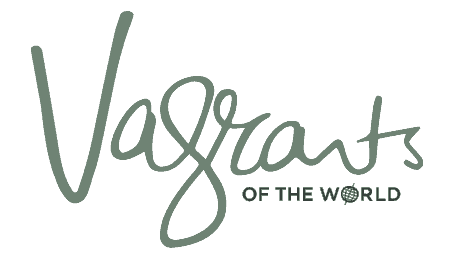
Ultimate 5 Day Montenegro Travel Itinerary (2024)
By: Author Vagrants of the World Travel Writer
Posted on Last updated: January 16, 2024
Home >> Europe >> Montenegro >> Ultimate 5 Day Montenegro Travel Itinerary (2024)
Montenegro is truly an undiscovered gem, with so much to see within this tiny Balkan nation. While Montenegro travel has grown slightly in recent years, it is still an excellent under-the-radar place to see within Europe.
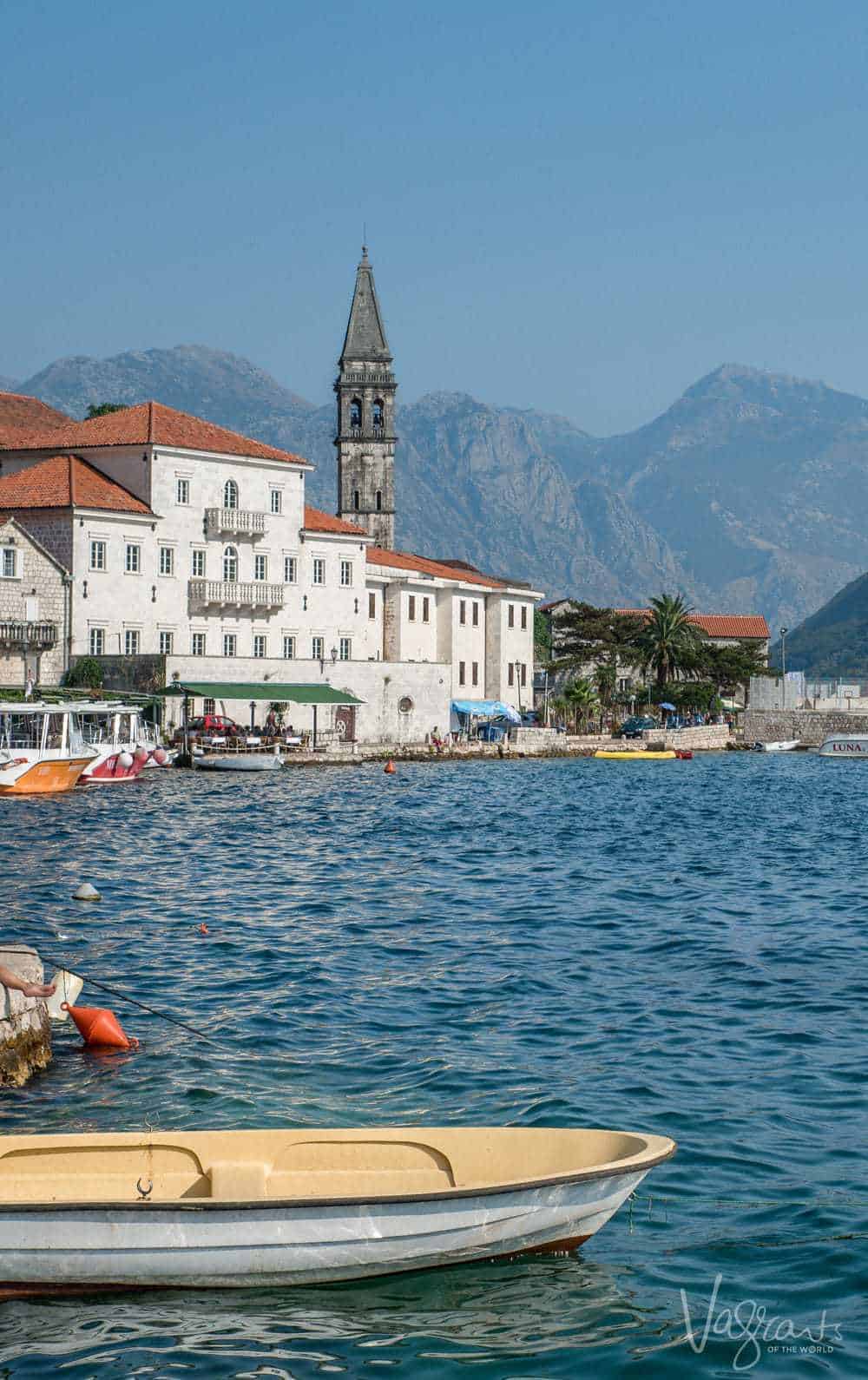
Once a playground for the rich and famous, the beauty and magic of Montenegro is once again coming to the attention of savvy travellers looking for a Mediterannean experience without the crowds.
For a tiny country, Montenegro is brimming with staggering natural beauty and diversity. 5 days is just enough time to experience some of the best things to do in Montenegro and get a feel for this tiny nation’s fascinating history and culture. More time is always better, but thanks to Montenegro’s small size, travelling around the country is relatively quick and easy.
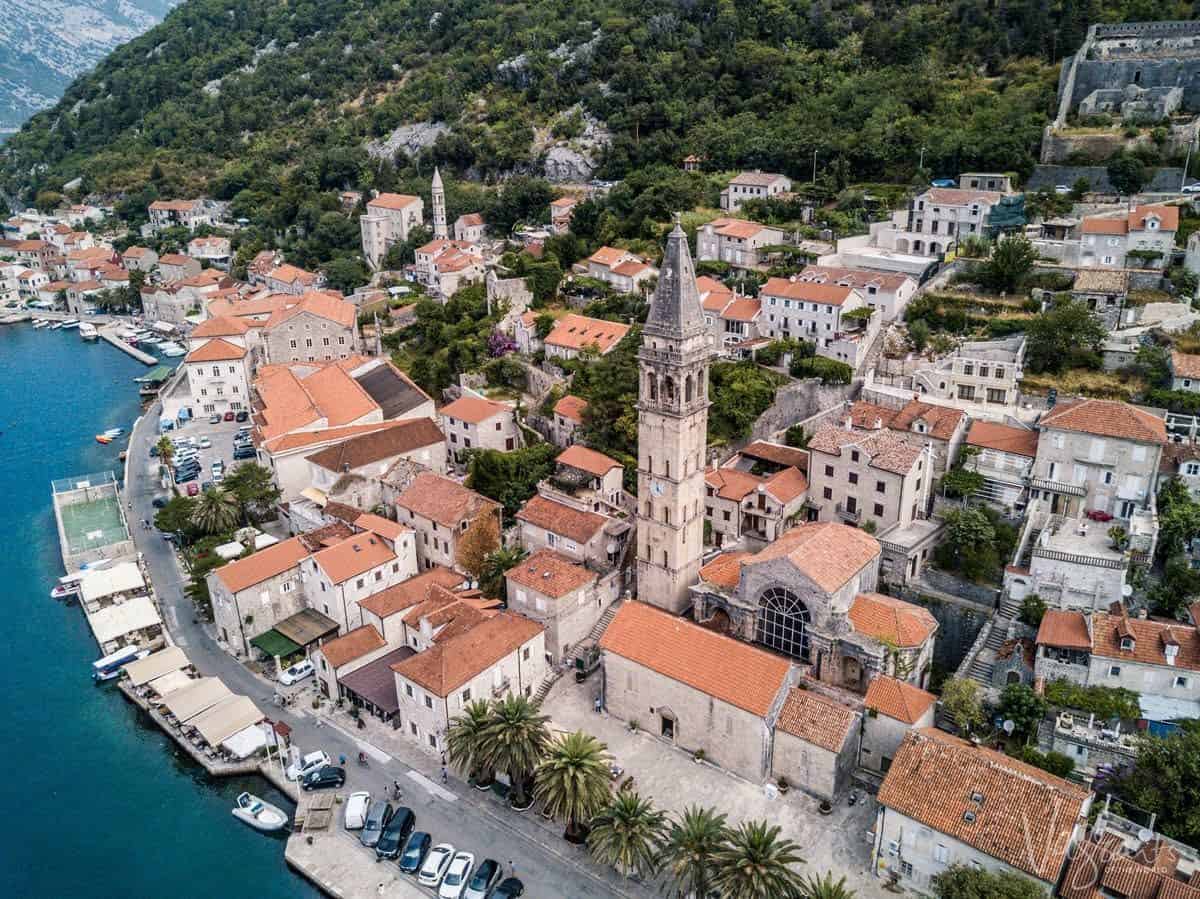
Table of Contents
5 Day Montenegro Itinerary
This five day Montenegro itinerary will give first-time visitors a perfect introduction to the beauty and diversity of Montenegro from the cities to mountains, and it’s pristine coast.
Day 1: Tivat
Arriving at the international airport in Tivat on the Bay of Kotor is the perfect place to start your five days in Montenegro. (Many people also come to Montenegro via Dubrovnik airport as there are more flight services and the border crossing is very straightforward and close to Tivat).
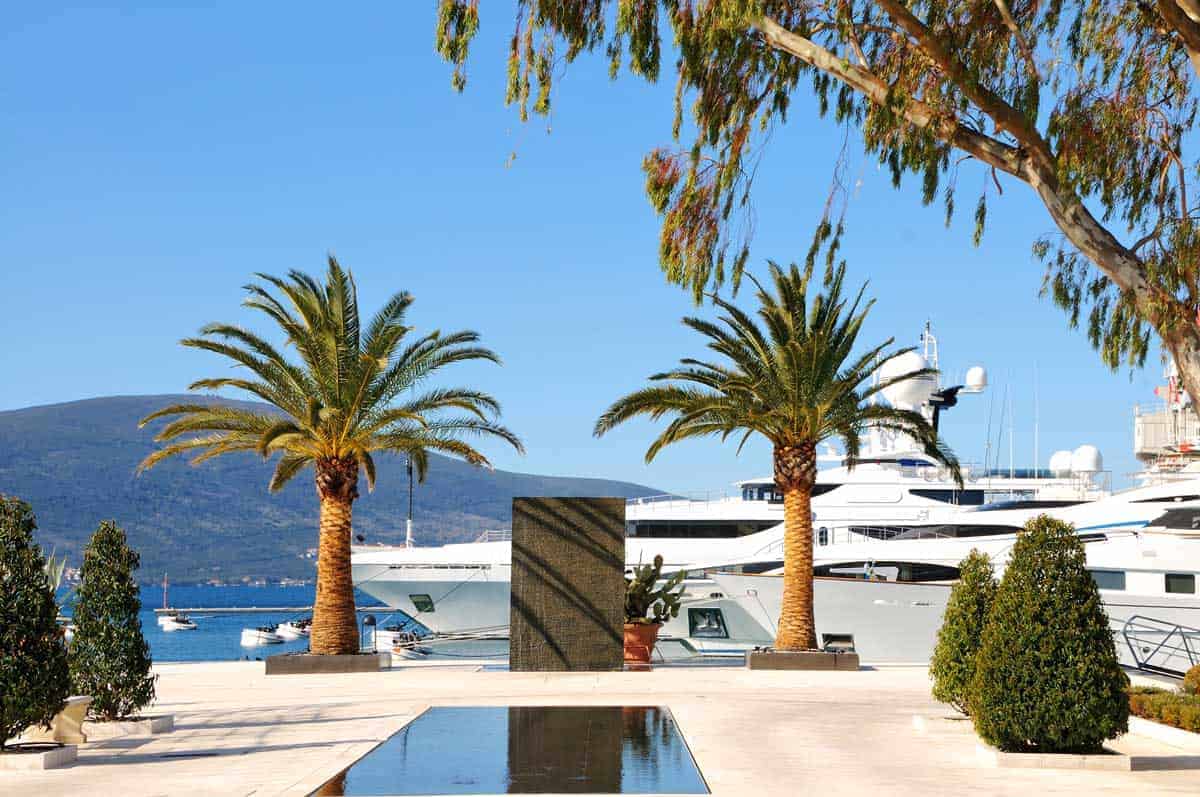
Tivat is one of the more modern and upscale towns in Montenegro. Often referred to as the Monaco of Montenegro, Tivat attracts the superyacht set and jet-set elite during the summer months. You can experience a unique contrast to the older and more historic cities and get a feel for what attracted film stars and royalty to Montenegro before the war.
Tivat boasts a beautiful new marina development that fills with magnificent mega-yachts during the season. It also has enough high end shops and restaurants to keep you busy for a few days. There are some fabulous restaurants to try in Tivat as well. For delicious Balkan cuisine, try Dukley Seafront .
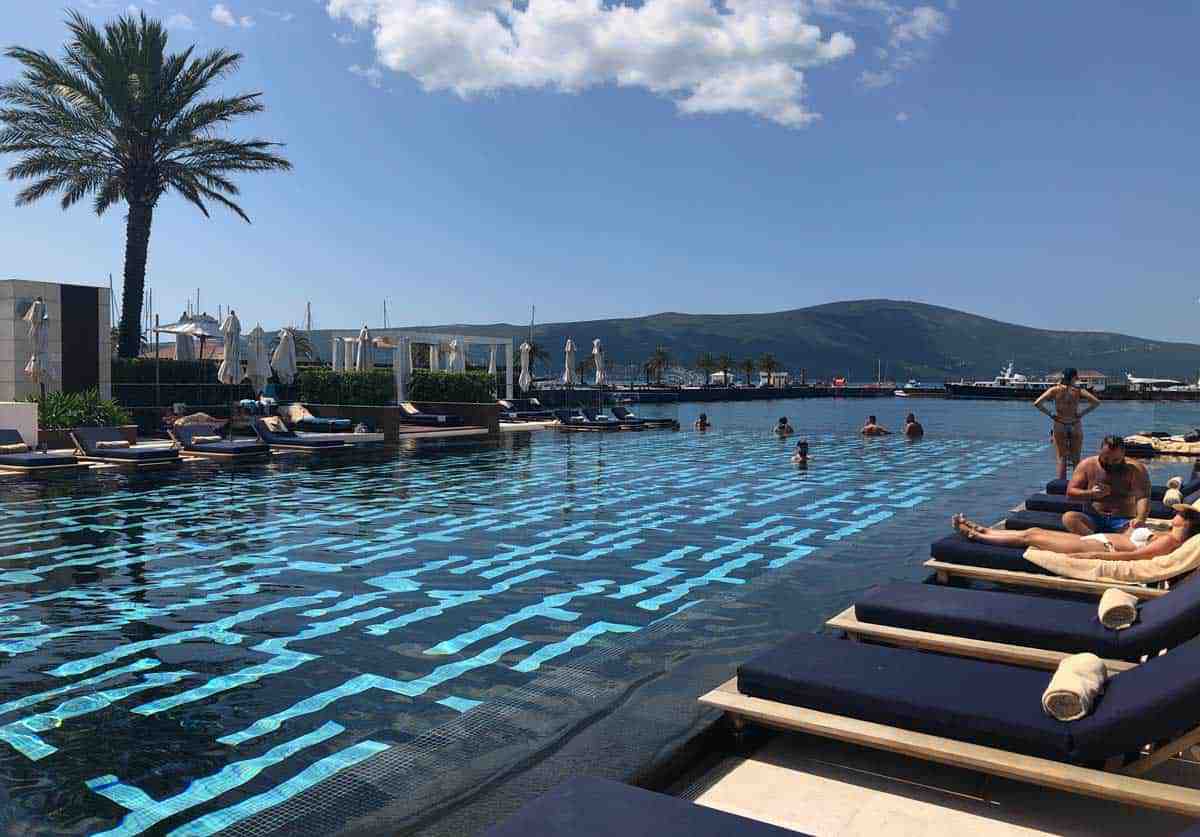
Suitably, Tivat also has a great beach club. The Beach Club Porto Montenegro is a great place to travel to and relax next to the infinity pool and soak up the excellent Montenegrin hospitality.
Day 2: Budva
After relaxing in Tivat on your first day, make a short 30-minute drive to the city of Budva.
Budva has long been one of Montenegro’s most popular holiday destinations because of its beauty and lively atmosphere. Budva is also the nightlife capital of Montenegro with one of the best nightlife scenes in the country. It is the perfect place to enjoy a day of sightseeing or beaches, followed by a night on the town.
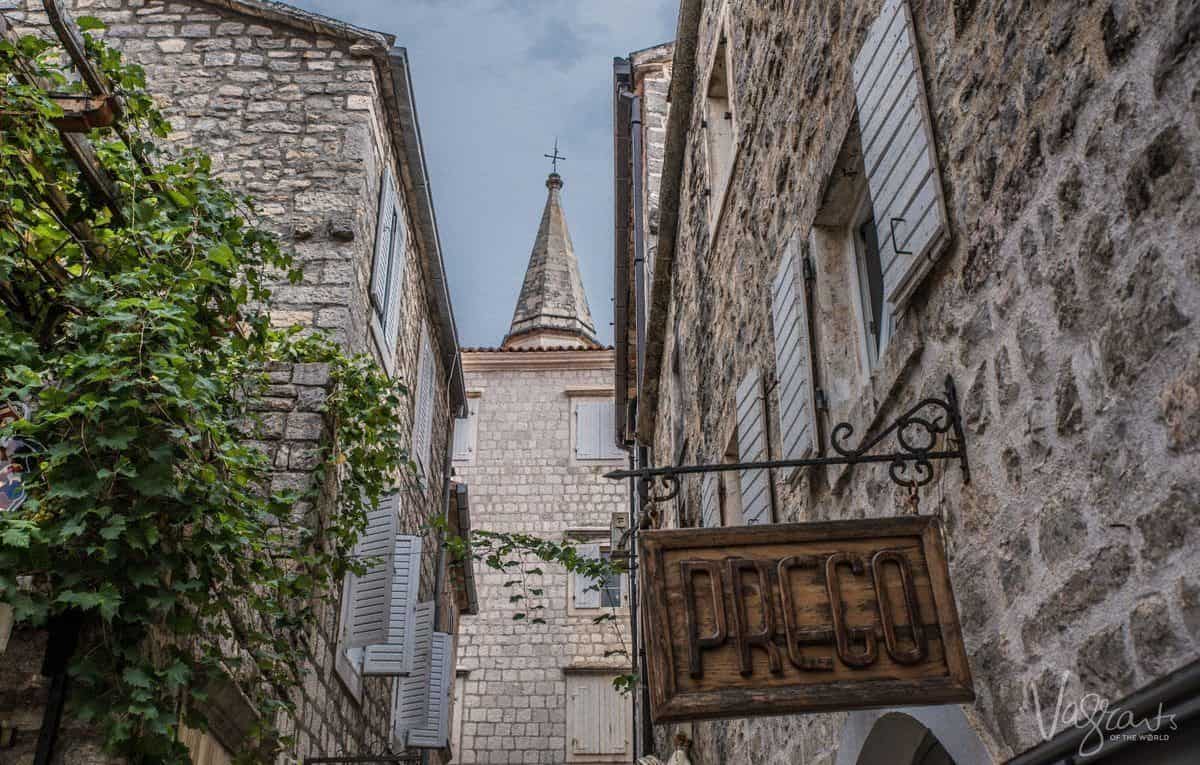
Despite the modern holiday condominiums catering to the summer crowds, the highlight of Budva is the Old Town which still makes up a considerable part of the city. You can wander around for hours searching through the narrow alleyways, cobblestone streets, and local shops. The Old Town also has a good selection of good typical restaurants.
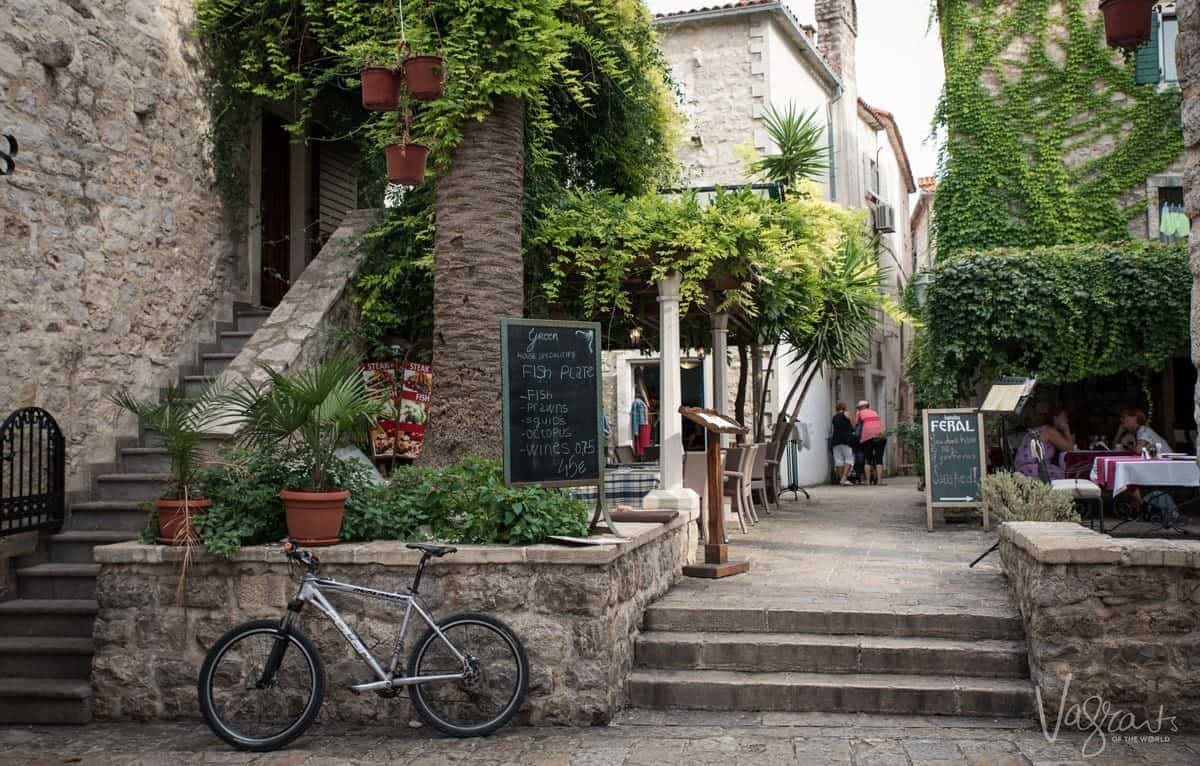
Budva also has a good beach for enjoying the great weather and crystal waters of the Adriatic coast. At the end of the day, enjoy Buvda’s vibrant nightlife. There are various bars and clubs with great music and cheap drinks. There is also a huge music hall called Top Hill which often hosts big-name DJs and artists.
Day 3: Kotor
No trip to Montenegro is complete without visiting the country’s most famous city, Kotor, a small coastal town at the end of Kotor Bay.
Surrounded by huge mountains and blue water, it is one of the most magical places to travel to in Montenegro. Kotor is so picturesque; it is the striking images of the city that has made Montenegro famous.
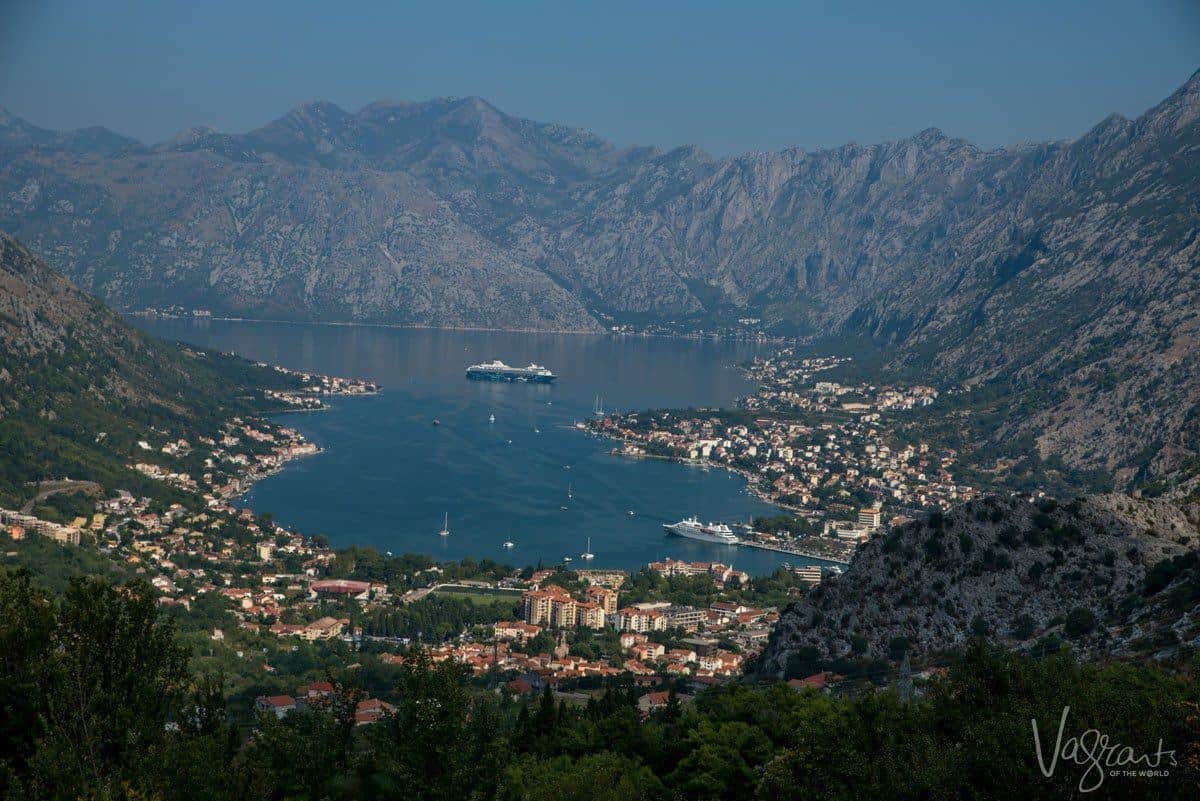
There are two main things to do in Kotor while visiting the city – First, explore Kotor Old Town, which is often compared to the old town in Dubrovnik. However, unlike Dubrovnik where many only spend a day or even a few hours, Kotor’s old town has fewer tourists despite an increasing cruise ship presence in Montenegro, which makes it more enjoyable to explore.
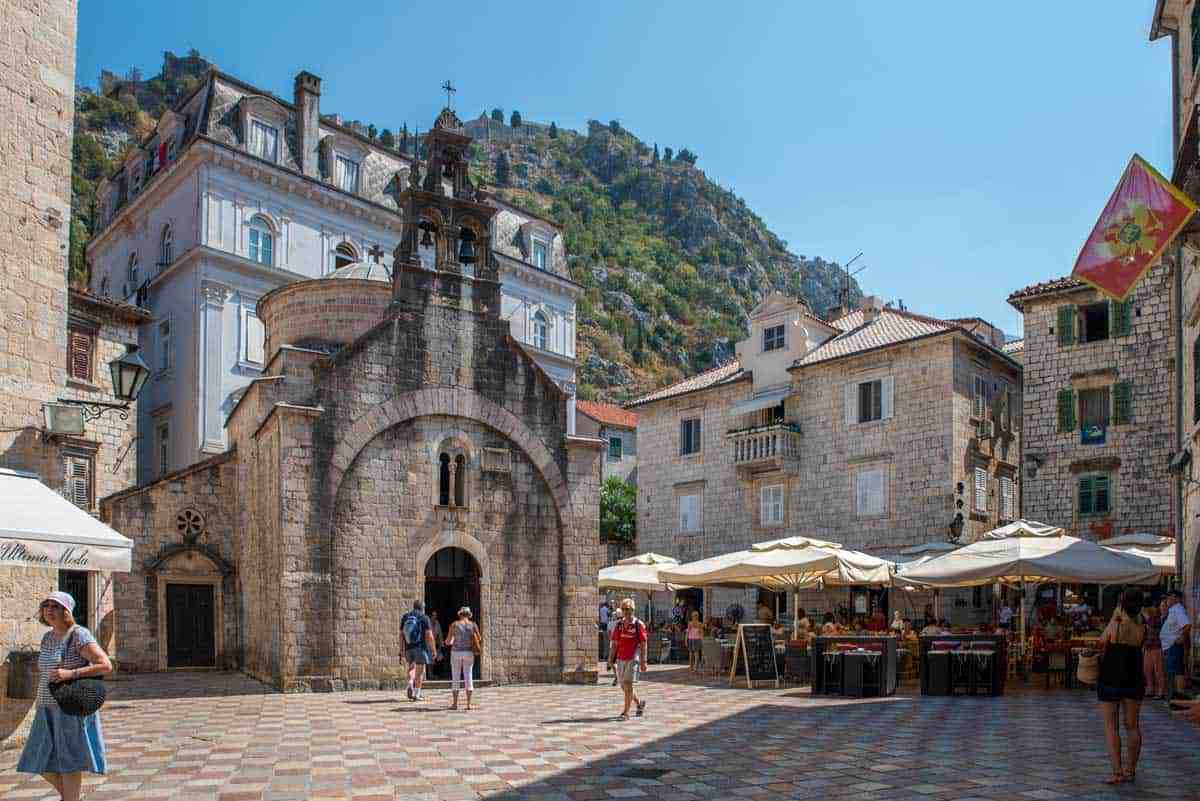
Morning and evenings are your best bet during peak summer times for a genuinely relaxed time in Kotor.
The second thing to do in Kotor is to hike the Kotor Fortress. One of the most popular things to do in Montenegro, the climb reveals some of the most magical and breathing views of the Bay of Kotor.
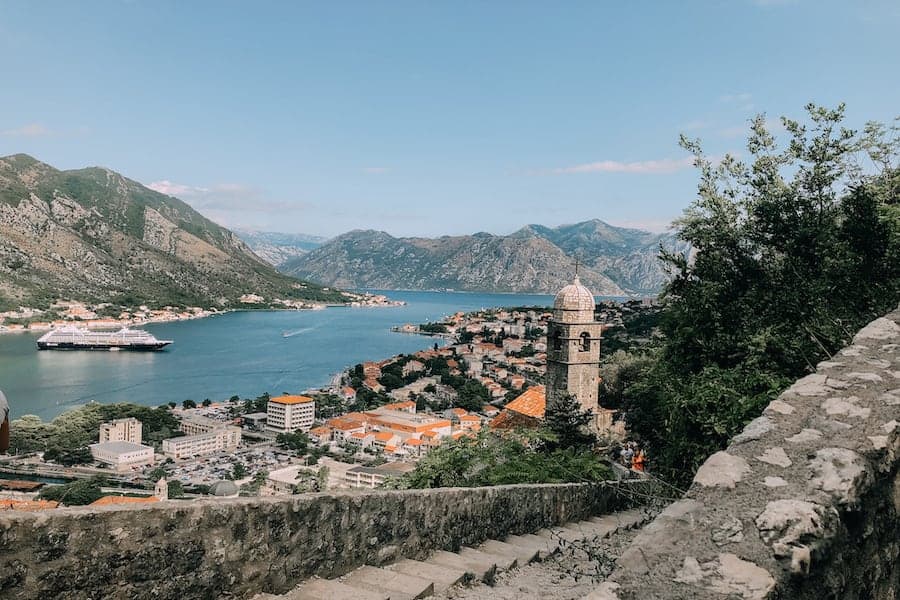
The hike to the top of the fortress takes around 45 minutes and costs 8 euros. It is a pretty steep uphill climb, and the rocks are slippery. If you visit Montenegro in the summer, try to plan your hike before 10 AM when the sun passes the mountains. While you can explore Kotor on your own, we recommend this private walking tour of Kotor with food and wine .
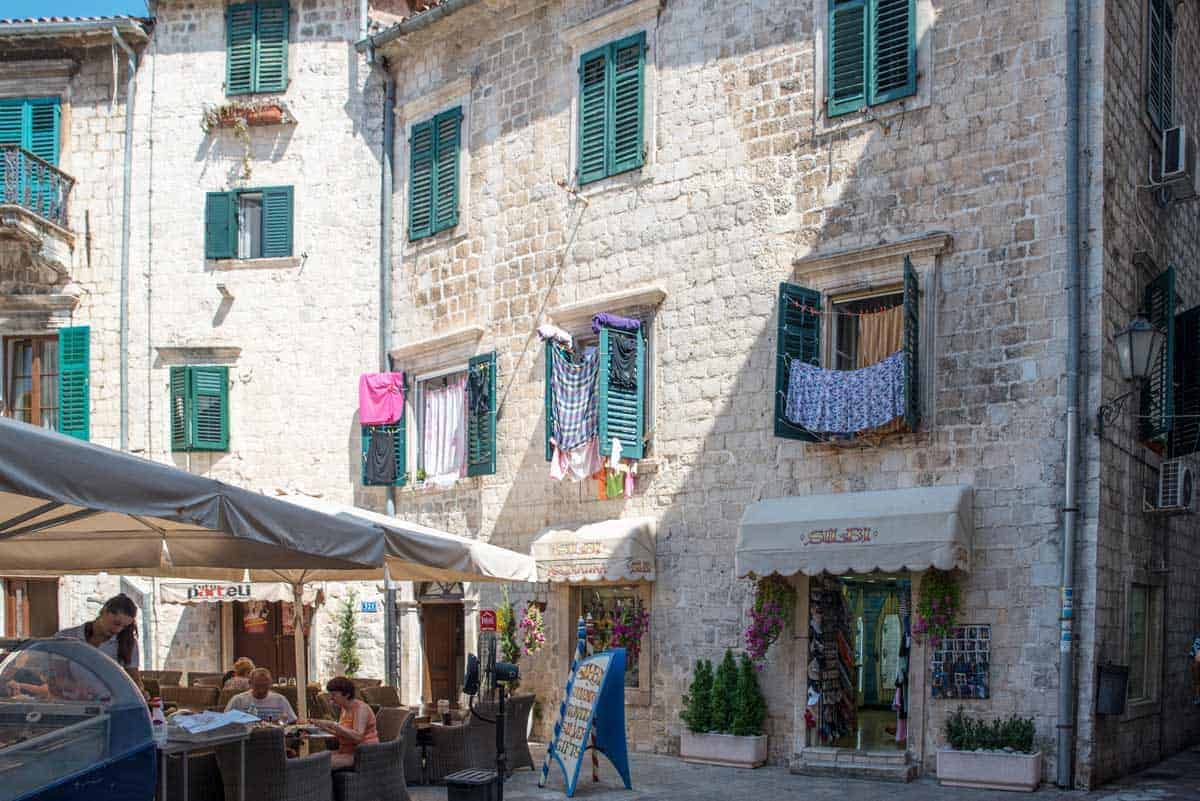
Day 4: Kotor & Perast
With only five days to travel in Montenegro, you will find yourself moving around a lot. Two days in Kotor positions you to explore more without having to relocate again. On your second day in Kotor, plan a day trip to the UNESCO listed town of Perast and Our Lady of the Rocks a short distance from Kotor. We recommend this Our Lady of the Rocks tour , which includes a boat tour of Mamula and the Blue Cave.
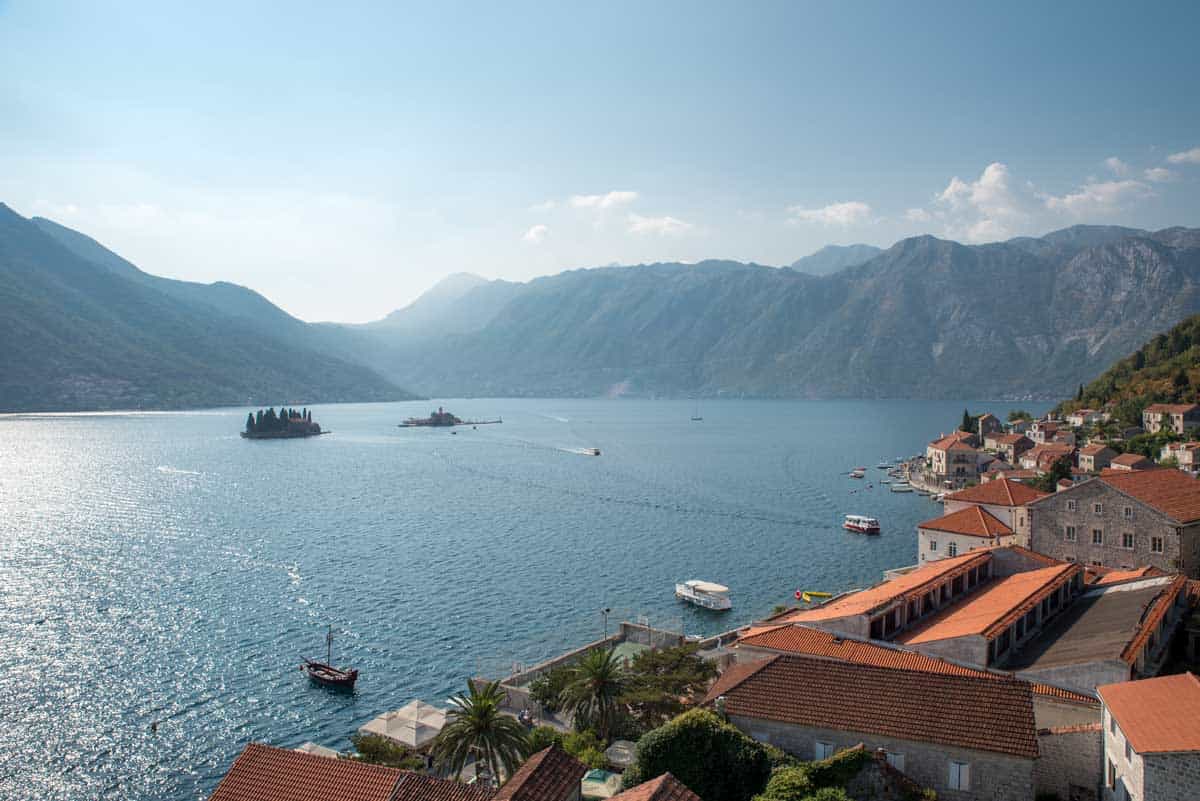
The small town of Perast is located 20 minutes from Kotor easily reached by bus or boat. Perast has the old warm charm of Montenegro with a laid back holiday beach vibe and spectacular views of Kotor Bay. You will also find some charming restaurants along the waterfront. One of our favorite restaurants is Otok Bronza , serving delicious fresh-caught seafood.
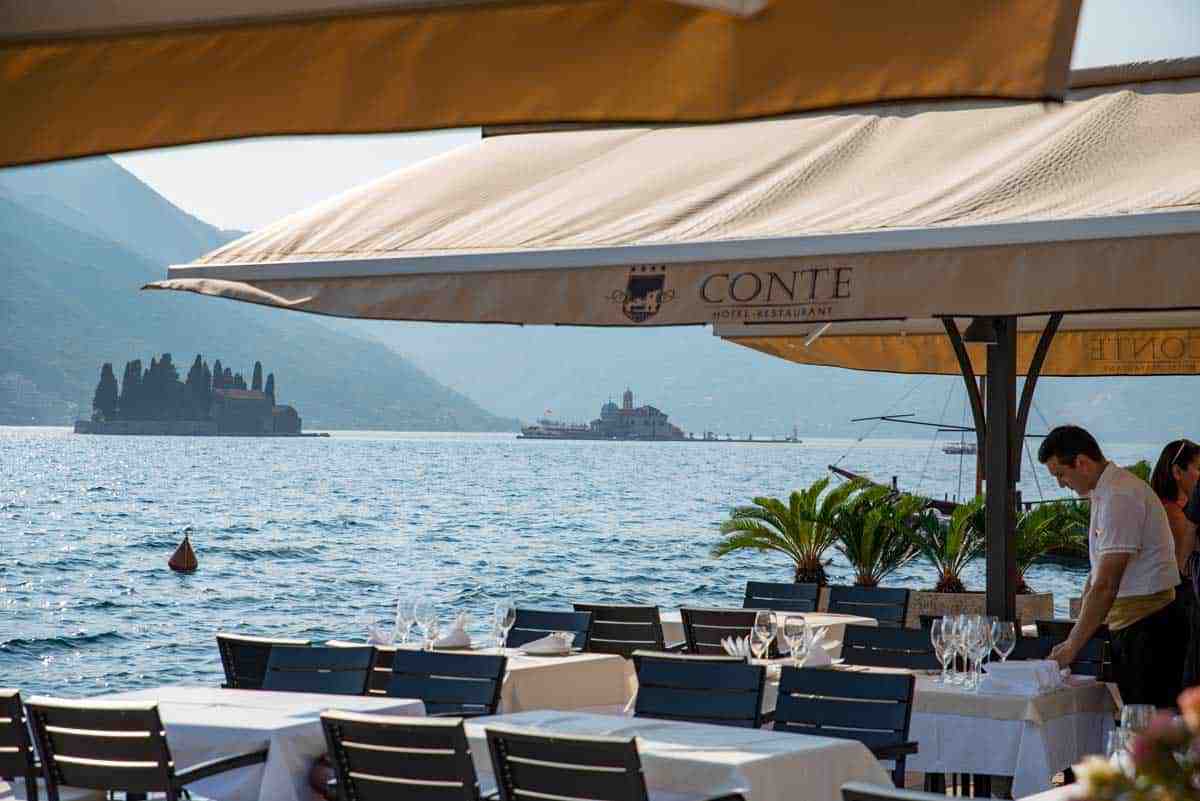
Do the short climb to the top of the church bell tower in Perast for some exceptional views of the islands and bay. There is a small fee payable at the church entrance.
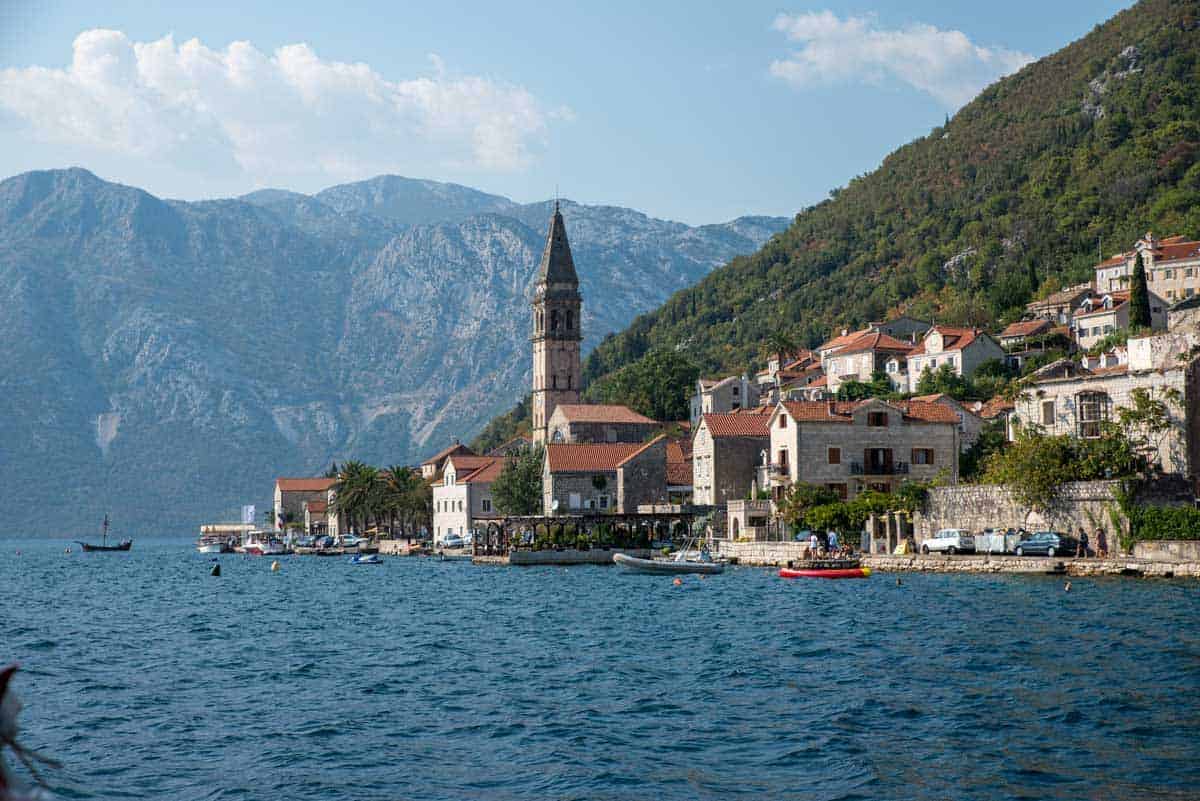
Our Lady of the Rocks
In the bay in front of Perast are two small islands with churches. One is a natural island with a monastery that is not open to the public. The other, Our Lady of the Rocks is an artificial island built up over 600 years.
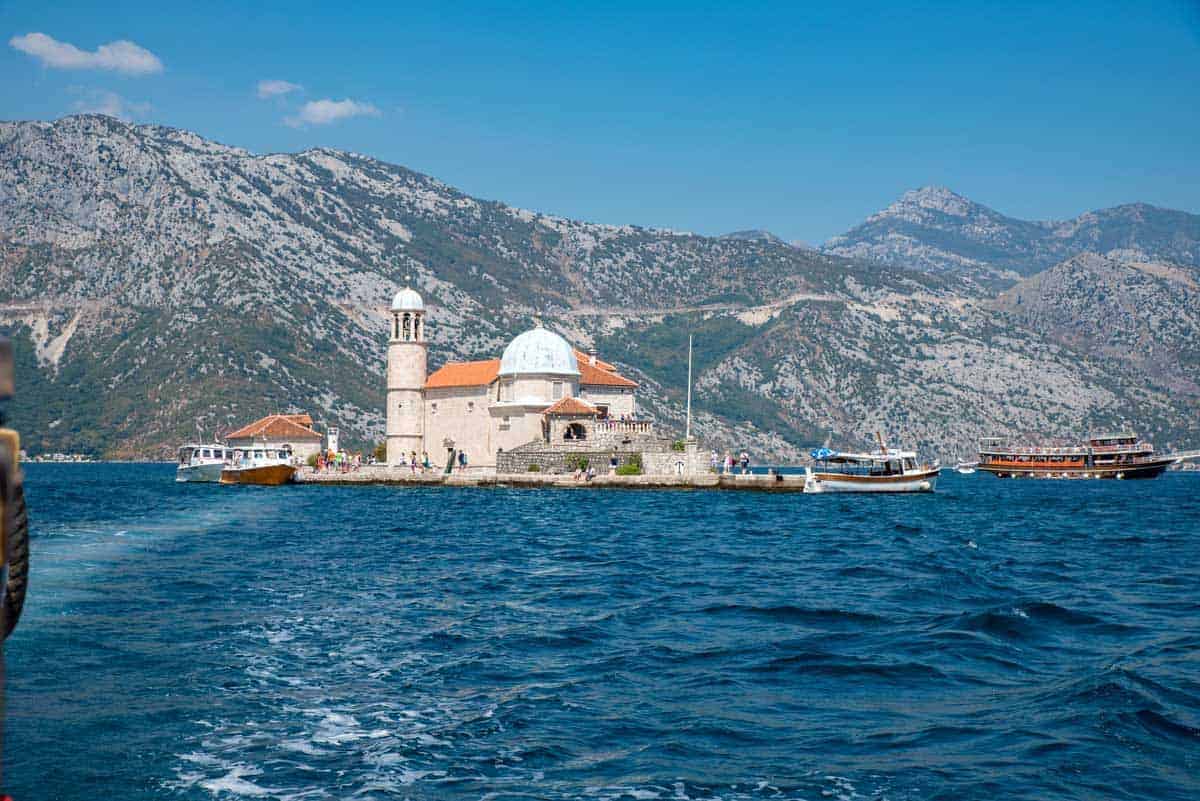
There is a Catholic church on the island, which is also a museum. Take a guided tour of the island for around €2 or explore on your own. You can reach Our Lady of the Rocks by boat directly from Kotor or Perast.
Day 5: Ostrog Monastery
Ostrog Monastery is one of Montenegro’s most famous religious sites. The burial place of Saint Basil, the Monastery is built vertically into a cliff face in the mountains between Podgorica and Niksic.
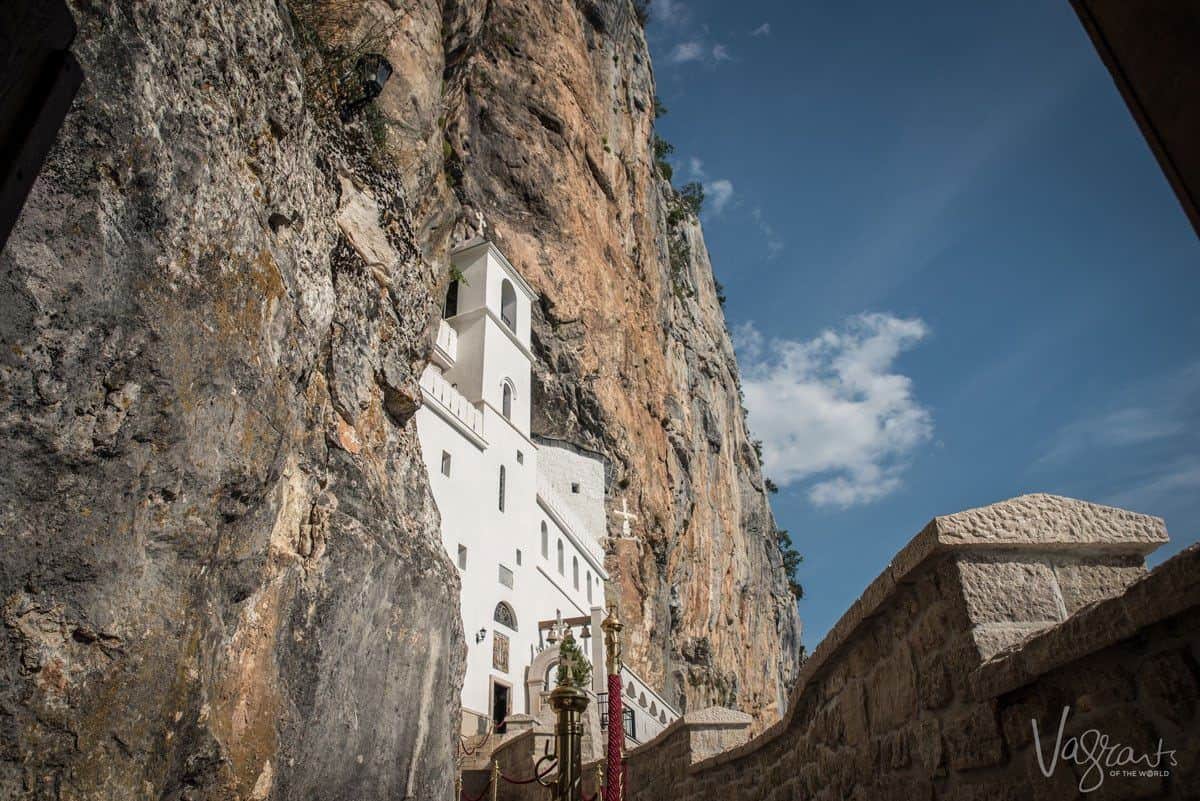
Each year, more than 100,000 pilgrims of all faiths visit Ostrog Monastery, which is one of the most unique churches in Europe . Many pilgrims will make the 3km journey from the lower monastery to the mountain top barefoot to pray in front of Saint Basil.
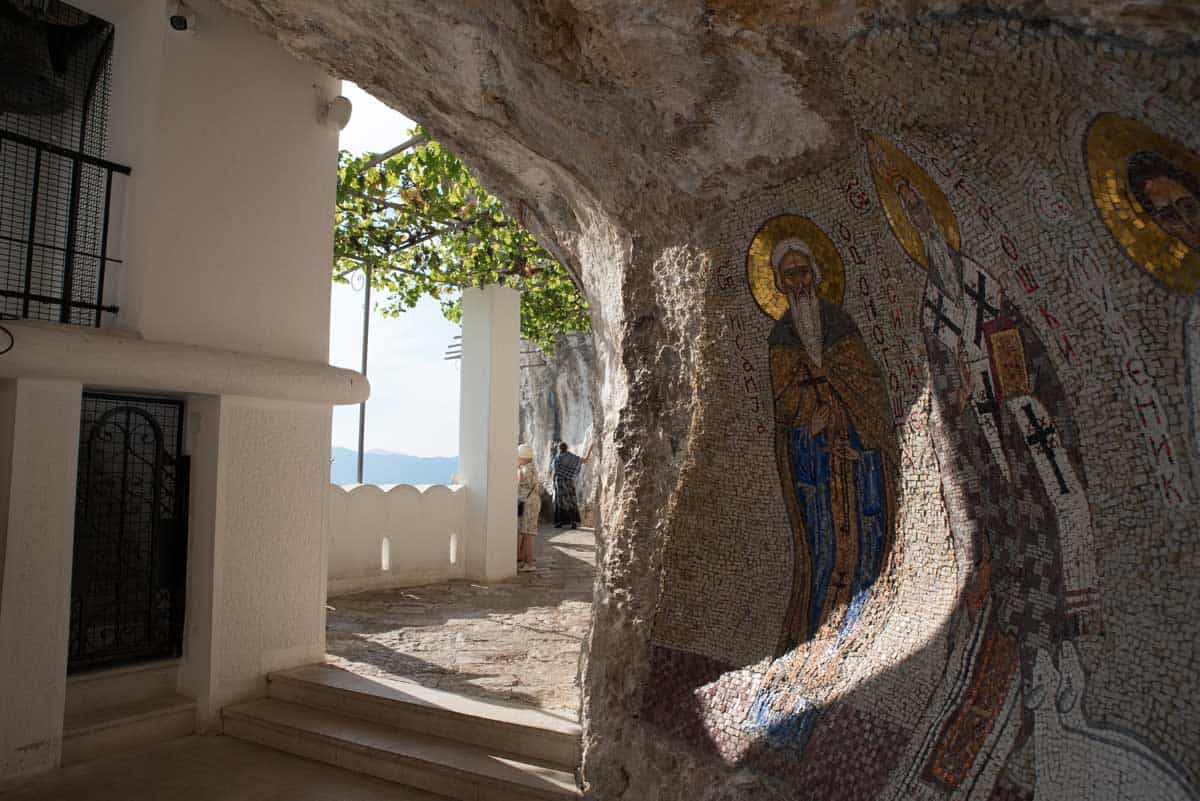
There are tour busses from Kotor to Ostrog, which take about 1.5 hours. As a sacred religious site, modest dress is expected – shoulders covered and long pants.
Plan Your Montenegro Itinerary
For such a tiny country, traveling in Montenegro packs a punch, especially on the scenic front. It’s also very budget-friendly. While five days is enough to see the highlights, a little longer will give you time to experience the laid back atmosphere and indulge in the countries many wonders.
While Montenegro is beautiful any time of year, summer and the shoulder seasons are best to visit as many places will shut down for the winter. The warmer weather also allows the opportunity to enjoy the stunning Adriatic and Bay of Kotor beaches.
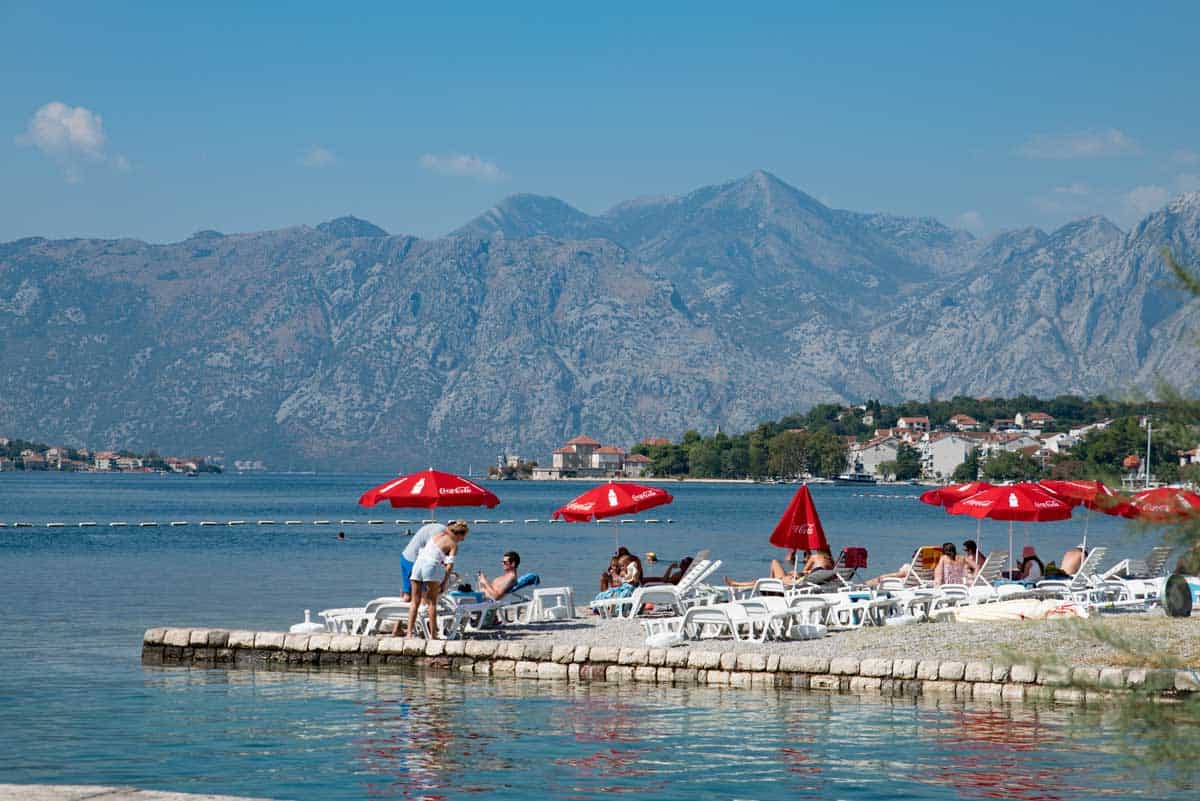
Montenegro makes a great addition to a Croatian itinerary as the border is only 45 minutes from Dubrovnik. Buses leave Dubrovnik for Montenegro a few times a day.
About the Author
Samantha Karen
Samantha is the founder of the travel bog Sam Sees World. She is a twenty-something traveller on a mission to explore the world, seek the new and unknown and document her experiences to inspire others. Her objective is to learn about the world while also searching for her place in it. Check out Sam Sees World for more information on the best things to do, see, eat, and experience while travelling and making memories along the way.

- Feb 19, 2023
Montenegro: The Ultimate Travel Guide To The Hidden Gem Of Europe
Updated: Apr 21, 2023
Located in the western Balkans of Europe, Montenegro is perched between Croatia, Albania, and Serbia. Although the country is rather small in size and population, it has incredible diversity. From the jagged mountains in the east to the sparkling Adriatic coastline in the west and the medieval towns scattered all across, there is a lot to see in this country. Add to that a lovely Mediterranean climate and you can imagine why we consider Montenegro to be Europe’s most underrated destination. The name Montenegro (Crna Gora in Montenegrin language) translates to “Black Mountain”, calling for mystery and adventure. In this article, we highlight the most important things to know before going to Montenegro, the 12 best places to visit in this magical country, and some proposed itineraries.
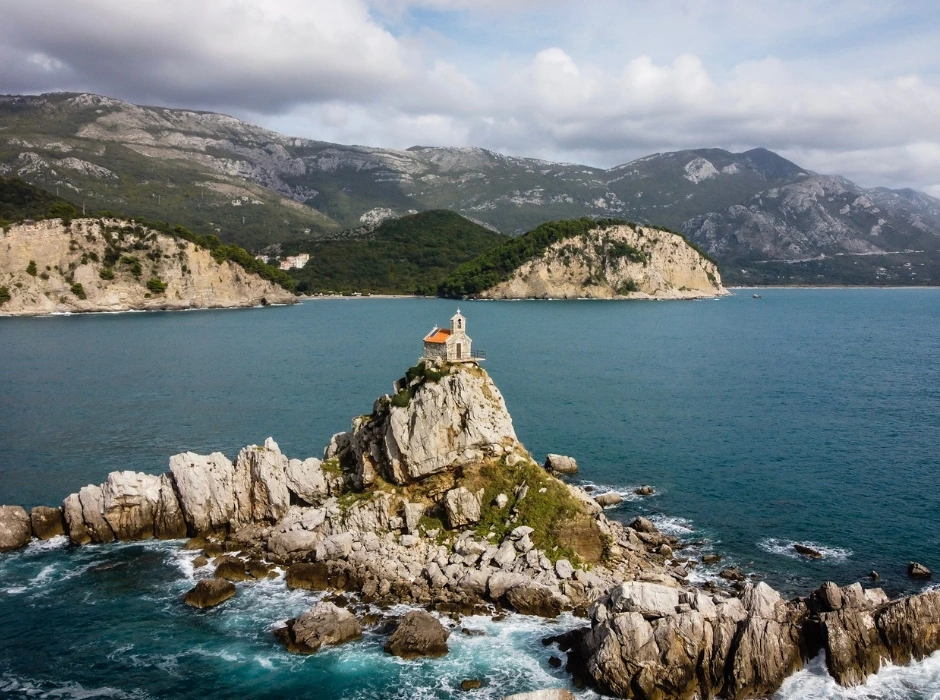
Check out our video on Montenegro to see the best things to do through our camera!
Table Of Contents
Important things to know.
Best Places To Visit in Montenegro+ map
Recommended Itineraries And Other Places To Visit
Tips to save money and other resources
Best time to travel to Montenegro
Generally, the best time to visit Montenegro is from April to October . Though the summer months are hot and more crowded. Also, allow yourself enough time in the mountains as the weather is very unpredictable there.
Cost and currency
In itself, Montenro is an affordable travel destination. However, keep in mind that the restaurants are not as cheap as other things, so if you're looking to save as much money as possible while traveling the country, consider buying food from grocery stores and cooking.
Safety in Montenegro
Montenegro is a safe country. In the big cities you do need to watch out for pickpocketers, but there is little to no crime in the mountainous regions.
Best Places To Visit In Montenegro
If you're traveling to Montenegro and want to save time searching for directions to all of the places we mention in this article, then look no further than our custom map. Simply click on a point in the map below to get directions there for yourself!
12. Stari Bar
Situated in the south of Montenegro near the Albanian border, Stari Bar or “Old Bar” is the predecessor of the port town of Bar. Founded by Illyrians around 800 BC, this ancient town was ruled by different groups over centuries, such as the Byzantines, Slavs, Venetians, and Ottomans. Today, nearly all the 240 buildings lie in ruins and the site can be visited for a small fee. Step inside and you’ll find a small museum, many churches, mosques, a Turkish bathhouse, and a fortress. After a few hours of exploring, you can take a break outside the walls, where there is a selection of bars, restaurants, and souvenir shops.

11. Sveti Stefan
Of all the towns along the Adriatic coastline, Sveti Stefan is the most unique. This small fortified island village is Montenegro’s most photographed place for a good reason. From the steep slopes of the mainland, you can admire the island villas surrounded by azure waters and connected by only a narrow causeway.

10. Lipa Cave
At number 10 we have the Lipa Cave , which can be found near Montenegro’s old capital city (Cetinje). This is one of the country’s largest and most accessible caves, which is impressive since it is millions of years old. You can only visit with a guide, but tours leave multiple times per day and last about an hour each, find the schedule here . After a short road-train ride, you’ll wander around the illuminated passageways of the cave to admire the stalagmites, stalactites, and natural pillars.

9. Lake Skadar National Park
Known as the Balkan’s largest lake, Skadar is divided across both Montenegro and Albania. The Montenegrin side is by far the larger one, with approximately 400 square kilometers being protected by a national park. Home to over 180 different bird species, this is a true birder’s paradise. Most travelers just come to enjoy the breathtaking vistas, and driving around the lake to the viewpoints is an experience in itself. The most famous view is from the Pavlova Strana viewpoint , but the best view is from the Twins winery. If you’re looking for a little more adventure, we recommend going on a boat tour or kayaking. These are best undertaken on the northwestern side of the lake, where serpentine loops stop near a charming village ( Rijeka crnojevića ). When we were visiting Lake Skadar National Park we stayed at Apartment Radovan and we would highly recommend it!
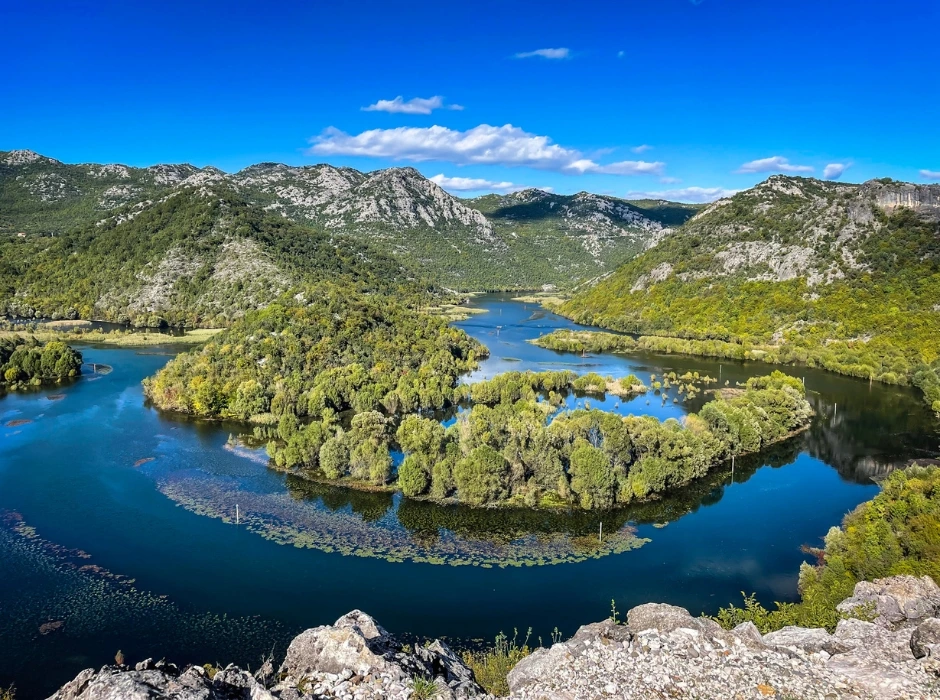
The bustling seaside city of Budva might be Montenegro’s most popular destination to visit. Cramped with high-rise hotels, buzzing beach bars, and clanging clubs, it’s also nicknamed the “Montenegrin Miami”. During the summer, the beaches are filled with sunbathers and package holidaymakers. And while most of the city looks modern and new, there is also a beautiful old town, or “ stari grad ”, at the southern tip. Get lost in its marbled streets and find hidden squares, churches, and a fortress. If you’re looking for a more peaceful beach experience, head to nearby Petrovac instead.
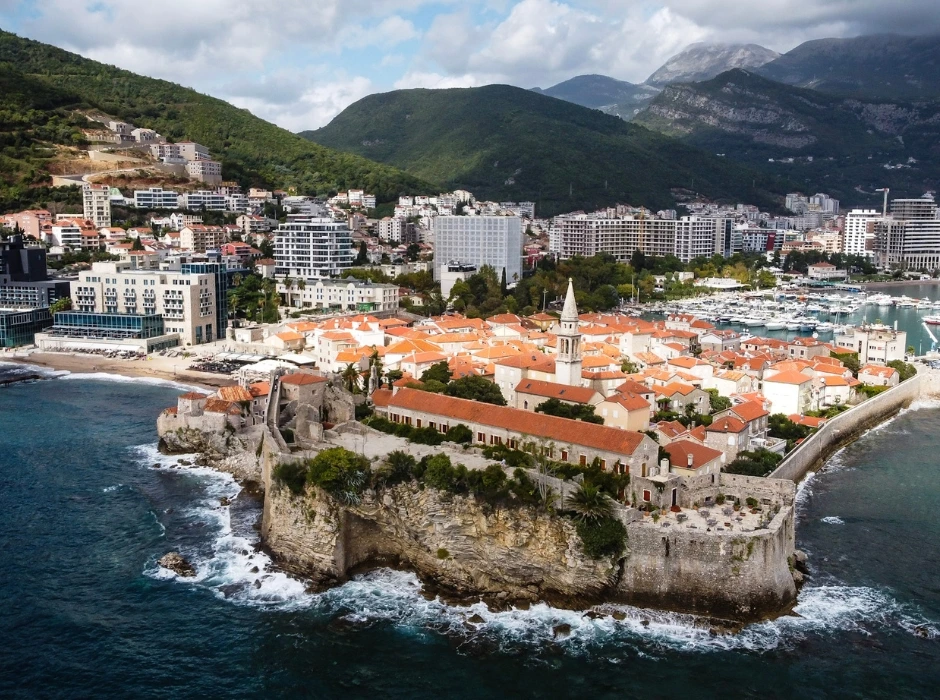
7. Tara Canyon
Located in the northeast of the country, Tara Canyon is another impressive place to visit in Montenegro. With canyon walls reaching over 1,300 meters or 4,265 feet in some places, this is Europe’s largest and deepest canyon. The canyon is best explored from the water level and rafting is the most popular activity here. But if you’re visiting in the late summer or fall like we did, the river won’t be high enough to raft. In that case, you might want to take in the views from the Tara Bridge or from one of the zip lines over the canyon.
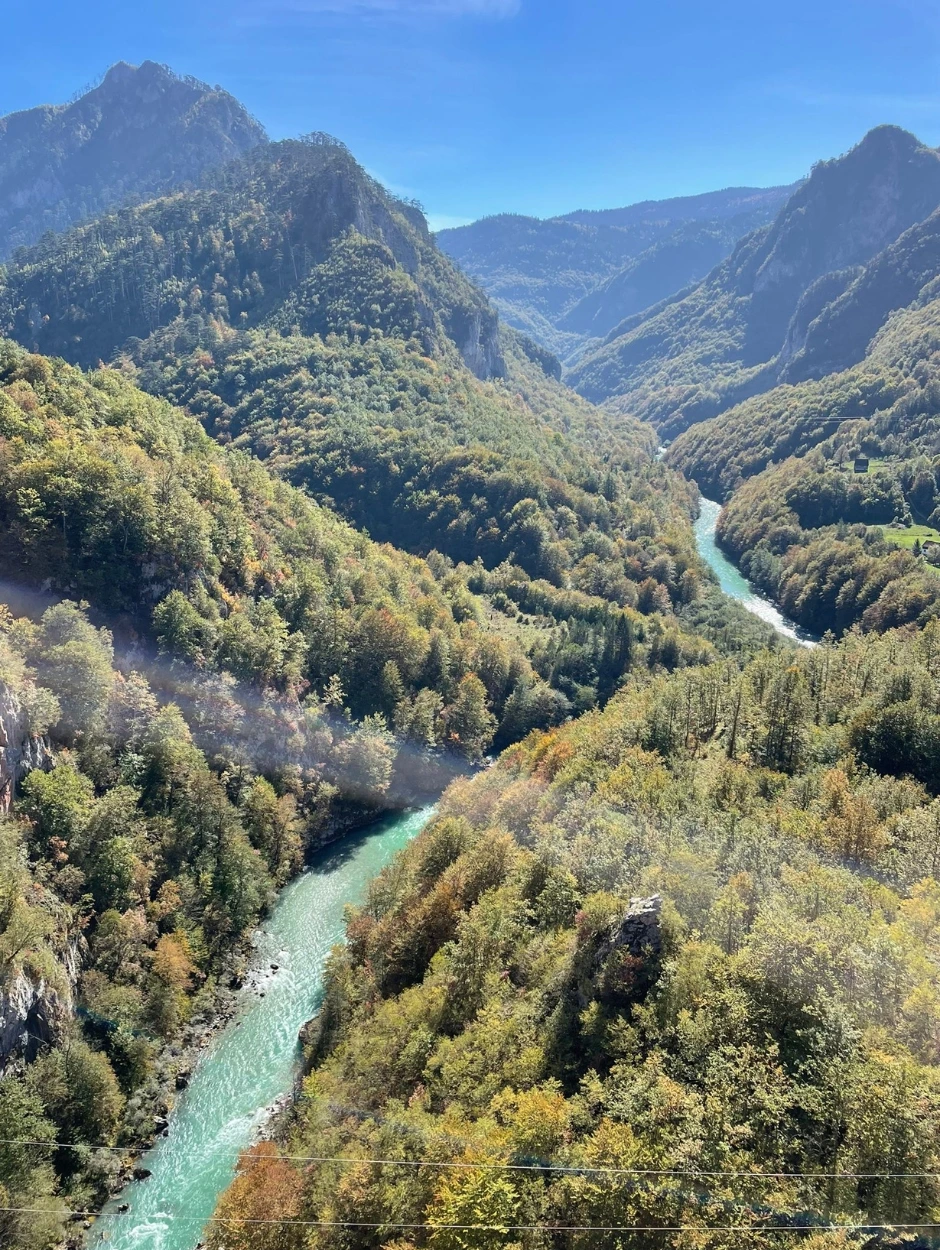
6. Durmitor National Park
At number 6 we have Durmitor National Park , which lies on the edge of Tara Canyon. Here, the landscape is made up of dramatic limestone peaks and glistening glacial lakes. From December to March Durmitor serves as a major ski resort, but during the summer and fall it attracts hikers and nature enthusiasts. The star attraction is undoubtedly the stunning Black Lake (Crno Jezero), which can easily be explored on foot from the nearby town of Žabljak. But for more adventure, hike to one of the surrounding mountain peaks. We hiked to Prutaš peak , which is more relaxed and less busy than Bobotov Kuk , Montenegro’s highest peak. We recommend staying at Apartment Usović , e had a great time here!

5. Herceg Novi
Heading back to the coast, Herceg Novi is situated near the Croatian border at the entrance to the Bay of Kotor. This beautiful town is home to a quaint Old Town , filled with tiny squares, elegant churches, and a fortress. But for the best atmosphere, head down to the waterfront. There is a large pedestrian-only promenade lined with cafés and restaurants. There are also some pebbly beaches, where you can enjoy some of the bay’s best and cleanest swimming. But be aware that Herceg Novi is extremely hilly and to get to the beaches from the highway you’ll have to go down numerous sets of steps, which makes it very challenging for older or mobility-impaired people!
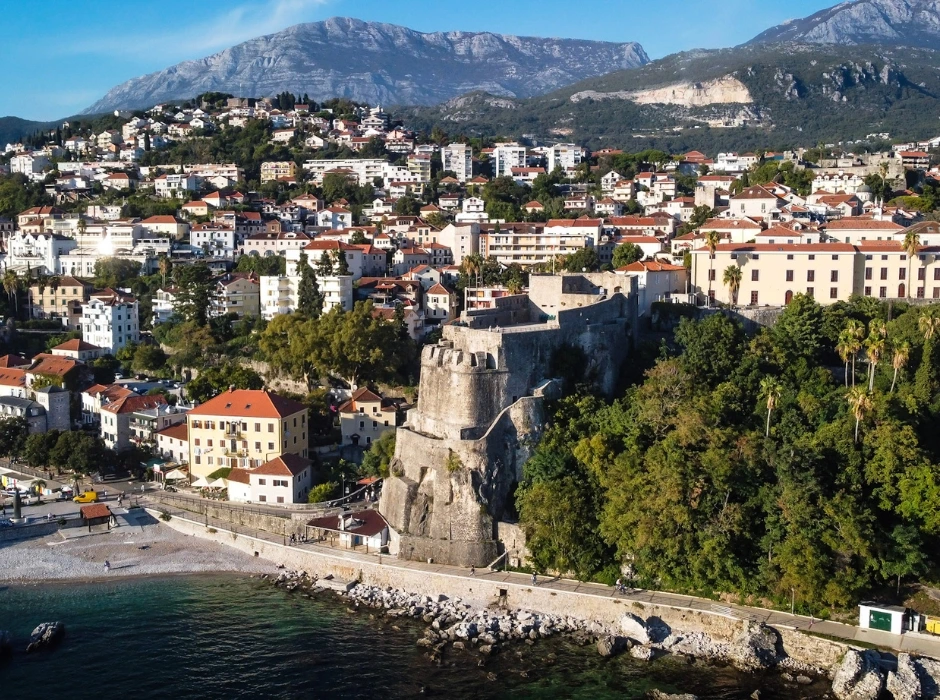
Another beautiful town in the Bay of Kotor is Perast . With similar looks to Venice, Perast has a rich and powerful past. And in spite of having only one main street, this tiny village boasts many churches and former palaces. But its most famous landmarks aren’t actually in the town itself: two picturesque islands ( St. George & Our Lady of the Rocks ) are located right off the shore, both topped with chapels. You can easily visit them by boat.

The most beautiful town in all of Montenegro in our opinion is Kotor . Located in a corner of the Bay, Kotor is also the most historic place to visit in the country. In fact, Kotor was ruled by various different groups, such as the Illyrians, Romans, Byzantines, and Venetians. These conquerors have left marks behind, such as renaissance palaces and baroque towers that can be found in the walled Old Town. But besides that, Kotor is also known for its majestic fortifications that overlook the town. Walking up the steps to the fortress is truly rewarding as it offers magnificent views of the town and bay below. We recommend doing a boat tour of the Bay and Blue Cave and a private walking tour with food and wine .

2. Lovćen National Park
From Kotor, you can easily journey to Mt Lovćen National Park . A narrow serpentine road takes you up to the mountains, boasting spectacular views that stretch the entire bay to the Adriatic Sea. And if you continue to the entrance of the park, you’ll find an imposing black mountain that gave the country its name: Mt. Lovćen itself. Here, you can find the final resting place of its greatest ruler (Njegoš) and you can actually visit the mausoleum at 1,660 meters or 5,446 feet altitude.
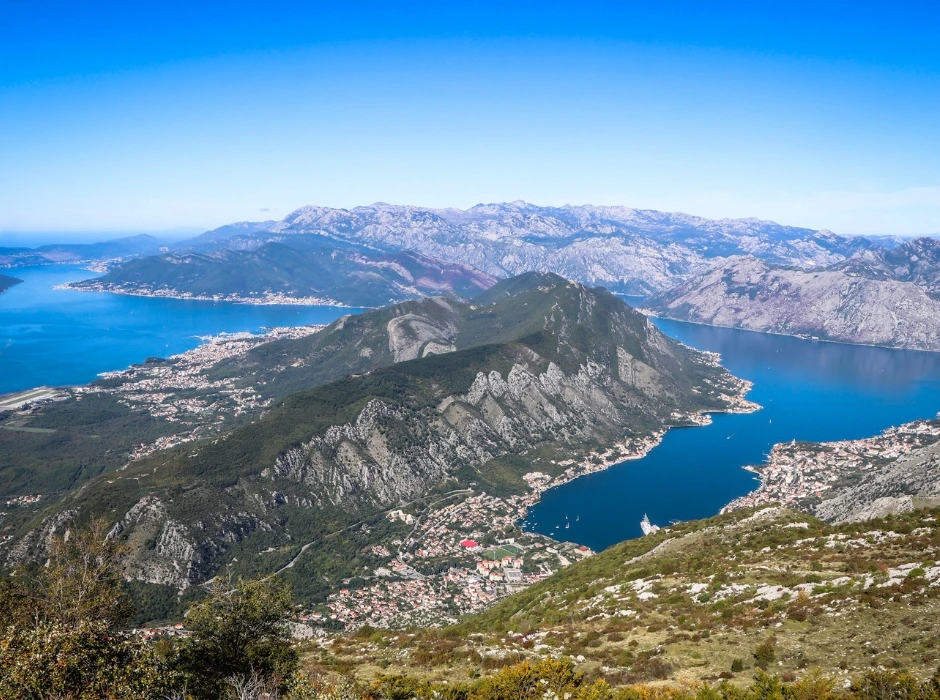
1. Prokletije National Park
Finally, we have the most beautiful national park in Montenegro. The Prokletije Mountains are a huge expanse of wilderness that forms the border with Albania and Kosovo. Being so scenic and remote, this park is one of the best-kept secrets of Europe. The best way to discover the jagged peaks, valleys, and springs, is by hiking one of the many trails. We hiked the beautiful Volušnica loop trail, which takes you on a spectacular ridgeline. But there are also shorter and easier hikes to waterfalls and a “Blue Eye”.
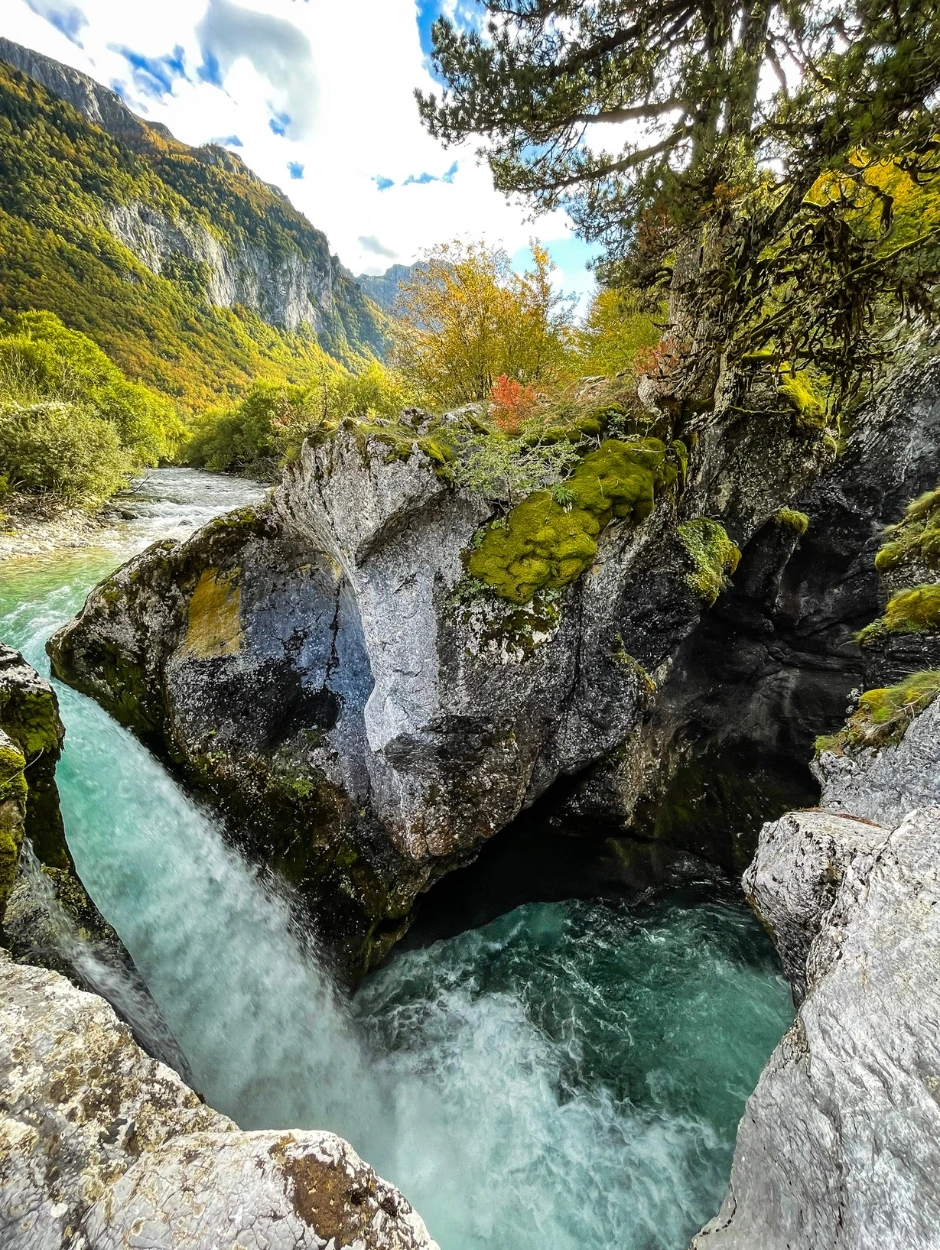
Itineraries + other places
We also included a few itinerary options here in case you want to use them to guide your own trip.
Kotor + Perast (3 days)
Durmitor National Park + Tara Canyon (2 days)
Lake Skadar National Park (1 day)
Sveti Stefan + Lipa Cave + Lovcén National Park (1 day)
10 days, add:
Prokletije Mountains National Park (3 days - go after Durmitor)
14 days, add:
Stari Bar (1 day)
Budva (1 day)
Herceg Novi (2 days)
If you have more time in Montenegro, it’s worth checking out other beautiful destinations that we didn’t mention:
Ostrog Monastery
Biogradska Gora National Park
Use These Websites To Save Money On Your Trip To Montenegro
Booking.com for places to stay
Skyscanner for cheap flights
GetYourGuide for local tours
Rentalcars.com for affordable car rentals
Free Giveaway
Did you enjoy our article on the best places to visit in Montenegro? Download our free giveaway and spark your wanderlust with our top 100 travel destinations around the world!

Other Top Montenegro resources:
If you're looking for some other suggestions and tips on Montenegro, here are some great articles that will help you:
21 BEST Things To Do In Montenegro In 2023 by Dream Big Travel Far
25 Most Beautiful Places in Montenegro to Add to Your Itinerary by Wander-Lush
Top 5 Places in Montenegro by Visit Montenegro
If you're looking for bus schedules around the country, here are a couple of good resrouces:
Busranger.com
Rome2Rio.com
Need more travel inspiration? Check out our other destinations .

Regions [ edit ]
Montenegro is divided into 21 municipalities, which can be grouped into five regions:

Cities [ edit ]

- 42.441389 19.262778 1 Podgorica — the capital, and administrative centre as well as the biggest city in Montenegro, intensively developed since independence
- 42.1 19.1 2 Bar — the major port of the country
- 42.284722 18.845278 3 Budva — this fortified old town surrounded by high-rises, resorts and new developments is the most popular tourist spot with amazing beaches and wild nightlife
- 42.393333 18.921944 4 Cetinje — the old royal capital beneath Lovćen mountain and its national park features numerous museums, monasteries and former embassies.
- 42.42539 18.771191 5 Kotor — an ancient fortified town deep down the Boka Kotorska bay, UNESCO World Heritage Site . It is a regular spot for cruiser ships
- 42.78 18.94 6 Nikšić — the second largest city in Montenegro and economically important, home to famous Montenegrin beer Nikšićko
- 42.43 18.7 7 Tivat — a small town in the Bay of Kotor, quickly emerging into a major tourist, business and transport centre due to the 2nd international airport in the country
- 43.158333 19.130278 8 Žabljak — beneath Durmitor mountain and its national park is one of the key tourist destinations for both summer and winter activities
- 41.923611 19.205556 9 Ulcinj — an ancient fortified town, once the home of pirates, surrounded by a 12-km-long sandy beach which is a kite-surfing hotspot, and naturist haven
Other destinations [ edit ]

- 42.283889 18.869167 1 Bečići — with a 2 km long fine sandy beach, it is home to many resorts and hotels
- 42.898056 19.601944 2 Biogradska Gora National Park — some of the last remaining untouched forests in Europe, and beautiful small lake where you can fish
- 42.3667 18.8667 4 Lovćen National Park — beautiful mountain with natural, cultural and historical scenery
- 42.675 19.029167 5 Mount Ostrog — the amazing monastery situated on the almost vertical cliff of Mount Ostrog , in the municipality Danilovgrad
- 42.486944 18.699167 6 Perast — beautiful small village, a UNESCO World Natural and Historical Heritage Site
- 42.441667 19.8125 7 Prokletije National Park - hiking and mountain climbing are this park's main attraction
- 42.24 19.209722 8 Skadar Lake National Park — the largest lake on the Balkans and the natural habitat of the very diverse flora and fauna
- 42.25611 18.89139 9 Sveti Stefan — picturesque town-hotel, a former fishing town on the small peninsula near Budva
Understand [ edit ]
History [ edit ].

Montenegro has been a political entity since at least the 11th century. It was founded as a state under its present name in the 15th century, continuing the tradition of the Slavic state of Duklja. It was able to maintain its independence during the reign of the Ottoman Empire in the Balkans, as its independence was recognized at the Congress of Berlin in 1878. In World War I, it fought on the side of the Allied powers. It became part the Kingdom of Serbs, Croats, and Slovenes, which became the Kingdom of Yugoslavia in 1929. Montenegro was part of various incarnations of Yugoslavia, until it regained its independence from the federation of Serbia-Montenegro after the May 2006 referendum. Montenegro was the only republic of the former Yugoslavia that supported Serbia during the wars of the 1990s.
People [ edit ]
Montenegro is home to 620,000 people (2020), and is a multicultural and multiethnic country. All citizens of Montenegro can be called Montenegrin, but this term is also used for a specific ethnicity within the country. The majority of people (~75 %) in the country are ethnic Montenegrins or Serbs, however the exact breakdown of these groups is difficult to determine due to their individual perspectives on how they see their identity. Most ethnic Montenegrins and Serbs are Serbian Orthodox Christians. In the northeast, there is a Bosniak majority, and an Albanian minority, most of whom are followers of Islam. In the town of Ulcinj, there is an Albanian majority, of varying religious persuasions. In the Kotor area, there is a Croat minority, many of whom are Roman Catholic. Regardless of their ethnicity, Montenegrin citizens are known for their kindness and hospitality.
Climate [ edit ]
Montenegro's lower areas along the coast enjoy a Mediterranean climate, having dry summers and mild, rainy winters. Central and northern regions have Continental climate, where temperature varies greatly with elevation. Podgorica, lying near sea level in the valley of the central region, is noted for having the warmest July temperatures in Montenegro, averaging 35-40°C (95-104°F).
Cetinje, in the Karst at an elevation of 670 m (2,200 ft), has a temperature 5°C (10°F) lower. January temperatures range from 8°C (46°F) from Bar on the southern coast to -3°C (27°F) in the northern region.
Montenegro's mountainous regions receive some of the highest amounts of rainfall in Europe. In the northern mountains, snow is present throughout the spring.
Terrain [ edit ]
The terrain of Montenegro ranges from high mountains through a segment of the Karst of the western Balkan Peninsula, to a narrow coastal plain that is only one to four miles wide. The coastal plain disappears completely in the north, where Mount Lovćen and other ranges plunge abruptly into the inlet of the Gulf of Kotor.
Montenegro's section of the Karst lies generally at elevations of just below 1,000 m (3,300 ft) above sea level-although some areas rise to 1,800 m (5,900 ft). The lowest segment is in the valley of the Zeta River, which flows at an elevation of 460 m (1,510 ft).
The high mountains of Montenegro include some of the most rugged terrain in Europe. They average more than 2,100 m (6,900 ft) in elevation.
Visitor information [ edit ]
- National Tourism Organisation of Montenegro
Get in [ edit ]
Most foreign tourists enter Montenegro directly by air, by road from Croatia , or occasionally by sea from Italy . Land routes from Bosnia , Serbia , Kosovo , and Albania are mainly used by tourists from those respective countries.
Entry requirements [ edit ]
Holders of travel documents containing a valid Schengen visa, a valid visa of the United States of America or a permission to stay in these countries may enter and stay, i.e. pass through the territory of Montenegro up to seven days, and not longer than the expiry of visa if the period of validity of visa is less than seven days. However, border guards are not fully aware of this information, and they might tell you that you require a visa to enter Montenegro. Stay calm and politely ask them to recheck their information. They will fill a form with your passport and car registration information which can take up to 1 hour!
As of 2010, nationals of the following states may enter, pass through the territory of and stay in Montenegro up to 90 days with a valid travel document without a visa: Andorra , Argentina , Aruba , Australia , Austria , Belgium , Bermuda , Bosnia and Herzegovina , Brazil , Brunei , Bulgaria , Canada , Chile , Costa Rica , Croatia , Cyprus , Czech Republic , Denmark , Estonia , Finland , France , Germany , Guatemala , Greece , Holy See , Honduras , Hong Kong , Hungary , Iceland , Ireland , Israel , Italy , Japan , Republic of Korea , Latvia , Liechtenstein , Lithuania , Luxembourg , Macau , Malaysia , Malta , Mexico , Monaco , Nicaragua , Netherlands , Netherlands Antilles , New Zealand , North Macedonia , Norway , Panama , Paraguay , Poland , Portugal , Romania , Russia , El Salvador , San Marino , Seychelles , Serbia , Singapore , Slovakia , Slovenia , Spain , Sweden , Switzerland , Taiwan , Turkey , United Kingdom , Uruguay , United States of America and Venezuela .
The exemption from the visa requirement also applies to the holders of valid travel documents issued by the Hong Kong Special Administrative Region of the People's Republic of China and the Macao Special Administrative Region of the People's Republic of China.
By plane [ edit ]
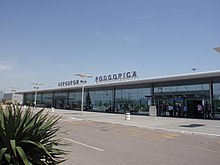
- Podgorica Airport ( TGD IATA ) – Montenegro's main international airport with many international and budget flight.
- Tivat Airport ( TIV IATA ) – This airport has regular flights from Belgrade throughout the year, and has charter flights from major European destinations during the summer.
- Dubrovnik Airport ( DBV IATA ) – Across the border half-hour drive from the coastal city of Herceg-Novi to Croatia. This airport is served by many major airlines, so it is a good option for tourists coming by plane.
- Other nearby airports are in Sarajevo ( SJJ IATA ), Pristina ( PRN IATA ) and Tirana ( TIA IATA ).
By train [ edit ]
There are one daytime and one overnight train (two in summer) from Belgrade . Trains go through Bijelo Polje, Kolašin, Podgorica and ends in Bar , Montenegro's main seaport. The railway through the Dinaric Mountains is considered as one of the most scenic railways in Europe. Travel by train is the cheapest way to get to Montenegro, but the quality of service is not very good. Trip time is 10 hr from Belgrade to Podgorica (11 hr to Bar), but expect considerable delays. The train Lovcen 433 will leave at 20:20 with the scheduled arrival to Bar, the last station, at 07:23. In December 2022 they charge €21.00 for the six berth compartment, and €31.80 the four berth one. Payable in local currency or bank card at Belgrade Center Station
By bus [ edit ]
Montenegro is well connected with neighbouring countries and ticket prices are all under €25. During the summer, more seasonal lines are being introduced.
By car [ edit ]
European routes E65, E80, E762, E763 and E851 pass through the country, connecting it to Croatia , Bosnia and Herzegovina , Serbia , Kosovo and Albania .
There are no roads in Montenegro built to motorway standard, however a Bar-Belgrade motorway should be completed by 2032.
Driving with headlights is obligatory, even during the daytime; so is the use of seat belts.
By boat [ edit ]
There is a regular ferry line from Bar to Bari in Italy. The Bar-Bari line operates throughout the year, with service several times weekly during the summer. A trip to Bari takes around 8 hours. There is also ferry service from Bari, Italy, to Dubrovnik in Croatia. From there, bus service is available to Montenegro - the Dubrovnik bus station is adjacent to the port where the ferry docks.
Get around [ edit ]
This may be the quickest way to get around Montenegro. Buses are frequent (especially during the summer), safe and are more or less on schedule. Ticket prices within Montenegro are all under €15. Examples of prices: Podgorica-Ulcinj €6, Podgorica-Cetinje €3, Cetinje-Kotor €5. Local buses usually have no airconditioning. There are normal buses and minibuses, depending on the destination.
All bus stations demand a fee for using the bus station, which is included in you ticket when you buy it at the bus station. However, it apparently is not included in online tickets, and there often erupt discussions between the station conductor and tourists since they are not let onto the platform without paying this fee. You can always pay the fee at the station when having bought your ticket online, but do so sufficiently ahead of the departure or you might miss your bus. The conductor will stand his ground. To get around the station fee, just go to any of the nearby bus stops of the route—bus drivers will happily take any additional passengers. But be sure to know the fare. You can find the bus stops on OpenStreetMap, e.g. with mobile apps like OsmAnd or Mapy.cz.
Use Busticket4Me to find out the schedules and prices within Montenegro and even to destinations outside.
Most bus stations have WiFi—sometimes you have to ask for the password.

Going by train is a great alternative to using the bus, but coverage of the country is not great.
From Podgorica there are regular train services to Bar , Bijelo Polje (and further to Belgrade) through Kolašin and Mojkovac , and Nikšić . It is the cheapest way to travel from north to south and vice versa, costing €2.80 at most within Montenegro. The quality of service is not on the high level, but decent.
Find timetables and prices on the official Montenegro Railway Website .
Furthermore, Montenegro Railways has reactivated the train route to Nikšić, providing a scenic and pretty cheap journey, without being slower than the bus, and the chance to jump of at the Ostrog Monastery .

Most roads are two-lane only, with frequent addition of a third overtaking lane, and generally are not up to European standards. Most roads are curvy and mountainous, so speeds over 80 km/h (50 mph) are rarely legal or safe.
The speed limit is usually 80 km/h on the open road and 50 km/h (31 mph) in built-up areas.
The use of safety belts and headlights during the day is compulsory, and the use of cellphones while driving is prohibited. Signposts used in Montenegro are almost identical to those used in EU countries.
Local drivers tend to drive fast, and to get involved into dangerous manoeuvres. Traffic jams are common during the peak of the summer season. Pedestrians are notorious for jaywalking in every Montenegrin city.
Drivers tend to be extremely vocal, so don't take it personally if a driver yells at you.
You can rent a car in Montenegro from €11 in Tivat Airport, from €14 in Podgorica Airport, and travel around cities and across the country.
Specific roads [ edit ]
Roads from Podgorica to Bar and to Niksic are fairly good and easy to drive on.
The roads from Podgorica through Cetinje to Budva and to Petrovac are both in good condition, but are curvy mountainous roads which rarely permit speeds over 70 km/h.
The road from Podgorica north to Kolasin, and then on to Zabljak or Serbia, is considered dangerous during the winter, especially the part through the Moraca canyon. It is recommended that you take the bus to the north during the cold or rainy days, as bus drivers are experienced and know the road.
The old road from Cetinje to Kotor is mostly a narrow one-lane road offering stunning views of Kotor from above, but exercise extreme caution when passing on-coming traffic, over-taking and around corners.
By rental car [ edit ]
Rent-a-car businesses are numerous and prices start from €20 per day for Toyota Yaris.
By thumb [ edit ]
Hitchhiking works pretty well in Montenegro, although the general warnings apply . Even though locals also generally take people, it is more likely to get picked up by other tourists, especially along the coast and during high season. Also, see Hitchwiki for more details.
By helicopter [ edit ]
A unique opportunity to discover the wild beauty of Montenegro is also by helicopter. Transportation could be organised from Dubrovnik, Kotor, Budva, Podgorica. Well-established operators are specialized in scenic flights, charters and commercial transfers across the region.
On foot and navigation [ edit ]
Montenegro is a popular hiking destination with many picturesque trails and summits. Make sure to have good (offline) maps and GPS with you. For reliable maps, GPS navigation , comprehensive trails and map information, consult OpenStreetMap , which is also used by this travel guide and by many mobile Apps like OsmAnd or Mapy.cz . Or just download the according GPX or KML files for such trails on OpenStreetMap through Waymarked Trails . (Note, you just need to change the OpenStreetMap relation ID to download the GPX or KML files through the same link.)
Talk [ edit ]
The official language is Montenegrin. It is essentially the same language as Serbian , Croatian and Bosnian . In some municipalities with an Albanian majority (Ulcinj) or large minority (Plav, Gusinje) and the Malesia district in Podgorica municipality, Albanian is commonly spoken. Slovenian and Macedonian are also understood. Even though their languages are virtually identical, people still distinguish between the Montenegrin, Serb, Croat and Bosniak ethnicities, Montenegrins forming a slight majority. Montenegrin is found written in both Cyrillic and Latin forms. Latin text is much more common in Montenegro than in neighboring Serbia and the Serbian portion of Bosnia.
In Podgorica and the coastal area, many people can speak some English. People sometimes have a working knowledge of German , as there is a sizeable diaspora community in both Germany and Austria. Italian also comes in very handy, especially along the coast. Russian , which also belongs to the same family of Slavic languages, is spoken by many older people as it was a compulsory second language in Yugoslavia, though it has largely been supplanted by English among the younger generation. Russian speakers will, however, find themselves catered for by the tourist industry along the coast.
See [ edit ]
While Montenegro may be a small country, it has so much diverse history and nature to see. There are stunning mountainous landscapes, dramatic coastlines, historic monuments and truly beautiful walled towns. The Montenegro coast is just as gorgeous as that of its better known neighbour, Croatia , and it is for good reason that its main tourist destinations get crowded in summer. Nevertheless, if you can't visit at another time, don't let their popularity hold you back. Even the largest of cruise ship crowds will not stop you from enjoying this country's magnificent Riviera and Medieval coast towns, especially if you're willing to get up early and do your sightseeing ahead of the others.
Of the country's many churches and monasteries, the Serbian Orthodox Ostrog Monastery deserves special attention. It's spectacularly located against a practically vertical background, some 10 km from Danilovgrad . Founded in the 17th century, it's one of the most visited pilgrimage destinations on the Balkans and boasts a magnificent view over the Bjelopavlići plain .
The Riviera [ edit ]
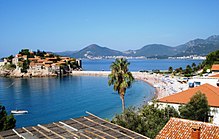
The Bay of Kotor , is probably one of the prettiest bays in the world. On its deepest point lies the equally stunning town of Kotor , a beautifully preserved fortified, Medieval town with a vibrant history. Wandering through its labyrinth of narrow and cobblestoned streets, you'll come across lively piazzas, many ancient churches and lots of pleasant bars and restaurants. Don't miss the 12th-century St. Tryphon Cathedral , the Church of St. Luke and the Orthodox St Nicholas Church . Kotor is locked between the blue sea on one side, and a dramatically steep cliff on the other. It's a heavy walk uphill, but climbing the 1500 steps will allow you to see the old fortifications on the top and provide some amazing views over the bay.
Budva is the country's most popular tourist destination, and boasts some great beaches and a lovely, walled town centre. The old town centre is picturesquely located on a rather small peninsula, and its narrow, winding lanes hide a multitude of historic buildings, churches and small squares. Among the most interesting monuments here are the 7th-century St. John's Church , the 8th-century Santa Marija of Punta and the 12th-century Church of St. Sava . The medieval town fortress is referred to as Citadela and right next to it is the colourful Church of the Holy Trinity , built in 1804. Budva's Riviera is over 30 km long, and has been called "The Riviera of Sandy Beaches". It is dotted with lovely hamlets and a wealth of historic monuments. A strip of hotels and restaurants separates it from the impressive mountain massifs of Lovcen. From Budva, it's an easy bus ride to the unique Sveti Stefan resort.
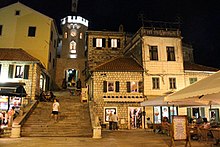
The small but gorgeous town of Perast saw some of its best architecture arise in the 17th and 18th century, when it belonged to the Republic of Venice . That typically Venetian, baroque architecture has been wonderfully preserved, with highlights including the Bujovic, Zmajevic, Badovic and Smekja Palaces which were once owned by wealthy maritime captains. All the way in the south, Ulcinj is one of the Adriatic's oldest towns, with a delightful centre and lots of natural beauty around. It also makes a good base from where to explore the old centre of nearby Bar , Lake Skadar or even a cross border visit to Albania . Although less spectacular than nearby Kotor, Herceg Novi (roughly translated as New Castle) is another charming Montenegrin town with a beautiful old centre and a good number of interesting churches, squares and fortresses.
Natural attractions [ edit ]
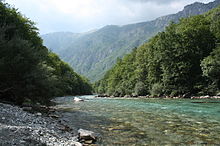
Although Montenegro's magnificent seaside scenery is best known among travellers, its mountainous inland has some grand panoramic views to offer, too. The country shares the large freshwater Lake Skadar with neighbouring Albania. It has National Park status and offers great opportunities for hiking, bird watching and wildlife spotting. Of the many friendly fishermen's towns around it, Virpazar is the most convenient one for travellers. A real must-see is the splendid Tara River Canyon , with its steep banks rising up to 1300 metres above the River Tara waters. It's the second longest canyon in the world and a UNESCO World Heritage Site . The canyon is in Durmitor National Park , which is a World Heritage Site of its own and boasts a rich flora and fauna as well as snow-covered high peaks, several canyons and many glacier lakes. The most visited one is Black Lake , at walking distance of the town of Žabljak , which serves as a traveller's hub for mountain and winter tourism.
Do [ edit ]
Festivals [ edit ].
Montenegro has a lot of local festivals that are worth going to and may range from typical music concerts to local festivities involving free food and drinks. Usually wine and seafood.
- Bokeška Noć (3rd week of August) - Celebrations under masks by the iconic fortifications of Kotor where each year a hateful figure is burned, and celebrations out in the open continues till early morning.
- Sea Dance Festival (end of July) - infamous Exit festival has found a new home for summer season and the biggest music happening in SE Europe is hosted on Jaz beach in Budva .
- Days of Wine and Fish in Virpazar - worth experiencing. Gathering of wine and fish lovers in a scenic local village on the Skadar Lake. Very crowded, and smokey from fish frying.
- Petrovačka noć ( Petrovac ) - celebrating the local traditions it is great time to visit the city and enjoy the crowd, food and music.
- Spring Break - typical music festival with plenty of DJs on Kamenovo beach
- Blueberry Days - in Plav in northern Montenegro, this festival is attributed to blueberries which are famous is important gathering of Montenegrin diaspora and its relatives as well as many tourists.
- Pasticada Fest
- Sunčane Skale
- Dani Mimoze
- Southern Soul Festival
Outdoor activities [ edit ]
- Rafting . Rafting on archaic wooden or rubber boats down the 100-km path of largest canyon in Europe is one-of-a-kind experience. ( updated Jan 2017 )
- Hiking/Trekking/Biking . Considering the size and very late development of infrastructure Montenegro has relied on various pathways interconnecting villages, roads, churches and mountains which is nowadays maintained and ideal for all outdoor activities. Maps of routs may be obtained by tourist offices located in towns.
- Cruise and dive in the Bay of Kotor . Iconic scenery of Boka Kotorska may be only appreciated fully from the sea-level and various small islands with tremendous history can only be reached that way. Diving may be interesting on several spots along Lustica.
- Paragliding over Budva Riviera . Scenery of Boka Bay may be only appreciated fully from the sea-level and various small islands with tremendous history can only be reached that way. Diving may be interesting on several spots along Lustica.
- Kite-surfing on the Ada Bojana . Experience winds on southern-most tip of Montenegros 12-km long sandy beach near Ulcinj
- (summer) Skiing/Snowboarding . While during winter downhill skiing and snowboarding is usual activities within resorts in Žabljak and Kolašin throughout summer on many mountains specific regions remain under snow and are ideal for wild summer skiing or snowboarding experience
Buy [ edit ]
Money [ edit ].
Montenegro uses the euro , like several other European countries . One euro is divided into 100 cents. The official symbol for the euro is €, and its ISO code is EUR. There is no official symbol for the cent.
All banknotes and coins of this common currency are legal tender within all the countries, except that low-denomination coins (one and two cent) are phased out in some of them. The banknotes look the same across countries, while coins have a standard common design on the reverse, expressing the value, and a national country-specific design on the obverse. The obverse is also used for different designs of commemorative coins. The design of the obverse does not affect the coin's acceptability.
ATMs [ edit ]
Hundreds of ATMs are available in major cities. The ATMs accept most international Visa and MasterCard credit and debit cards.
If you are from the Balkans, Central or Eastern Europe, look for an ATM of your bank. It is quite possible that the bank operates in Montenegro and that there will be no fees.
Generally, ATMs will add an extra fee to your withdrawal, which is invoiced as one amount together with the amount dispensed. In the following the fees as of 2022:
- Erste Bank: €0
- ckbbanka: €5
Credit cards [ edit ]
Although they are accepted in supermarkets, hotels, restaurants and many shops, always keep some cash with you for open-air markets, souvenir stalls, small bakeries, museums and public transport.
Exchange offices [ edit ]
Not very common, since nearly all tourists bring euros with them. In case you happen to arrive in Montenegro without any euros in cash, use an ATM (recommended) or find a bank to change US dollars, Swiss francs or British pounds.
Shopping [ edit ]
Business hours [ edit ].
Regular businesses and governmental agencies work from 08:00-09:00 to 16:00-17:00, while convenience stores, pharmacies and shops usually work until 20:00-21:00. Bars, pubs and restaurants usually work until midnight or 01:00 while clubs may run until 03:00 or 04:00.
Local specialities [ edit ]
- Traditional clothes
City stores [ edit ]

- City centre and Bulevar Džordža Vašingtona in Podgorica
- Porto Montenegro
- many shops in Old Towns of Kotor and Budva
Shopping malls [ edit ]
- Delta City in Podgorica
- TQ Centre in Budva
- Kamelija in Kotor
Convenience shops & supermarkets [ edit ]
- Voli markets, HD Laković, Maxi Markets and Roda are main retail supermarket chains and are found in almost all cities. There are also other convenience stores that stuff various goods. The prices of basic local food (baked goods, dairy products, fresh fruit and vegetables) are on the level of Bosnia and Serbia , i.e. generally cheaper than EU countries.
Eat [ edit ]

Apart from the hotels located in towns and summer resorts offering half-board and full-board accommodation, and those along the roads and communication lines such as restaurants, pizza places, taverns, fast food restaurants and cafes, there is a choice of national restaurants offering traditional Montenegrin cuisine.
In addition to the standard European and Mediterranean cuisine, Montenegro offers a variety of healthy food products and local specialities.
Cold hors-d'oeuvres include the famous njeguški pršut (smoked ham) and njeguški cheese , pljevaljski cheese , mushrooms, donuts and dried bleak. The main courses specific for the northern mountainous region are boiled lamb, lamb cooked in milk, cicvara in fresh milk cream (buttered corn porridge), boiled potatoes with cheese and fresh cream. A selection of traditional recipes of the central and coastal parts will include the kastradina (dried mutton), smoked and fresh carp (from Skadar lake) and a variety of fresh sea fish and seafood dishes. Donuts served with honey and dried figs are traditional desserts in these parts of Montenegro.
Products of animal origin are supervised and approved by veterinary and health authorities according to EU standards. The restaurant scene in Montenegro is rapidly evolving and has become increasingly international and continues to attract a new diverse variety of restaurants on the coast and in Podgorica.
Drink [ edit ]
Wine [ edit ].
Montenegrin vineyards and the production of quality wine is part of the tradition of southern and coastal wine makers.
The best known Montenegrin wines are the premium whites: "Krstač", "Cabernet", "Chardonnay" and reds: "Vranac", "Pro Corde". All of them are produced by the famous company "Plantaže", but there's also some home-made wines of high quality, like Crmničko wine.
1L bottle of "Vranac" red wine will cost you from €8 to €15 in the bar or restaurant and it is well worth it! Also, you can buy a bottle of "Plantaze"'s wine for about €2-4 in supermarkets.
Also, Montenegro has boutique wineries as Knezevic from Golubovci and famous brand " Monte Grande " became signature wine of the country.
Brandy [ edit ]
The continental region and north are more oriented towards the production of aromatic fruit flavoured brandy (plum brandy - šljivovica, apple brandy - jabukovača). Grape brandy "Montenegrin loza", "Prvijenac", "Kruna" or home made grape brandy (lozova rakija, lozovača) is a must-try, and a good choice to "warm up" before going out in the evening.
Beer [ edit ]
"Nikšićko" beer is the best known beer in Montenegro, and most common alcoholic beverage, which cost from €0.50 to €2.50. It is produced as a draught beer, or bottled, in both "Nik Gold" and lighter "Nik Cool" variant. The dark variant, "Nik tamno", is praised among beer lovers.
Other [ edit ]
Other alcoholic drinks can cost anywhere between €1 and €10.
Sleep [ edit ]
Stay safe [ edit ].

Montenegro is generally a safe country. There is, like all countries in the world, criminal activities, but police forces are generally fast in their duties. The number is 122, as well as the international distress call 112. When travelling in the areas bordering Kosovo, it is recommended you keep to the main roads. Unexploded landmines may remain along the Kosovo border. You should also avoid areas where there is military activity.
In the resort towns such as Kotor, Budva, Sveti Stefan and Herceg Novi, beggars and pickpockets are not uncommon. As in many other European locations, beggars are part of organized crime groups. Do not give them money. Doing so may also make you a target for more aggressive approaches. Always carry your bags in the safest way, slung around your shoulder with the pouch in front (with your money carried under your clothing) where you can keep your arm or hand across it.
Sea urchins are small, globular, spiny sea creatures that cover much of the sea floor off the coast of Montenegro. This isn't a bad thing being as they only gather in super clear water. It's a good idea to wear sea socks or something to cover your feet while walking through the water. Also, if you snorkel, be careful and ensure you don't brush up against the ones on the sides of the rocks.
Montenegrins are not safe drivers. You will often feel as though you are competing for road space with aggressive drivers who have little regard for your or their own safety. Many people also break the speed limits. Some roads are really narrow. Consequently, the country has one of the highest rates of traffic accident fatalities in Europe.
There are two species of viper snakes in Montenegro, sarka and poskok . Both are small but very venomous, so be careful when you hike around, watch your steps and remember that they never attack people if they are not disturbed.
Stay healthy [ edit ]
Tap water is generally drinkable, though in some small towns it may be better to avoid it.
Respect [ edit ]
Short pants are usually not permitted inside public institutions (hospitals, etc.) Wear modest clothing when visiting monasteries and churches.
At beaches, taking off the bottom piece of a swimsuit will likely create a stir and is generally reserved for designated nude beaches.
When toasting and clinking glasses, look the opposite person in the eyes or else it may be taken as a sign of disrespect.
Being visibly drunk is a sign of bad taste and character in Montenegro: you may be invited to drink gallons but you're expected to be able to hold it. People also usually prefer to sip their liquor instead of emptying it "bottoms-up" style. Be careful: rakija , a plum spirit, is probably going to be stronger than you expect (usually about 53% alcohol content) and will make you drunk fast!
Connect [ edit ]
Internet [ edit ].
Wi-Fi points in bars and cafeterias are abundant, and most hotels and apartments offer Wi-Fi. Also, many banks have open Wi-Fi spots. Some central tourist areas are also covered by Wi-Fi.
Be conscious of security when using an unsecured Wi-Fi network.
Mobile [ edit ]
You can buy mobile phone sim cards at the airport, bus station, or malls for €10-20 by showing your ID or a passport.
There are three major network operators on Montenegro: telenor / One, m:tel, and T-Mobile. They all have the same packages as of September 2023: €10 for 7 days with 500GB, €15 for 15 days with 500GB, or €20 for 30 days with 1TB. (That is not a typo. They really offer one terabyte of data.)
(Bonus tip for Podgorica: If you are running late but desperately need a sim card, go to the mall "Delta City" west of the city center. All three providers are present there and it is open until 22:00.)
Many mobile providers in the Balkans provide free roaming across Balkan countries. So, in case you are planning to cross the border, ask on how to use the local SIM card in other Balkan countries. For instance, a One.al SIM card from Albania works flawlessly in North Macedonia and Kosovo with a regular Albanian package.
- Has custom banner
- Has mapframe
- Maps with non-default alignment
- Maps with non-default size
- Has map markers
- Do listing with no coordinates
- Outline countries
- Outline articles
- Country articles
- Has Geo parameter
- All destination articles
- Pages with maps
Navigation menu
- Guide to Montenegro
- Guide to Costa Rica
- Guide to Anguilla
- Guide to Dubai
- Guide to Heliskiing
- Guide to Baden Baden
- Guide to New York
- Guide to London
- Guide to Tuscany
- Guide to Monaco
- Guide to Japan
- Guide to Rwanda
- Guide to Abu Dhabi
- Guide to Vietnam
- Guide to Ibiza
- Guide to Oman
- Guide to Saudi Arabia
- Guide to Albania
- Guide to St. Barths
- Guide to Maldives
- TRAVEL GUIDES
- WAWW GUIDES
- Global cuisine
- Collaborate with us
- Testimonials
- ROBB REPORT

World Travel Guide WAWW | What A Wonderful World
10 reasons to visit montenegro.
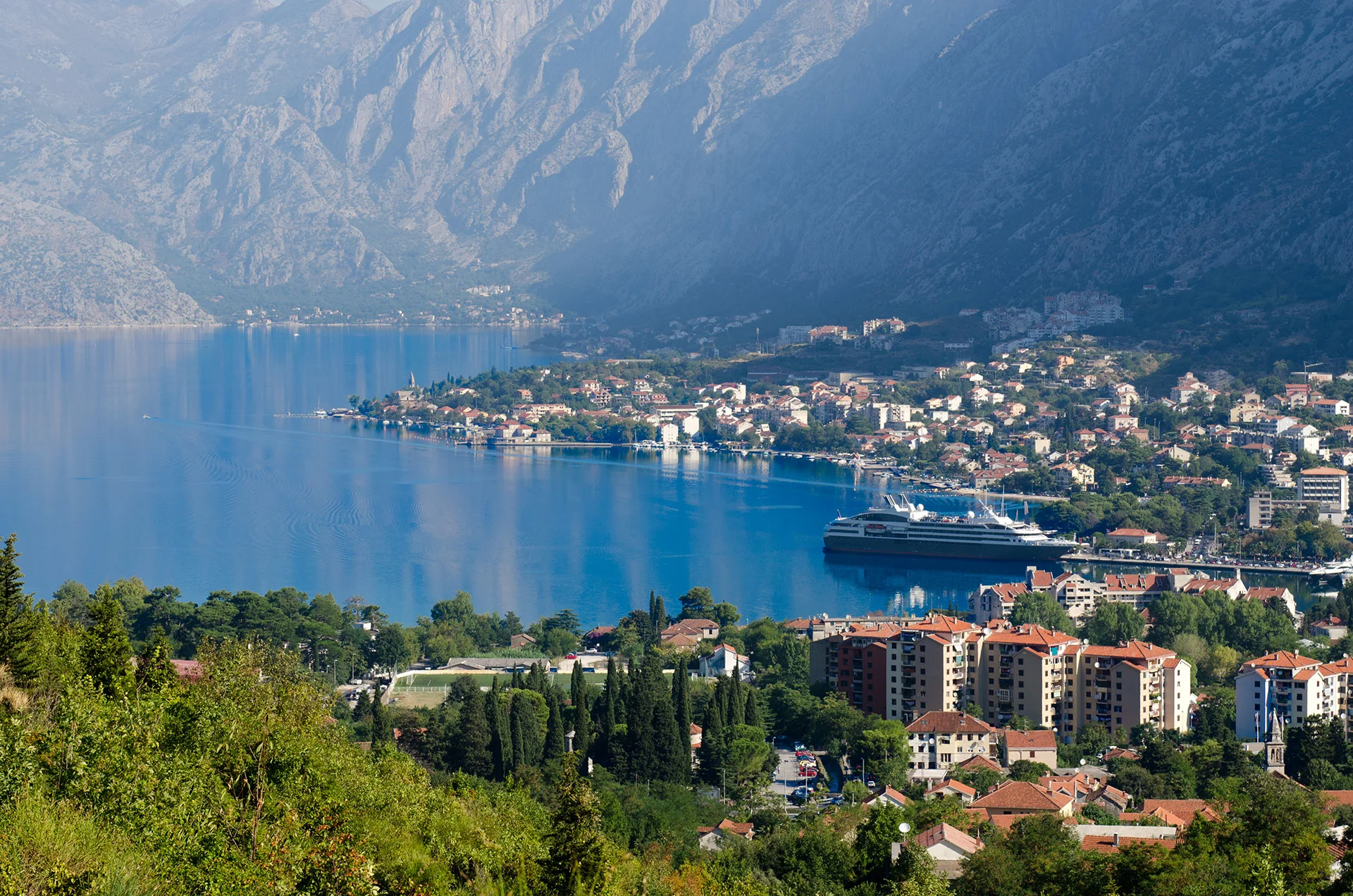
FROM FOOD TO CULTURE, THERE’RE PLENTY OF REASONS TO SEE MONTENEGRO
M ontenegro has plenty to offer families, couples and solo travellers. We’ve picked 10 great reasons why you should come to the small but majestic Balkan country, Montenegro, otherwise known as the “Land of the Black Mountains.”
1. Skadar Lake
Visit the largest lake in Europe. This gorgeous lake is home to a myriad of wildlife and over 270 different bird species including the endangered and rarely seen curly pelican. The lake is exquisite with its overgrown shores edge, secluded coves and tiny islands, with little monasteries and churches each with their own story to tell.
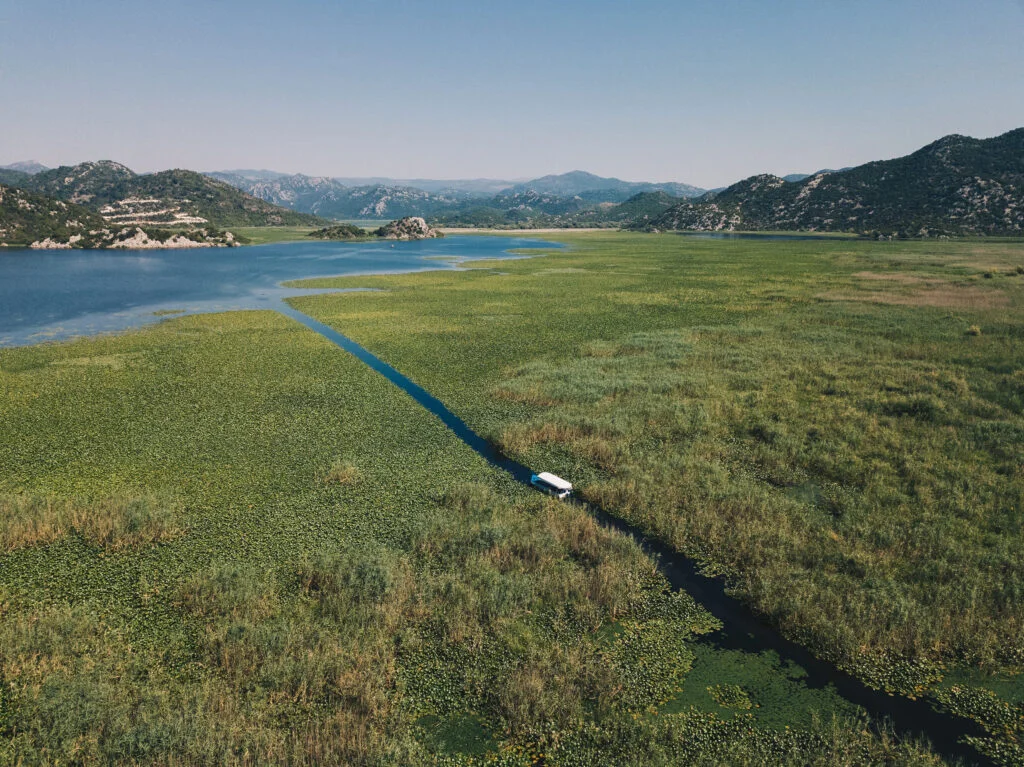
Montenegro makes for the perfect base for summer boating in the Adriatic. Most of the Mediterranean is drastically overcrowded and the lack of privacy is definitely not ideal when one is trying to enjoy their summer vacation. Montenegro is a wonderful alternative to the likes of Italy or Greece, both of which are only a couple of hours away. Not to mention, Montenegro is far cheaper than most of Europe.
3. Eco-tourism
The pristine, unadulterated splendour of this country is like no other. Once you step into Montenegro,you’ll see how the country has been captured in a bubble protecting it from the complete urbanisation that the rest of Europe has. It has five National Parks, several mountain ranges, the Boka Bay fjord and abundant hidden coves. Considering that 54 per cent of the total land area has been declared forest land, there is plenty to discover. There are a number of rare and endangered species roaming about the mountains and lakes, like the foxes, wolves, brown bears and the curly pelican.
Nearly 60 per cent of the country is more than 1000 metres above sea level, with the tallest peak – Bobotov Kuk in the Durmitor Mountains – at 2,522 meters (8274.3 feet), making Montenegro a hiker’s paradise or an implausible challenge for the adventurous mountain biker.
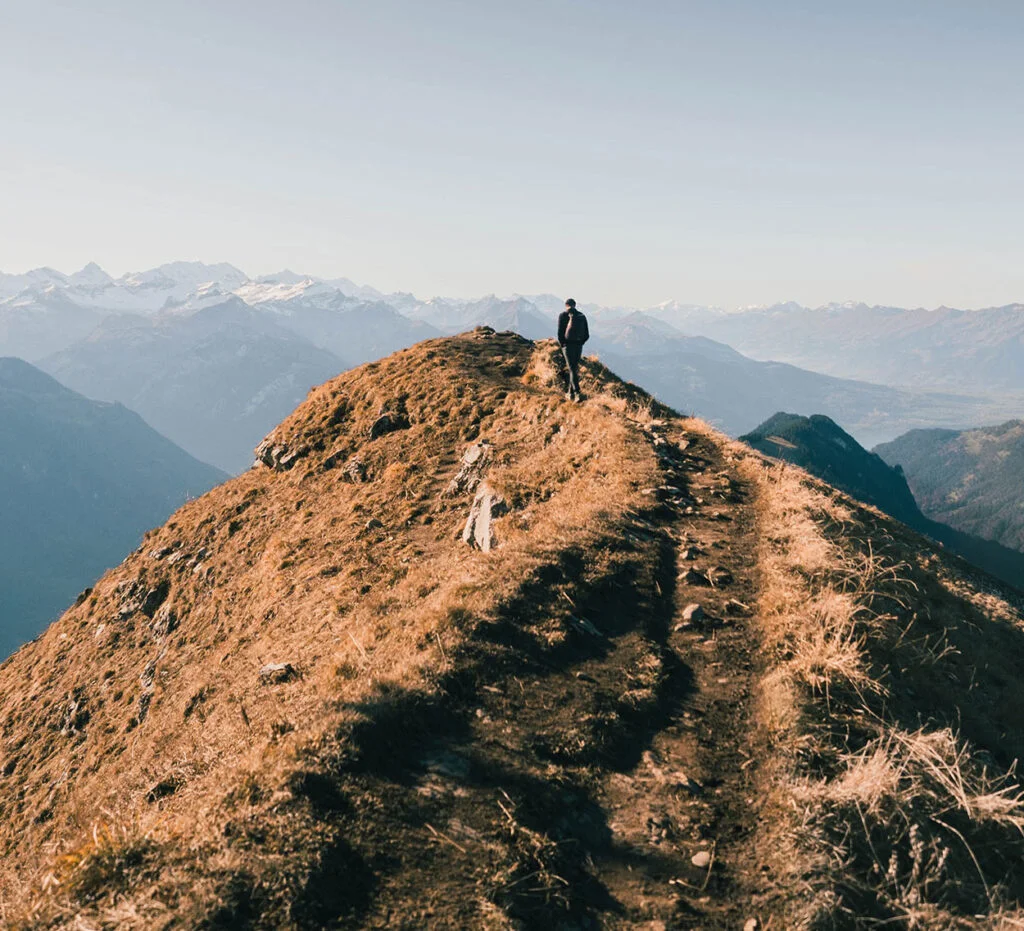
5. The Safety
Although one should always exercise discretion, Montenegro is one of the safest places to live and visit. Of course, there are a number of criminal activities, but the crime rate isn’t something to worry about. In crowded areas, over summer, like in the cities of Budva, Kotor, Sveti Stefan, and Herceg Novi (located in the coastline) there may be pickpocketing, so keep your valuables locked in a safe place and never bring all your money with you (or to the beach!)

6. Blue Flag Beaches
A blue flag beach – simply put – is where sand and water is unspoiled and environmentally protected for both marine life and humans alike. The criteria in order to gain this prestigious award is incredibly stringent and Montenegro has 18 of these incredible beaches.
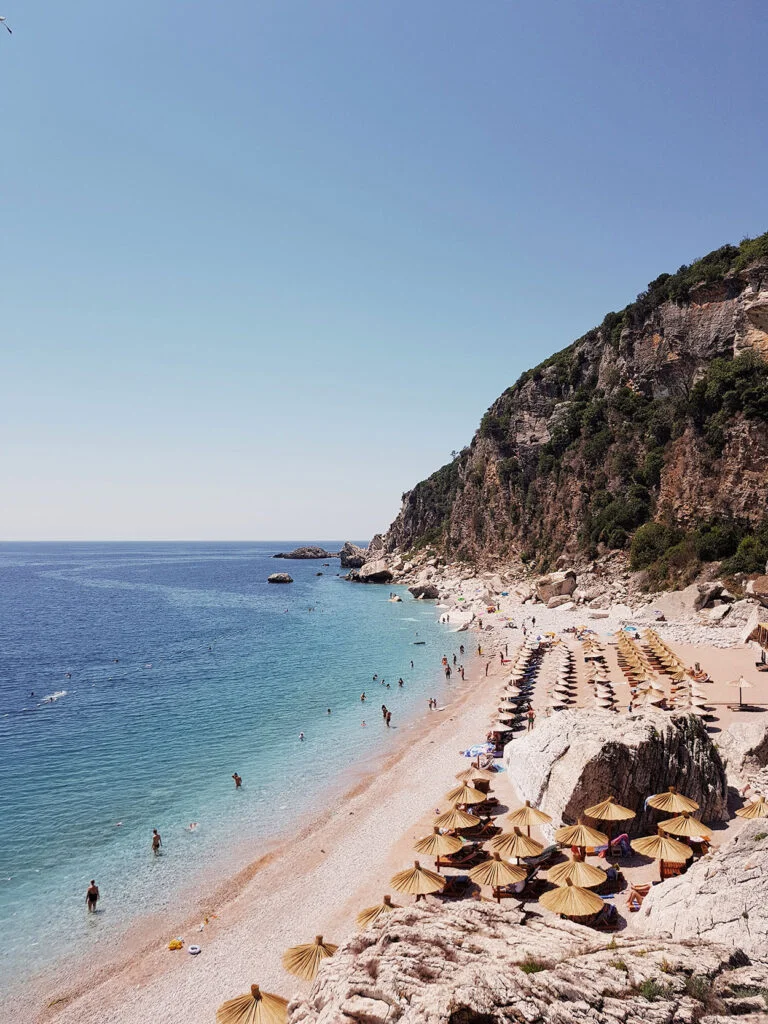
7. The “Great Wall of Kotor”
Recently said to be “giving the Great Wall of China a run for its money” the city walls of Kotor have been a popular tourist attraction for many years. Although it’s a rather intense walk up (over 1,300 steps) the views from both the church and the fortress of the Bay are simply extraordinarily beautiful.
8. The Locals
So often, Asia is looked at and noted as having some of the friendliest nations in the world. Clearly, they haven’t met many Montenegrins, the people in general are warm, welcoming and although there may be a language barrier for some, they are always willing to try and help you.
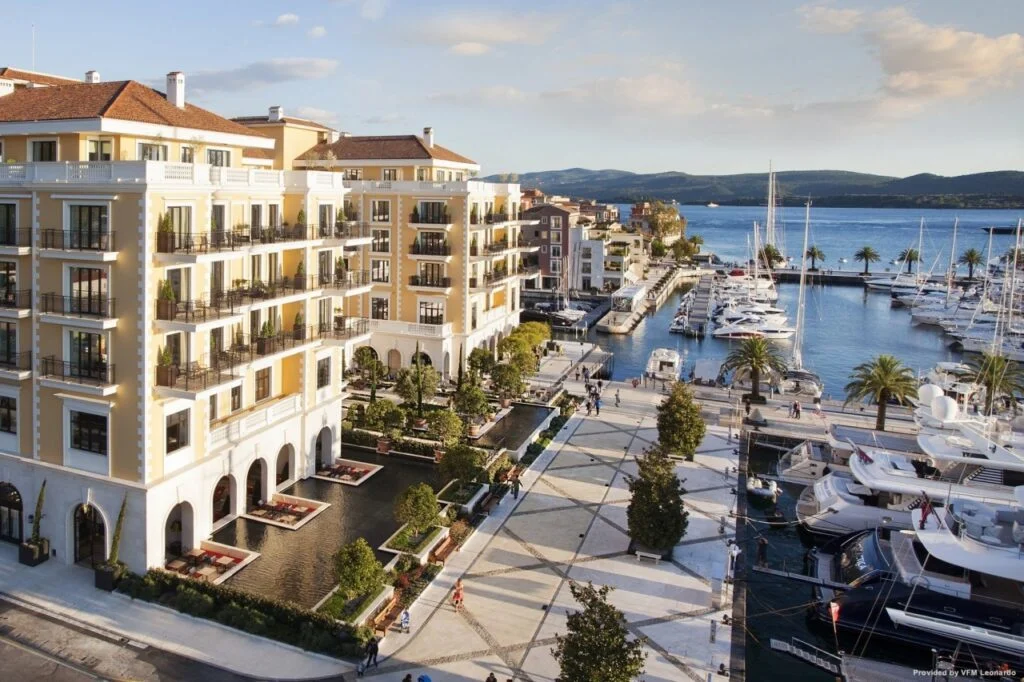
9. Porto Montenegro
Porto Montenegro is a luxury marina and residential village on the coast of Tivat. A destination in itself, the project which opened in 2009 is now a comprehensive resort of retail stores, restaurants, cafes, bars and entertainment all designed to complement its 400-berth superyacht marina and collection of private residences. For a taste of opulence and true luxury, stay at Regent Hotel or one of the apartments at Porto Montenegro and become part of the thriving community.
10. The Food
The cuisine in Montenegro is truly wonderful. When you are close to the sea, you can expect the most exquisite fresh Mediterranean seafood, but delve deeper inland and it changes completely to divine red meats made “under the bell” a traditional form of slow cooking in Montenegro over a fire. One thing you can be sure of (from both the coastal areas and inland) is fresh organic delicious vegetables.
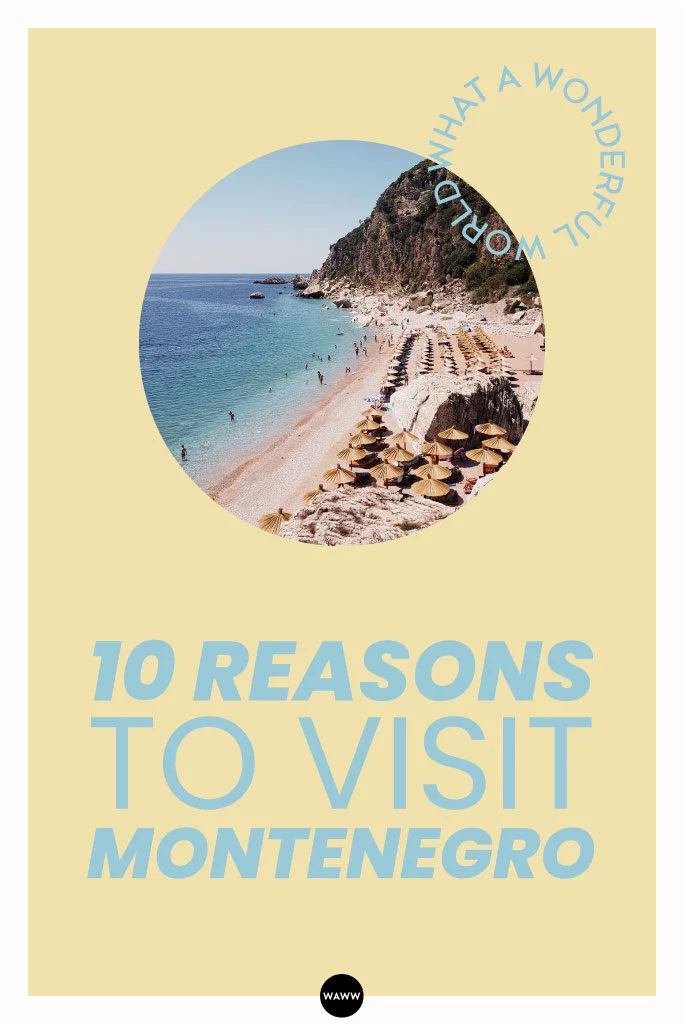
You Might Also Like
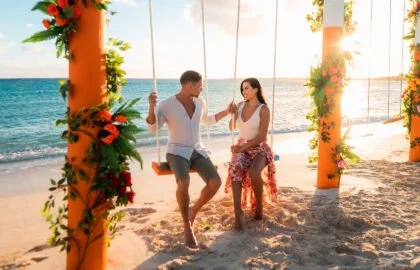
ROMANTIC GETAWAYS IN ANGUILLA: WEDDINGS, HONEYMOONS, AND VOW RENEWALS IN THE CARIBBEAN
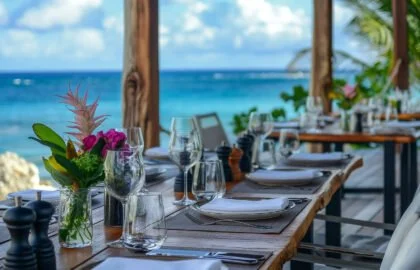
TOP RESTAURANTS IN ANGUILLA
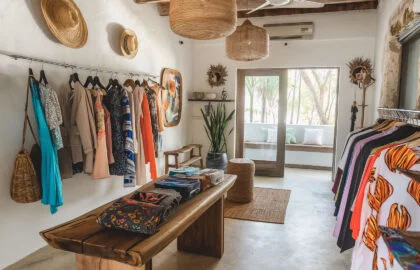
SHOPPING IN ANGUILLA: BEST ISLAND BOUTIQUES
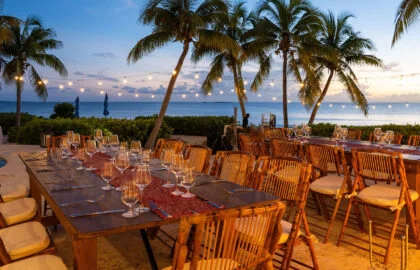
FOOD FESTIVALS IN ANGUILLA
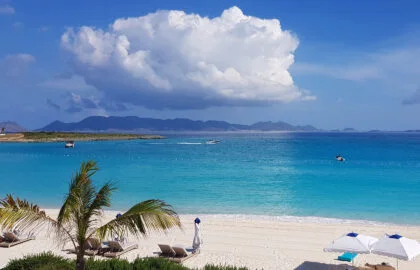
ECONOMY AND TOP INDUSTRIES OF ANGUILLA
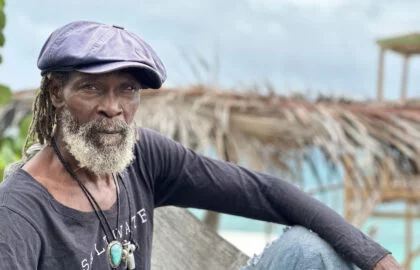
Bankie Banx: Free Spirit Reggae Legend
Save my name, email, and website in this browser for the next time I comment.
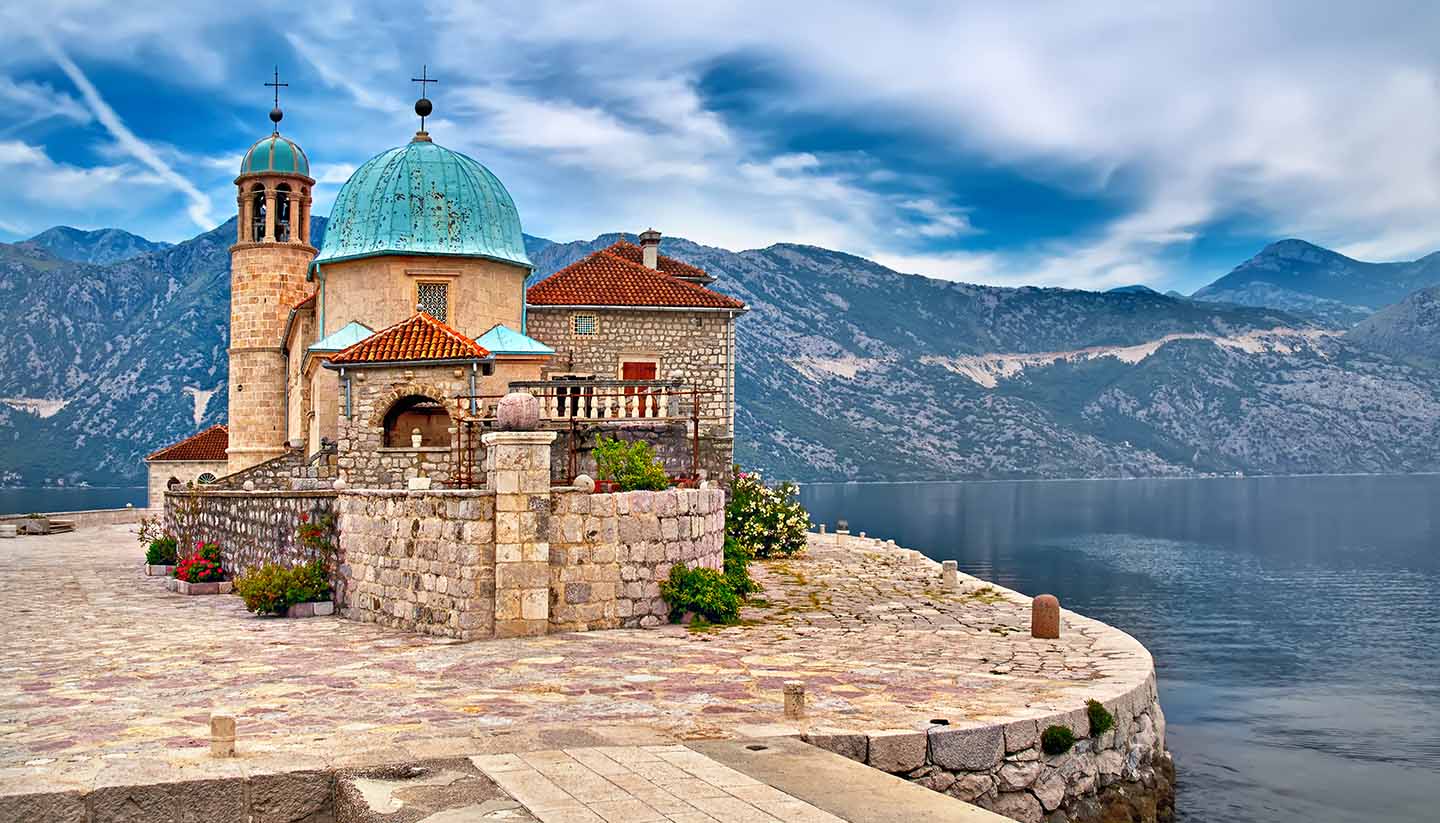
Introducing Montenegro
- About Montenegro
- Images of Montenegro
- History, language & culture
- Weather & geography
- Doing business & staying in touch
Plan your trip
- Travel to Montenegro
- Where to stay
While you’re there
- Things to see & do
- Shopping & nightlife
- Food & drink
- Getting around
Before you go
- Passport & visa
- Public Holidays
- Money & duty free
Book your flights
Montenegro History, Language and Culture
History of montenegro.
Montenegro is often considered a new country, having only gained independence from Serbia in 2006. However, its history goes back millennia, and it is closely intertwined with that of its Balkan neighbours.
Montenegro's first known inhabitants were the Illyrians, a warlike Bronze Age people present along much of the East Adriatic coast. The Ancient Greeks arrived in the 4th century BC, founding the coastal town of Budva, though by the 1st century AD the entire area was absorbed into Roman Empire. It is around this point that the Illyrians proper were extinct.
The Slavs arrived in the 7th century, mixed with descendants of the Romanised Illyrians, and adopted Christianity. A proud warrior people, they lived in clans, established their own royal family and secured independence from the Byzantines in the 11th century.
The Slavs inhabited much of present-day Montenegro, then known as Duklja, which became the front line in various wars between the Byzantine Empire and Serbian Kingdom. In 1186, Duklja, which had been weakened by infighting, was incorporated into the Serbian Kingdom.
The Serbian Empire, which evolved from the Serbian Kingdom, fell apart in the 14th century allowing the region to fall under the spell of the Ottoman Empire. WWI brought the Ottoman Empire to a dramatic end, with modern-day Montenegro forming part of a new country, Yugoslavia, in 1918.
After WWII, Yugoslavia was governed by Josip Tito, a “benevolent dictator” whose authoritarian regime kept a lid on the ethnic tensions that existed within Yugoslavia. Tito was a socialist revolutionary and under his rule most businesses were run as workers’ co-operatives. Being a non-aligned country, Yugoslavia kept good relations with both West and East, and allowed its people more freedoms than their socialist counterparts in the USSR.
When Yugoslavia began to break up during the 1990s, Montenegro remained loyal to Belgrade. Although there was no actual fighting on Montenegrin territory, the people suffered much economic hardship during that time. Eventually, in May 2006, Montenegro held a referendum and the people voted for independence from Serbia.
In 2008, Montenegro applied for EU membership, and in 2012, having proved that it was serious about tackling corruption and organised crime, it opened accession negotiations with the EU.
Did you know? • Having no currency of its own, Montenegro has unilaterally adopted the Euro, the first non-EU fully recognised country to do so (Kosovo has also adopted the Euro unilaterally). • Tito’s brand of socialism, often referred to as Titoism, pulled off the enviable feat of appealing to both communists and non-communists. • Brad Pitt's first lead role was back in 1988, in Dark Side of the Sun , which was filmed by former Yugoslav director, Bozidar Nikolic, in Kotor, Montenegro.
Montenegro Culture
Religion in montenegro.
Majority Eastern Orthodox (72%, according to the 2011 census), with a Muslim minority (19%) and a Roman Catholic minority (3.5%). The remainder are either Atheist or “other”.
Social Conventions in Montenegro
As in any other foreign country, you should respect local laws and social customs when visiting Montenegro. This is an Eastern Orthodox country, so you should dress respectably for visiting churches and monasteries – legs and shoulders covered, for both men and women.
Be cautious when talking about the war and the break-up of Yugoslavia - many people come from mixed families (which might include Eastern Orthodox Serbs, Roman Catholic Croats and Muslim Bosniaks), and “who was right” and “who was wrong” cannot be clearly defined. Also be aware that there is an Albanian minority (predominantly Muslim) in Montenegro, concentrated around Ulcinj. What various individuals think about the current situation in Kosovo will vary from person to person, so avoid entering into heated debate on this topic.
Montenegrins are traditional and patriarchal, and the society has a deeply ingrained aversion to homosexuality. Gay visitors are advised to limit public displays of affection. In October 2013, 60 people were injured at the Gay Pride march in Podgorica, when anti-gay protestors threw stones at the demonstrators, and the police responded with tear-gas.
Montenegrins enjoy drinking immensely but being able to hold one’s alcohol is a matter of pride, and public displays of drunken behaviour are considered degrading.
Nudism is allowed on designated beaches and topless bathing for women is generally accepted on all beaches.
Language in Montenegro
The official language is Montenegrin, which is basically the same as Serbian and can be written in either Latin or Cyrillic script. The small Albanian minority (approx 5%) speak Albanian.

Book a Hotel
© Columbus Travel Media Ltd. All rights reserved 2024

IMAGES
VIDEO
COMMENTS
This Montenegro travel guide has everything you need to know to plan your trip, save money, and make the most of your time in this overlooked and underappreciated destination! ... The Man in Seat 61 - This website is the ultimate guide to train travel anywhere in the world. They have the most comprehensive information on routes, times, prices ...
Explore the area of the Bay of Kotor and the Montenegrin coast with its enchanting beaches, mighty mountains, and ancient cities that bear the historical marks of Roman, Venetian and Byzantine conquerors! More.
You can travel to Montenegro for up to 90 days in any 180-day period without a visa. ... The World Travel Guide (WTG) is the flagship digital consumer brand within the Columbus Travel Media portfolio. A comprehensive guide to the world's best travel destinations, its print heritage stretches back more than 30 years, with the online portal ...
One afternoon, take a boat trip to the Blue Cave, submarine tunnel, and Our Lady of the Rocks. One day, take the hop-on-hop-off Montenegro bus to Risan, Perast, and Bajova Kula. (Or just take the Blue Line bus for cheaper, perhaps as far as Herceg Novi if you'd like.) One day, take a bus to Budva and Sveti Stefan.
Budget travel —Staying in hostels, using the bus to travel, eating street food or buying groceries — 15 to 20 EUR / day. Mid-range travel — Staying at a nice apartment or hotel, eating at restaurants and cafes, using the bus and/or renting a car — 30 to 60 EUR / day.
Sep 16, 2022 • 6 min read. One side to Montenegro is its gorgeous Adriatic coastline; the other is its rugged mountains. Here's how to enjoy Montenegro's stunning national parks. Beaches. Montenegro's best beaches are ringed by beautiful scenery. Camping. Montenegro's best outdoor adventures may surprise you.
Montenegro is truly the gem of the Balkans and a magical place to travel in. This stunning country lies nestled between Croatia, Bosnia & Herzegovina, Serbia, Kosovo and Albania, with a long stretch of its coastline on the beautiful Adriatic Sea. Montenegro will delight you with its endless array of places to visit with its fjord-like Bay of Kotor, beautiful beaches, the incredible turquoise ...
Trace the romantic Boka Kotorska, visiting the UNESCO World Heritage old towns in Kotor and Budva, and draw out your time in Perast, my favourite place in Montenegro, for as long as humanly possible. ... Discover all the best things to do in Montenegro with my latest travel guides. 21 Useful Things to Know Before You Go Travelling in Montenegro.
Where to go in Montenegro. Fact file. 17 days / from 3369 USD. Balkan Puzzle. A visit to the Balkans is an incredible experience, get ready for memorable flavours of the traditional cuisine and hospitable locals while you explore the sights: stunning panoramic views, tiny to the Adriatic coastline, idyllic and fertile valleys, pristine rivers ...
I've created this complete Montenegro travel guide with all the information you need to visit Montenegro for the first time. Despite its tiny size and population, Montenegro is a very diverse and fascinating country. ... Cetinje was the capital of Montenegro until the end of World War II. The city wears its history - and so also its beauty ...
7 days / from1739 USD. A Montenegro Adventure. This is exactly what it sounds like - a trip that will take you across the small, yet magical country of Montenegro and allow you to explore its beauty from the stunning coast on the South, to the mountains and lakes on the North. view trip ⤍. 9 days / from1946 USD.
Get travel tips, itinerary ideas, and more. Your ultimate Montenegro guide for 2023. Explore Montenegro's beautiful landscapes, historic sites, and vibrant culture. Get travel tips, itinerary ideas, and more. ... The capital city might not have the old-world charm of Kotor or the beaches of Budva, but it serves as a hub for travel within ...
Day 1: Tivat. Arriving at the international airport in Tivat on the Bay of Kotor is the perfect place to start your five days in Montenegro. (Many people also come to Montenegro via Dubrovnik airport as there are more flight services and the border crossing is very straightforward and close to Tivat).
The World Travel Guide (WTG) is the flagship digital consumer brand within the Columbus Travel Media portfolio. A comprehensive guide to the world's best travel destinations, its print heritage stretches back more than 30 years, with the online portal reaching its 20-year anniversary in 2019. Available in English, German and Spanish versions ...
3. Kotor. The most beautiful town in all of Montenegro in our opinion is Kotor. Located in a corner of the Bay, Kotor is also the most historic place to visit in the country. In fact, Kotor was ruled by various different groups, such as the Illyrians, Romans, Byzantines, and Venetians.
2 Biogradska Gora National Park — some of the last remaining untouched forests in Europe, and beautiful small lake where you can fish. 43.133331 19.016669. 3 Durmitor National Park — rafting through the Tara Canyon, the deepest canyon in Europe, is one of the most popular activities in Montenegro. 42.3667 18.8667.
Montenegro (Crna Gora) is a young Balkan country situated on the Adriatic Sea between Croatia, Bosnia, Albania, and Serbia. Though small in size, Montenegro has so much to offer: scenic beaches, gorgeous mountains, and charming towns. We absolutely loved our time in Montenegro and consider it one of our top travel destinations to date.
The World Travel Guide (WTG) is the flagship digital consumer brand within the Columbus Travel Media portfolio. A comprehensive guide to the world's best travel destinations, its print heritage stretches back more than 30 years, with the online portal reaching its 20-year anniversary in 2019. Available in English, German and Spanish versions ...
Transportation: For this itinerary, you can expect to pay around 8 EUR for buses between Kotor and Budva and that is it. Activities: Depending on how much you want to do in Montenegro, you can expect to pay approximately 140 EUR for organized day trips to visit Lovcen National Park, Tara Canyon, Durmitor National Park, and more.
The World Travel Guide (WTG) is the flagship digital consumer brand within the Columbus Travel Media portfolio. A comprehensive guide to the world's best travel destinations, its print heritage stretches back more than 30 years, with the online portal reaching its 20-year anniversary in 2019. Available in English, German and Spanish versions ...
Montenegro has plenty to offer families, couples and solo travellers. We've picked 10 great reasons why you should come to the small but majestic Balkan country, Montenegro, otherwise known as the "Land of the Black Mountains.". 1. Skadar Lake. Visit the largest lake in Europe.
Montenegro is often considered a new country, having only gained independence from Serbia in 2006. However, its history goes back millennia, and it is closely intertwined with that of its Balkan neighbours. ... The World Travel Guide (WTG) is the flagship digital consumer brand within the Columbus Travel Media portfolio. A comprehensive guide ...